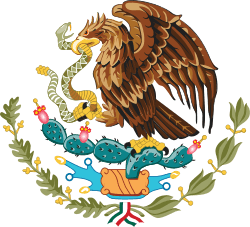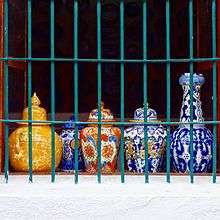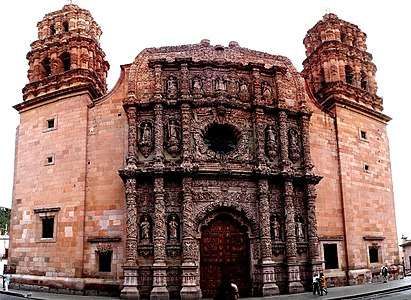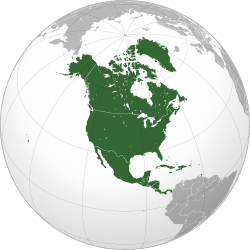Mexico
Mexico (Spanish: México [ˈmexiko] (![]()
![]()
United Mexican States Estados Unidos Mexicanos (Spanish) | |
|---|---|
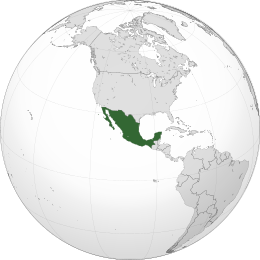 | |
| Capital and largest city | Mexico City 19°26′N 99°08′W |
| Official languages |
|
| Recognized regional languages | Spanish and 68 Amerindian languages[a] |
| National language | Spanish (de facto)[b] |
| Ethnic groups | 56 Amerindian and diverse foreign ethnic groups |
| Religion (2010)[1] | List of religions
|
| Demonym(s) | Mexican |
| Government | Federal presidential constitutional republic[2] |
| Andrés Manuel López Obrador | |
| Mónica Fernández Balboa | |
| Laura Angélica Rojas Hernández | |
| Legislature | Congress |
| Senate | |
| Chamber of Deputies | |
| Independence from Spain | |
• Declared | 16 September 1810[3] |
| 27 September 1821 | |
| 28 December 1836 | |
| 4 October 1824 | |
| 5 February 1857 | |
| 5 February 1917 | |
| Area | |
• Total | 1,972,550 km2 (761,610 sq mi) (13th) |
• Water (%) | 2.5 |
| Population | |
• 2020 estimate | 128,649,565[4] (10th) |
• Density | 61/km2 (158.0/sq mi) (142nd) |
| GDP (PPP) | 2020 estimate |
• Total | |
• Per capita | |
| GDP (nominal) | 2020 estimate |
• Total | |
• Per capita | |
| Gini (2016) | high |
| HDI (2018) | high · 76th |
| Currency | Peso (MXN) |
| Time zone | UTC−8 to −5 (See Time in Mexico) |
| UTC−7 to −5 (varies) | |
| Driving side | right |
| Calling code | +52 |
| ISO 3166 code | MX |
| Internet TLD | .mx |
Pre-Columbian Mexico traces its origins to 8,000 BC and is identified as one of six cradles of civilization;[14] it was home to many advanced Mesoamerican civilizations, most well-known among them the Maya and the Aztecs. In 1521, the Spanish Empire conquered and colonized the territory from its base in Mexico City, which then became known as New Spain. The Catholic Church played an important role as millions of indigenous inhabitants converted. These populations were heavily exploited to mine rich deposits of precious material, which became a major source of wealth for the Spanish.[15] Mexico became an independent nation state after the successful Mexican War of Independence against Spain in 1821.[16]
The War of Texas Independence in 1836 and the Mexican–American War led to huge territorial losses in Mexico's sparsely populated north, contiguous to the United States. The newly instituted reforms that granted protection to indigenous communities, and curtailed the power of the military and the church, were enshrined in the Constitution of 1857. This triggered the War of the Reform and French intervention. Maximilian Habsburg was installed as emperor by France and Benito Juárez kept an opposing republican government in exile. The following decades were marked by instability and dictatorship of Porfirio Díaz, who sought to modernize Mexico and restore order.[16] The Porfiriato ended with the Mexican Revolution in 1910 and the winning Constitutionalist faction drafted a new 1917 Constitution. The revolutionary generals of the winning northern faction dominated the 1920s and served as presidents, but the 1928 assassination of Alvaro Obregón led to the formation of the Institutional Revolutionary Party in 1929, under which Mexico was a one-party state until 2000.[17][18][19][20]
Mexico is a developing country, ranking 76th on the Human Development Index, but is considered a newly industrialized state by several analysts.[21][22][23][24] It has the world's 15th-largest economy by nominal GDP and the 11th-largest by PPP, with the United States being its largest economic partner.[25][26] The large economy, area, population and politics make Mexico a regional power and a middle power,[27][28][29][30] and is often identified as an emerging power.[31] However, Mexico continues to struggle with social inequalities, poverty and extensive crime; the country ranks poorly on the Global Peace Index.[32] Since 2006, the conflict between the government and drug trafficking syndicates lead to over 120,000 deaths.[33]
Mexico ranks first in the Americas and 7th in the world for the number of UNESCO World Heritage Sites.[34][35][36] Mexico is an ecologically megadiverse country, ranking 5th in the world for its natural biodiversity.[37] Mexico receives a significant number of tourists every year; in 2018, it was the 6th most-visited country in the world, with 39 million international arrivals.[38] Mexico is a member of the United Nations (UN), the World Trade Organization (WTO), the G8+5, the G20, the Uniting for Consensus group of the UN, and the Pacific Alliance trade bloc.
Etymology
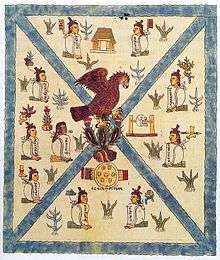
Mēxihco is the Nahuatl term for the heartland of the Aztec Empire, namely the Valley of Mexico and surrounding territories, with its people being known as the Mexica. The terms are plainly linked; it is generally believed that the toponym for the valley was the origin of the primary ethnonym for the Aztec Triple Alliance, but it may have been the other way around.[39] In the colonial era, when Mexico was called New Spain, this central region became the Intendency of Mexico, during the eighteenth-century reorganization of the empire, the Bourbon Reforms. After the colony achieved independence from the Spanish Empire in 1821, said territory came to be known as the State of Mexico, with the new country being named after its capital: Mexico City, which itself was founded in 1524 on the site of the ancient Mexica capital of Mexico-Tenochtitlan.
The official name of the country has changed as the form of government has changed. The declaration of independence signed on 6 November 1813 by the deputies of the Congress of Anáhuac called the territory América Septentrional (Northern America) in the Plan of Iguala (1821). On two occasions (1821–1823 and 1863–1867), the country was known as Imperio Mexicano (Mexican Empire). All three federal constitutions (1824, 1857 and 1917, the current constitution) used the name Estados Unidos Mexicanos[40]—or the variant Estados-Unidos Mexicanos,[41] all of which have been translated as "United Mexican States". The phrase República Mexicana, "Mexican Republic", was used in the 1836 Constitutional Laws.[42]
History
Indigenous civilizations
The earliest human artifacts in Mexico are chips of stone tools found near campfire remains in the Valley of Mexico and radiocarbon-dated to circa 10,000 years ago.[43] Mexico is the site of the domestication of maize, tomato, and beans, which produced an agricultural surplus. This enabled the transition from paleo-Indian hunter-gatherers to sedentary agricultural villages beginning around 5000 BC.[44] In the subsequent formative eras, maize cultivation and cultural traits such as a mythological and religious complex, and a vigesimal (base 20) numeric system, were diffused from the Mexican cultures to the rest of the Mesoamerican culture area.[45] In this period, villages became more dense in terms of population, becoming socially stratified with an artisan class, and developing into chiefdoms. The most powerful rulers had religious and political power, organizing the construction of large ceremonial centers developed.[46]
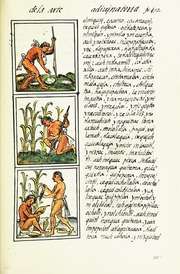
The earliest complex civilization in Mexico was the Olmec culture, which flourished on the Gulf Coast from around 1500 BC. Olmec cultural traits diffused through Mexico into other formative-era cultures in Chiapas, Oaxaca and the Valley of Mexico. The formative period saw the spread of distinct religious and symbolic traditions, as well as artistic and architectural complexes.[47] The formative-era of Mesoamerica is considered one of the six independent cradles of civilization.[48] In the subsequent pre-classical period, the Maya and Zapotec civilizations developed complex centers at Calakmul and Monte Albán, respectively. During this period the first true Mesoamerican writing systems were developed in the Epi-Olmec and the Zapotec cultures. The Mesoamerican writing tradition reached its height in the Classic Maya Hieroglyphic script. The earliest written histories date from this era. The tradition of writing was important after the Spanish conquest in 1521.[49]
In Central Mexico, the height of the classic period saw the ascendancy of Teotihuacán, which formed a military and commercial empire whose political influence stretched south into the Maya area as well as north. Teotihuacan, with a population of more than 150,000 people, had some of the largest pyramidal structures in the pre-Columbian Americas.[50] After the collapse of Teotihuacán around 600 AD, competition ensued between several important political centers in central Mexico such as Xochicalco and Cholula. At this time, during the Epi-Classic, Nahua peoples began moving south into Mesoamerica from the North, and became politically and culturally dominant in central Mexico, as they displaced speakers of Oto-Manguean languages.
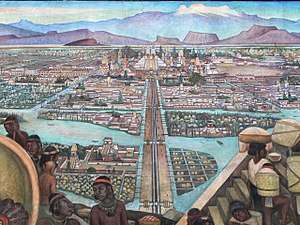
During the early post-classic era (ca. 1000-1519 CE), Central Mexico was dominated by the Toltec culture, Oaxaca by the Mixtec, and the lowland Maya area had important centers at Chichén Itzá and Mayapán. Toward the end of the post-Classic period, the Mexica established dominance, establishing a political and economic empire based in the city of Tenochtitlan (modern Mexico City), extending from central Mexico to the border with Guatemala.[51] Alexander von Humboldt popularized the modern usage of "Aztec" as a collective term applied to all the people linked by trade, custom, religion, and language to the Mexica state and Ēxcān Tlahtōlōyān, the Triple Alliance.[52] In 1843, with the publication of the work of William H. Prescott, it was adopted by most of the world, including 19th-century Mexican scholars who considered it a way to distinguish present-day Mexicans from pre-conquest Mexicans. This usage has been the subject of debate since the late 20th century.[53]
The Aztec empire was an informal or hegemonic empire because it did not exert supreme authority over the conquered territories; it was satisfied with the payment of tributes from them. It was a discontinuous empire because not all dominated territories were connected; for example, the southern peripheral zones of Xoconochco were not in direct contact with the center. The hegemonic nature of the Aztec empire was demonstrated by their restoration of local rulers to their former position after their city-state was conquered. The Aztec did not interfere in local affairs, as long as the tributes were paid.[54]
The Aztec of Central Mexico built a tributary empire covering most of central Mexico.[55] The Aztec were noted for practicing human sacrifice on a large scale. Along with this practice, they avoided killing enemies on the battlefield. Their warring casualty rate was far lower than that of their Spanish counterparts, whose principal objective was immediate slaughter during battle.[56] This distinct Mesoamerican cultural tradition of human sacrifice ended with the gradually Spanish conquest in the 16th century. Over the next centuries many other Mexican indigenous cultures were conquered and gradually subjected to Spanish colonial rule.[57]
Conquest of the Aztec Empire (1519–1521)
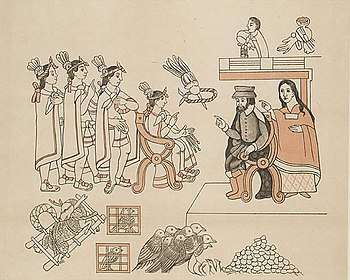
Although the Spanish had established colonies in the Caribbean starting in 1493, it was not until the second decade of the sixteenth century that they began exploring the coast of Mexico. The Spanish first learned of Mexico during the Juan de Grijalva expedition of 1518. The natives kept "repeating: Colua, Colua, and Mexico, Mexico, but we [explorers] did not know what Colua or Mexico meant", until encountering Montezuma's governor at the mouth of the Rio de las Banderas.[58]:33–36 The Spanish conquest of the Aztec Empire began in February 1519 when Hernán Cortés landed on the Gulf Coast and founded the Spanish city of Veracruz. Around 500 conquistadores, along with horses, cannons, swords, and long guns gave the Spanish some technological advantages over indigenous warriors, but key to the Spanish victory was making strategic alliances with disgruntled indigenous city-states (altepetl) who supplied the Spaniards and fought with them against the Aztec Triple Alliance. Also important to the Spanish victory was Cortés's cultural translator, Malinche, a Nahua woman enslaved in the Maya area whom the Spanish acquired as a gift. She quickly learned Spanish and gave strategic advise about how to deal with both indigenous allies and indigenous foes.[59] The unconquered city-state of Tlaxcala allied with the Spanish against their enemies, the Aztecs of Tenochtitlan. The Spanish gained other indigenous allies, who also joined in the war for their own reasons.
We know so much about the conquest because it is among the best documented events in world history from multiple points of view. There are accounts by the Spanish leader Cortés[60] and multiple other Spanish participants, including Bernal Díaz del Castillo.[61][62] There are indigenous accounts in Spanish, Nahuatl, and pictorial narratives by allies of the Spanish, most prominently the Tlaxcalans, as well as Texcocans[63] and Huejotzincans, and the defeated Mexican themselves, recorded in the last volume of Bernardino de Sahagún's General History of the Things of New Spain.[64][65][66]
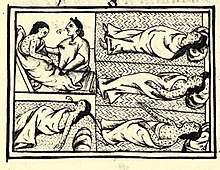
When the Spaniards arrived, the ruler of the Aztec empire was Moctezuma II, who after a delay allowed the Spanish to proceed inland to Tenochtitlan. The Spanish captured him, holding him hostage. He died while in their custody and the Spanish retreated from Tenochtitlan in great disarray. His successor and brother Cuitláhuac took control of the Aztec empire, but was among the first to fall from the first smallpox epidemic in the area a short time later.[67] Unintentionally introduced by Spanish conquerors, among whom smallpox, measles, and other contagious diseases were endemic, epidemics of Old World infectious diseases ravaged Mesoamerica starting in the 1520s. The exact number of deaths is disputed, but unquestionably more than 3 million natives who they had no immunity.[68] Other sources, however, mentioned that the death toll of the Aztecs might have reached 15 million (out of a population of less than 30 million) although such a high number conflicts with the 350,000 Aztecs who ruled an empire of 5 million or 10 million.[69] Severely weakened, the Aztec empire was easily defeated by Cortés and his forces on his second return with the help of state of Tlaxcala whose population estimate was 300,000.[70] The native population declined 80–90% by 1600 to 1–2.5 million. Any population estimate of pre-Columbian Mexico is bound to be a guess but 8–12 million is often suggested for the area encompassed by the modern nation.
The territory became part of the Spanish Empire under the name of New Spain in 1535.[71] Mexico City was systematically rebuilt by Cortés following the Fall of Tenochtitlan in 1521. Much of the identity, traditions and architecture of Mexico developed during the 300-year colonial period from 1521 to independence in 1821.[72]
Viceroyalty of New Spain (1521–1821)
.jpg)
The 1521 capture Tenochtitlan and immediate founding of the Spanish capital Mexico City on its ruins was the beginning of a 300-year-long colonial era during which Mexico was known as Nueva España (New Spain). The Kingdom of New Spain was created from the remnants of the Aztec empire. The two pillars of Spanish rule were the State and the Roman Catholic Church, both under the authority of the Spanish crown. In 1493 the pope had granted sweeping powers to the Spanish crown, with the proviso that the crown spread Christianity in its new realms. In 1524, King Charles I created the Council of the Indies based in Spain to oversee State power its overseas territories; in New Spain the crown established a high court in Mexico City, the Real Audiencia, and then in 1535 created the viceroyalty. The viceroy was highest official of the State. In the religious sphere, the diocese of Mexico was created in 1530 and elevated to the Archdiocese of Mexico in 1546, with the archbishop as the head of the ecclesiastical hierarchy, overseeing Roman Catholic clergy. Castilian Spanish was the language of rulers. The Catholic faith the only one permitted, with non-Catholics (Jews and Protestants) and Catholics (excluding Indians) holding unorthodox views being subject to the Mexican Inquisition, established in 1571.[73]
In the first half-century of Spanish rule, a network of Spanish cities was created, sometimes on pre-Hispanic sites. The capital Mexico City was and remains the premier city. Cities and towns were hubs of civil officials, ecclesiastics, business, Spanish elites, and mixed-race and indigenous artisans and workers. When deposits of silver were discovered in sparsely populated northern Mexico, far from the dense populations of central Mexico, the Spanish secured the region against fiercely resistant indigenous Chichimecas. The Viceroyalty at its greatest extent included the territories of modern Mexico, Central America as far south as Costa Rica, and the western United States. The Viceregal capital Mexico City also administrated the Spanish West Indies (the Caribbean), the Spanish East Indies (that is, the Philippines), and Spanish Florida. In 1819, the Spain signed the Adams-Onís Treaty with the United States, setting New Spain's northern boundary.[74]
.png)
The population of Mexico was overwhelmingly indigenous and rural during the entire colonial period and beyond, despite the massive decrease in their numbers due to epidemic diseases. Diseases such as smallpox, measles, and others were introduced by Europeans and African slaves, especially in the sixteenth century. The indigenous population stabilized around one to one and a half million individuals in the 17th century from the most commonly accepted five to thirty million pre-contact population.[75] During the three hundred years of the colonial era, Mexico received between 400,000 and 500,000 Europeans,[76] between 200,000 and 250,000 African slaves.[77] and between 40,000 and 120,000 Asians.[78][79]
The first census in Mexico (then known as New Spain) that included an ethnic classification was the 1793 census. Also known as the Revillagigedo census. Most of its original datasets have reportedly been lost, thus most of what is known about it nowadays comes from essays and field investigations made by academics who had access to the census data and used it as reference for their works such as German scientist Alexander von Humboldt. Europeans ranged from 18% to 22% of New Spain's population, Mestizos from 21% to 25%, Indians from 51% to 61% and Africans were between 6,000 and 10,000. The total population ranged from 3,799,561 to 6,122,354. It is concluded that the population growth trends of whites and mestizos were even, while the percentage of the indigenous population decreased at a rate of 13%–17% per century mostly due the later having higher mortality rates for living in remote locations and being in constant war with the colonists.[80] Independent-era Mexico eliminated the legal basis of the Colonial caste system which led to exclusion of racial classification in the censuses to come.
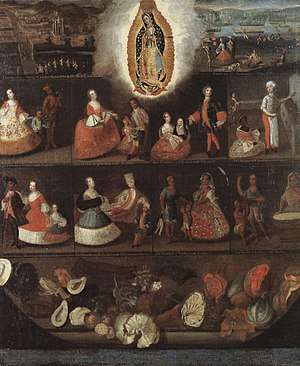
Colonial law with Spanish roots was introduced and attached to native customs creating a hierarchy between local jurisdiction (the Cabildos) and the Spanish Crown. Upper administrative offices were closed to native-born people, even those of pure Spanish blood (criollos). Administration was based on the racial separation. Society was organized in a racial hierarchy, with whites on top, mixed-race persons and blacks in the middle, and indigenous at the bottom. There were formal legal designations of racial categories. The Republic of Spaniards (República de Españoles) comprised European- and American-born Spaniards, mixed-race castas, and black Africans. The Republic of Indians (República de Indios) comprised the indigenous populations, which the Spanish lumped under the term Indian (indio), a Spanish colonial social construct which indigenous groups and individuals rejected as a category. Spaniards were exempt from paying tribute, Spanish men had access to higher education, could hold civil and ecclesiastical offices, were subject to the Inquisition, and liable for military service when the standing military was established in the late eighteenth century. Indigenous paid tribute, but were exempt from the Inquisition, indigenous men were excluded from the priesthood; and exempt from military service.
Although the racial system appears fixed and rigid, there was some fluidity within it, and racial domination of whites was not complete.[82] Since the indigenous population of New Spain was so large, there was less labor demand for expensive black slaves than other parts of Spanish America.[83][84] In the late eighteenth century the crown instituted reforms that privileged Iberian-born Spaniards (peninsulares) over American-born (criollos), limiting their access to offices. This discrimination between the two became a sparking point of discontent for white elites in the colony.[85]
The Marian apparition of the Virgin of Guadalupe said to have appeared to the indigenous Juan Diego in 1531 gave impetus to the evangelization of central Mexico.[86][87] The Virgin of Guadalupe became a symbol for American-born Spaniards' (criollos) patriotism, seeking in her a Mexican source of pride, distinct from Spain.[88] The Virgin of Guadalupe was invoked by the insurgents for independence who followed Father Miguel Hidalgo during the War of Independence.[87]

The rich deposits of silver, particularly in Zacatecas and Guanajuato, resulted in silver extraction dominating the economy of New Spain. Taxes on silver production became a major source of income for Spain. Other important industries were the haciendas and mercantile activities in the main cities and ports.[89] Wealth created during the colonial era spurred the development of New Spanish Baroque.
As a result of its trade links with Asia, the rest of the Americas, Africa and Europe and the profound effect of New World silver, central Mexico was one of the first regions to be incorporated into a globalized economy. Being at the crossroads of trade, people and cultures, Mexico City has been called the "first world city".[90] The Nao de China (Manila Galleons) operated for two and a half centuries and connected New Spain with Asia. Silver and the red dye cochineal were shipped from Veracruz to Atlantic ports in the Americas and Spain. Veracruz was also the main port of entry in mainland New Spain for European goods, immigrants from Spain, and African slaves. The Camino Real de Tierra Adentro connected Mexico City with the interior of New Spain. Mexican silver pesos became the first globally used currency.
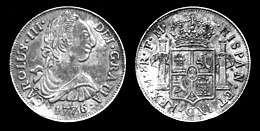
Spanish forces, sometimes accompanied by native allies, led expeditions to conquer territory or quell rebellions through the colonial era. Notable Amerindian revolts in sporadically populated northern New Spain include the Chichimeca War (1576–1606),[91] Tepehuán Revolt (1616–1620),[92] and the Pueblo Revolt (1680), the Tzeltal Rebellion of 1712 was a regional Maya revolt.[93] Most rebellions were small-scale and local, posing no major threat to the ruling elites.[94] To protect Mexico from the attacks of English, French, and Dutch pirates and protect the Crown's monopoly of revenue, only two ports were open to foreign trade—Veracruz on the Atlantic and Acapulco on the Pacific. Among the best-known pirate attacks are the 1663 Sack of Campeche[95] and 1683 Attack on Veracruz.[96] Of greater concern to the crown was of foreign invasion, especially after Britain seized in 1762 the Spanish ports of Havana, Cuba and Manila, the Philippines in the Seven Years' War. It created a standing military, increased coastal fortifications, and expanded the northern presidios and missions into Alta California. The volatility of the urban poor in Mexico City was evident in the 1692 riot in the Zócalo. The riot over the price of maize escalated to a full-scale attack on the seats of power, with the viceregal palace and the archbishop's residence attacked by the mob.[82]
Due to the importance of New Spain administrative base, Mexico was the location of the first printing shop (1539),[97] first university (1551),[98] first public park (1592),[99] and first public library (1640) in the Americas,[100] among other institutions. Important artists of the colonial period, include the writers Juan Ruiz de Alarcón, Carlos de Sigüenza y Góngora, and Sor Juana Inés de la Cruz, painters Cristóbal de Villalpando and Miguel Cabrera, and architect Manuel Tolsá. The Academy of San Carlos (1781) was the first major school and museum of art in the Americas.[101] German scientist Alexander von Humboldt spent a year in Mexico, finding the scientific community in the capital active and learned. He met Mexican scientist Andrés Manuel del Río Fernández, who discovered the element vanadium in 1801.[102] Many Mexican cultural features including tequila,[103] first distilled in the 16th century, charreria (17th),[104] mariachi (18th) and Mexican cuisine, a fusion of American and European (particularly Spanish) cuisine, arose during the colonial era.
War of Independence (1810–1821)
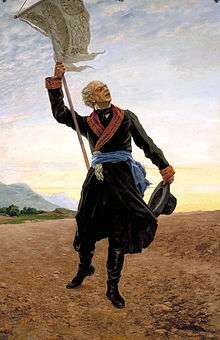
On 16 September 1810, a "loyalist revolt" against the ruling junta was declared by priest Miguel Hidalgo y Costilla, in the small town of Dolores, Guanajuato.[105] This event, known as the Cry of Dolores (Spanish: Grito de Dolores) is commemorated each year, on 16 September, as Mexico's independence day.[106] The first insurgent group was formed by Hidalgo, the Spanish viceregal army captain Ignacio Allende, the militia captain Juan Aldama and La Corregidora (English: "The Magistrate") Josefa Ortiz de Domínguez. Hidalgo and some of his soldiers were captured and executed by firing squad in Chihuahua, on 31 July 1811.[107]:17–27
Following Hidalgo's death, the leadership was assumed by Ignacio López Rayón and then by the priest José María Morelos, who occupied key southern cities with the support of Mariano Matamoros and Nicolás Bravo.[107]:35–37 In one notable incident, Nicolas Bravo captured 200 royalist soldiers, whom Morelos ordered should be executed in revenge of the murder of Bravo's father. In an act of mercy, Bravo instead pardoned the prisoners, most of whom then joined the insurgent cause.[107]:40–41 In 1813 the Congress of Chilpancingo was convened and, on 6 November, signed the "Solemn Act of the Declaration of Independence of Northern America". This Act also abolished slavery and the caste system.[107]:44–50 Morelos was captured and executed on 22 December 1815.[107]:46
In subsequent years, the insurgency was near collapse, but in 1820 Viceroy Juan Ruiz de Apodaca sent an army under the criollo general Agustín de Iturbide against the troops of Vicente Guerrero who had among his trusted soldiers, Filipino Mexicans who were concentrated in Guerrero, a state later named after Vicente Guerrero himself and where the Mexican flag was first sewn. Chief among the Filipino-Mexican soldiers was General Isidoro Montes de Oca who defeated Royalist armies 3 times his force's size.[108] Then, the Criollo Royalist, Agustin Iturbide, instead of attacking Vicente Guerrero, approached Guerrero to join forces as he was impressed with his tenacity despite fighting larger odds, and on 24 August 1821 representatives of the Spanish Crown and Iturbide signed the "Treaty of Córdoba" and the "Declaration of Independence of the Mexican Empire", which recognized the independence of Mexico under the terms of the "Plan of Iguala".[107]:53–80
Mexico's short recovery after the War of Independence was soon cut short again by the civil wars, foreign invasion and occupation, and institutional instability of the mid-19th century, which lasted until the government of Porfirio Díaz reestablished conditions that paved the way for economic growth. The conflicts that arose from the mid-1850s had a profound effect because they were widespread and made themselves perceptible in the vast rural areas of the countries, involved clashes between castes, different ethnic groups, and haciendas, and entailed a deepening of the political and ideological divisions between republicans and monarchists.[109]
Mexican Empire and the Early Republic (1821–1855)
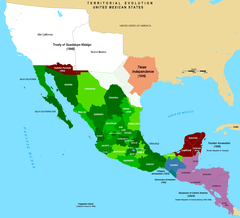
The first thirty-five years after Mexico's independence were marked by political instability and the changing form of the Mexican State, from a monarchy to a federated republic. There were military coups d'état, foreign invasions, ideological conflict between Conservatives and Liberals, and economic stagnation. Catholicism remained the only permitted religious faith and the Catholic Church as an institution retained its special privileges, prestige, and property, a bulwark of Conservatism. The army, another Conservative institution, also retained its privileges. Former Royal Army General Agustín de Iturbide, became regent, as newly independent Mexico sought a constitutional monarch from Europe. When no member of a European royal house desired the position, Iturbide himself was declared Emperor Agustín I. The young and weak United States was the first country to recognize Mexico's independence, sending an ambassador to the court of the emperor and sending a message to Europe via the Monroe Doctrine not to intervene in Mexico. The emperor's rule was short (1822–23) and he was overthrown by army officers.[107]:87–88
The successful rebels established the First Mexican Republic. In 1824, a constitution of a federated republic was promulgated and former insurgent general Guadalupe Victoria became the first president of the newly born republic.[107]:94–95 Central America, including Chiapas, left the union. In 1829, former insurgent general and fierce Liberal Vicente Guerrero, a signatory of the Plan de Iguala that achieved independence, became president in a disputed election. During his short term in office, April to December 1829, he abolished slavery. As a visibly mixed-race man of modest origins, Guerrero was seen by white political elites as an interloper.[110] His Conservative vice president, former Royalist General Anastasio Bustamante, led a coup against him and Guerrero was judicially murdered.[111] There was constant strife between Liberals, supporters of a federal form of decentralized government and often called Federalists and their political rivals, the Conservatives, who proposed a hierarchical form of government, were termed Centralists.[107]:101–115, 125–127
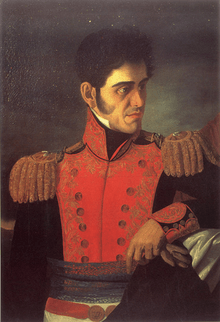
Mexico's ability to maintain its independence and establish a viable government was in question. Spain attempted to reconquer its former colony during the 1820s, but eventually recognized its independence. France attempted to recoup losses it claimed for its citizens during Mexico's unrest and blockaded the Gulf Coast during the so-called Pastry War of 1838–39.[112] Santa Anna lost a leg in combat during this conflict, which he used for political purposes. Emerging as a national hero in defending Mexico was creole army general, Antonio López de Santa Anna, who had participated in the overthrow of the emperor, fought the Spanish invasion, and came to dominate the politics for the next 25 years, until his own overthrow in 1855.
Mexico also contended with indigenous groups which controlled territory that Mexico claimed in the north. The Comanche controlled a huge territory in the sparsely populated region of central and northern Texas.[113] Wanting to stabilize and develop the frontier, the Mexican government encouraged Anglo-American immigration into present-day Texas. The region bordered the United States, and was territory controlled by Comanches. There were few settlers from central Mexico moving to this remote and hostile territory. Mexico by law was a Catholic country; the Anglo Americans were primarily Protestant English speakers from the southern United States. Some brought their black slaves, which after 1829 was contrary to Mexican law. Santa Anna sought to centralize government rule, suspending the constitution and promulgating the Seven Laws, which place power in his hands. When he suspended the 1824 Constitution, civil war spread across the country. Three new governments declared independence: the Republic of Texas, the Republic of the Rio Grande and the Republic of Yucatán.[107]:129–137
The largest blow to Mexico was the U.S. invasion of Mexico in 1846 in the Mexican American War. Mexico lost much of its sparsely populated northern territory, sealed in the 1848 Treaty of Guadalupe Hidalgo. Despite that disastrous loss, Conservative Santa Anna returned to the presidency yet again and then was ousted and exiled in the Liberal Revolution of Ayutla.
Liberal Reform, French Intervention, and Restored Republic (1855–1876)
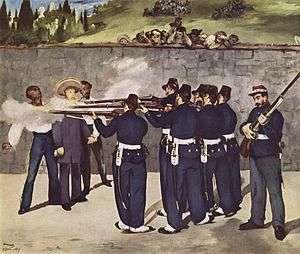
The overthrow of Santa Anna and the establishment of a civilian government by Liberals allowed them to enact laws that they considered vital for Mexico's economic development. It was a prelude to more civil wars and yet another foreign invasion. The Liberal Reform attempted to modernize Mexico's economy and institutions along liberal principles. They promulgated a new Constitution of 1857, separating Church and State, stripping the Conservative institutions of the Church and the military of their special privileges (fueros); mandating the sale of Church-owned property and sale of indigenous community lands, and secularizing education.[114] Conservatives revolted, touching off civil war between rival Liberal and Conservative governments (1858–61).
The Liberals defeated the Conservative army on the battlefield, but Conservatives sought another solution to gain power via foreign intervention by the French. Mexican conservatives asked Emperor Napoleon III to place a European monarch as head of state in Mexico. The French Army defeated the Mexican Army and placed Maximilian Hapsburg on the newly-established throne of Mexico, supported by Mexican Conservatives and propped up by the French Army. The Liberal republic under Benito Juárez was basically a government in internal exile, but with the end of the Civil War in the U.S. in April 1865, that government began aiding the Mexican Republic. Two years later, the French Army withdrew its support, Maximilian remained in Mexico rather than return to Europe. Republican forces captured him and he was executed in Querétaro, along with two Conservative Mexican generals. The "Restored Republic" saw the return of Juárez, who was "the personification of the embattled republic,"[115] as president.
The Conservatives had been not only defeated militarily, but also discredited politically for their collaboration with the French invaders. Liberalism became synonymous with patriotism.[116] The Mexican Army that had its roots in the colonial royal army and then the army of the early republic was destroyed. New military leaders had emerged from the War of the Reform and the conflict with the French, most notably Porfirio Díaz, a hero of the Cinco de Mayo, who now sought civilian power. Juárez won re-election in 1867, but was challenged by Díaz, who criticized him for running for re-election. Díaz then rebelled, crushed by Juárez. Having won re-election, Juárez died in office of natural causes in July 1872, and Liberal Sebastián Lerdo de Tejada became president, declaring a "religion of state" for rule of law, peace, and order. When Lerdo ran for re-election, Díaz rebelled against the civilian president, issuing the Plan of Tuxtepec. Díaz had more support and waged guerrilla warfare against Lerdo. On the verge of Díaz's victory on the battlefield, Lerdo fled from office, going into exile.[117] Another army general assumed the presidency of Mexico.
Porfiriato (1876–1911)
After the turmoil in Mexico from 1810 to 1876, the 35-year rule of Liberal General Porfirio Díaz (r.1876-1911) allowed Mexico to rapidly modernize in a period characterized as one of "order and progress". The Porfiriato was characterized by economic stability and growth, significant foreign investment and influence, an expansion of the railroad network and telecommunications, and investments in the arts and sciences.[118] The period was also marked by economic inequality and political repression. Díaz knew the potential for army rebellions, and systematically downsized the expenditure for the force, rather expanding the rural police force under direct control of the president.
The government encouraged British and U.S. investment. Commercial agriculture developed in northern Mexico, with many investors from the U.S. acquiring vast ranching estates and expanding irrigated cultivation of crops. The Mexican government ordered a survey of land with the aim of selling it for development. In this period, many indigenous communities lost their lands and the men became landless wage earners on large landed enterprises (haciendas).[119] British and U.S. investors developed extractive mining of copper, lead, and other minerals, as well as petroleum on the Gulf Coast. Changes in Mexican law allowed for private enterprises to own the subsoil rights of land, rather than continuing the colonial law that gave all subsoil rights to the State. An industrial manufacturing sector also developed, particularly in textiles. At the same time, new enterprises gave rise to an industrial work force, which began organizing to gain labor rights and protections.
Díaz ruled with a group of advisors that became known as the científicos ("scientists").[120] The most influential cientifco was Secretary of Finance José Yves Limantour.[121] The Porfirian regime was influenced by positivism.[122] They rejected theology and idealism in favor of scientific methods being applied towards national development. As an integral aspect of the liberal project was secular education.
Díaz's long success did not include planning for a political transition beyond his own presidency. He made no attempt, however, to establish a family dynasty, naming no relative as his successor. As the centennial of independence approached, Díaz gave an interview where he said he was not going to run in the 1910 elections, when he would be 80. Political opposition had been suppressed and there were few avenues for a new generation of leaders. But his announcement set off a frenzy of political activity, including the unlikely candidacy of the scion of a rich landowning family, Francisco I. Madero. Madero won a surprising amount of political support when Díaz changed his mind an ran in the election, jailing Madero. The September centennial celebration of independence was the last celebration of the Porfiriato. The Mexican Revolution starting in 1910 saw a decade of civil war, the "wind that swept Mexico."[123]
Mexican Revolution (1910–1920)
.jpg)
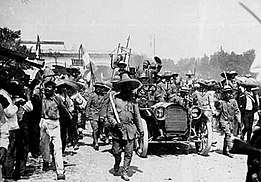
The Mexican Revolution was a decade-long transformational conflict in Mexico, with consequences to this day.[124] It saw uprisings against President Díaz, his resignation, an interim presidency, and the democratic election of a rich landowner, Francisco I. Madero in 1911. In February 1913, a military coup d'état overthrew Madero's government, with the support of the U.S., resulted in Madero's murder by agents of Federal Army General Victoriano Huerta. A coalition of anti-Huerta forces in the North, the Constitutionalist Army overseen by Venustiano Carranza, and a peasant army in the South under Emiliano Zapata, defeated the Federal Army. In 1914 that army was dissolved as an institution. Following the revolutionaries' victory against Huerta, revolutionary armies sought to broker a peaceful political solution, but the coalition splintered, plunging Mexico into civil war again. Constitutionalist general Pancho Villa, commander of the Division of the North, broke with Carranza and allied with Zapata. Carranza's best general, Alvaro Obregón, defeated Villa, his former comrade-in-arms in the battle of Celaya in 1915, and Villa's forces melted away. Carranza became the de facto head of Mexico, and the U.S. recognized his government. In 1916, the winners met at a constitutional convention to draft the Constitution of 1917, which was ratified in February 1917.[125] With amendments, it remains the governing document of Mexico. It is estimated that the war killed 900,000 of the 1910 population of 15 million.[126][127]
The U.S. has had a history of inference and intervention in Mexico, most notably the Mexican-American War. During the Revolution, the Taft administration supported the Huerta coup against Madero, but when Woodrow Wilson was inaugurated as president in March 1913, it refused to recognize Huerta's regime and allowed arms sales to the Constitutionalists. Wilson ordered troops to occupy the strategic port of Veracruz in 1914, which was lifted.[128] After Pancho Villa was defeated by revolutionary forces in 1915, he led a raid into Columbus, New Mexico incursion, prompting the U.S. to send 10,000 troops led by General John J. Pershing in an unsuccessful attempt to capture Villa. Carranza pushed back against U.S. troops being in northern Mexico. The expeditionary forces withdrew as the U.S. entered World War I.[129] Germany attempted to get Mexico to side with it, sending a coded telegram in 1917 to incite war between the U.S. and Mexico, with Mexico to regain the territory it lost in the Mexican-American War.[130] Mexico remained neutral in the conflict.
Consolidating power, President Carranza had peasant-leader Emiliano Zapata assassinated in 1919.[107]:312 Carranza had gained support of the peasantry during the Revolution, but once in power he did little to distribute land, and, in fact, returned some confiscated land to their original owners. President Carranza's best general, Obregón, served briefly in Carranza's administration, but returned to his home state of Sonora to position himself to run in the 1920 presidential election. Carranza chose a political and revolutionary no-body to succeed him. Obregón and two other Sonoran revolutionary generals drew up the Plan of Agua Prieta, overthrowing Carranza, who died fleeing Mexico City in 1920. General Adolfo de la Huerta became interim president, followed the election of General Álvaro Obregón.
Political consolidation and one-party rule (1920–2000)
.svg.png)
The first quarter-century of the post-revolutionary period (1920-1946) was characterized by revolutionary generals serving as Presidents of Mexico. In consolidating power, victorious eorthern revolutionary generals systematically worked to tame the military and bring it under civilian n control. Alvaro Obregón (1920–24); Plutarco Elías Calles (1924-28; and behind the scenes power until 1935); Lázaro Cárdenas (1934–40); and Manuel Avila Camacho (1940–46) succeeded in that endeavor, such that the modern Mexican military is under civilian rule and since 1946 no member of the military has been president of Mexico. The post-revolutionary project of the Mexican government sought to bring order to the country, end military intervention in politics, and create organizations of interest groups. Workers, peasants, urban office workers, and even the army for a short period were incorporated as sectors of the single party that dominated Mexican politics from its founding in 1929.
Obregón instigated land reform and strengthened the power of organized labor. He gained recognition from the United States and took steps to settle claims with companies and individuals that lost property during the Revolution. He imposed his fellow former Sonoran revolutionary general, Calles, as his successor, prompting an unsuccessful military revolt. As president Calles provoked a major conflict with the Catholic Church and Catholic guerrilla armies when he strictly enforced anticlerical articles of the 1917 Constitution. The Church-State conflict was mediated and ended with the aid of the U.S. Ambassador to Mexico. Although the constitution prohibited reelection of the president, Obregón wished to run again and the constitution was amended to allow non-consecutive re-election. Obregón won the 1928 elections, but was assassinated by a Catholic zealot, causing a political crisis of succession. Calles could not become president again, since he has just ended his term. He sought to set up a structure to manage presidential succession, founding the party that was to dominate Mexico until the late twentieth century. Calles declared that the Revolution had moved from caudillismo (rule by strongmen) to the era institucional (institutional era).[131]
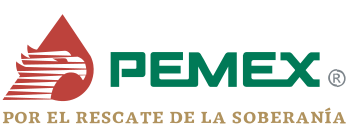
Despite not holding the presidency, Calles remained the key political figure during the period known as the Maximato (1929-1934). The Maximato ended during the presidency of Lázaro Cárdenas, who expelled Calles from the country and implemented many economic and social reforms. This included the Mexican oil expropriation in March 1938, which nationalized the U.S. and Anglo-Dutch oil company known as the Mexican Eagle Petroleum Company. This movement would result in the creation of the state-owned Mexican oil company Pemex. This sparked a diplomatic crisis with the countries whose citizens had lost businesses by Cárdenas's radical measure, but since then the company has played an important role in the economic development of Mexico. Cárdenas's successor, Manuel Ávila Camacho (1940-1946) was more moderate, and relations between the U.S. and Mexico vastly improved during World War II, when Mexico was a significant ally, providing manpower and materiel to aid the war effort.
From 1946 the election of Miguel Alemán, the first civilian president in the post-revolutionary period, Mexico embarked on an aggressive program of economic development, known as the Mexican miracle, which was characterized by industrialization, urbanization, and the increase of inequality in Mexico between urban and rural areas.[132] With robust economic growth, Mexico sought to showcase it to the world by hosting the 1968 Summer Olympics. The government poured huge resources into building new facilities. At the same time, there was political unrest by university students and others with those expenditures, while their own circumstances were difficult. Demonstrations in central Mexico City went on for weeks before the planned opening of the games, with the government of Gustavo Díaz Ordaz cracking down. The culmination was the Tlatelolco Massacre,[133] which claimed the lives of around 300 protesters based on conservative estimates and perhaps as many as 800.[134]

Although the economy continued to flourish for some, social inequality remained a factor of discontent. PRI rule became increasingly authoritarian and at times oppressive in what is now referred to as the Mexican Dirty War[135]
Luis Echeverría, Minister of the Interior under Díaz Ordaz, carrying out the repression during the Olympics, was elected president in 1970. His government had to contend with mistrust of Mexicans and increasing economic problems. He instituted some with electoral reforms.[136][137] Echeverría chose José López Portillo as his successor in 1976. Economic problems worsened in his early term, then massive reserves of petroleum were located off Mexico's Gulf Coast. Pemex did not have the capacity to develop these reserves itself, and brought in foreign firms. Oil prices had been high because of OPEC's lock on oil production, and López Portilla borrowed money from foreign banks for current spending to fund social programs. Those foreign banks were happy to lend to Mexico because the oil reserves were enormous and future revenues were collateral for loans denominated in U.S. dollars. When the price of oil dropped, Mexico's economy collapsed in the 1982 Crisis. Interest rates soared, the peso devalued, and unable to pay loans, the government defaulted on its debt. President Miguel de la Madrid (1982–88) resorted to currency devaluations which in turn sparked inflation.
In the 1980s the first cracks emerged in the PRI's complete political dominance. In Baja California, the PAN candidate was elected as governor. When De la Madrid chose Carlos Salinas de Gortari as the candidate for the PRI, and therefore a foregone presidential victor, Cuauhtémoc Cárdenas, son of former President Lázaro Cárdenas, broke with the PRI and challenged Salinas in the 1988 elections. In 1988 there was massive electoral fraud, with results showing that Salinas had won the election by the narrowest percentage ever. There were massive protests in Mexico City to the stolen election. Salinas took the oath of office on 1 December 1988.[138] In 1990 the PRI was famously described by Mario Vargas Llosa as the "perfect dictatorship", but by then there had been major challenges to the PRI's hegemony.[139][140][141]

Although Salinas won by fraud, he embarked on a program of neoliberal reforms which fixed the exchange rate of the peso, controlled inflation, opened Mexico to foreign investment, and began talked with the U.S. and Canada to join their free-trade agreement. In order to do that, the Constitution of 1917 was amended in several important ways. Article 27, which allowed the government to expropriate natural resources and distribute land, was amended to end agrarian reform and to guarantee private owners' property rights. The anti-clerical articles that muzzled religious institutions, especially the Catholic Church, were amended. Signing on to the North American Free Trade Agreement (NAFTA) removed Mexico's autonomy over trade policy. The agreement came into effect on 1 January 1994; the same day, the Zapatista Army of National Liberation (EZLN) started a two-week-long armed rebellion against the federal government, and has continued as a non-violent opposition movement against neoliberalism and globalization.
In 1994, following the assassination of the PRI's presidential candidate Luis Donaldo Colosio, Salinas was succeeded by substitute PRI candidate Ernesto Zedillo. Salinas left Zedillo's government to deal with the Mexican peso crisis, requiring a $50 billion IMF bailout. Major macroeconomic reforms were started by President Zedillo, and the economy rapidly recovered and growth peaked at almost 7% by the end of 1999.[142]
Contemporary Mexico
.svg.png)
In 2000, after 71 years, the PRI lost a presidential election to Vicente Fox of the opposition National Action Party (PAN). In the 2006 presidential election, Felipe Calderón from the PAN was declared the winner, with a very narrow margin (0.58%) over leftist politician Andrés Manuel López Obrador then the candidate of the Party of the Democratic Revolution (PRD).[143] López Obrador, however, contested the election and pledged to create an "alternative government".[144]
After twelve years, in 2012, the PRI won the presidency again with the election of Enrique Peña Nieto, the governor of the State of Mexico from 2005 to 2011. However, he won with a plurality of about 38%, and did not have a legislative majority.[145]
.svg.png)
After founding the new political party MORENA, Andrés Manuel López Obrador won the 2018 presidential election with over 50% of the vote. His political coalition, led by his left-wing party, founded after the 2012 elections includes parties and politicians from all over the political spectrum. The coalition also won a majority in both the upper and lower congress chambers. AMLO's (one of his many nicknames) success is attributed to the country's other strong political alternatives exhausting their chances as well as the politician adopting a moderate discourse with focus in conciliation.[146]
Mexico has contended with high crime rates, official corruption, narcotrafficking, and a stagnant economy. Many state-owned industrial enterprises were privatized starting in the 1990s, with neoliberal reforms, but Pemex, the state-owned petroleum company is only slowly being privatized, with exploration licenses being issued.[147] In AMLO's push against government corruption, the ex-CEO of Pemex has been arrested.[148]
Although there were fears of electoral fraud in Mexico's 2018 presidential elections,[149] the results gave a mandate to AMLO. Mexico's literacy rate is high, at 94.86% in 2018, up from 82.99% in 1980,[150] with the literacy rates of males and females being relatively equal.
During the COVID-19 pandemic, as of mid-March, the country had a few cases, but as of mid-July, there were over 320,000 cases reported.
Geography
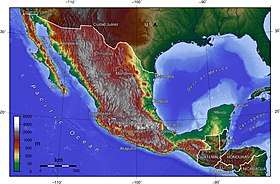
Mexico is located between latitudes 14° and 33°N, and longitudes 86° and 119°W in the southern portion of North America. Almost all of Mexico lies in the North American Plate, with small parts of the Baja California peninsula on the Pacific and Cocos Plates. Geophysically, some geographers include the territory east of the Isthmus of Tehuantepec (around 12% of the total) within Central America.[151] Geopolitically, however, Mexico is entirely considered part of North America, along with Canada and the United States.[152]
Mexico's total area is 1,972,550 km2 (761,606 sq mi), making it the world's 13th largest country by total area. It has coastlines on the Pacific Ocean and Gulf of California, as well as the Gulf of Mexico and Caribbean Sea, the latter two forming part of the Atlantic Ocean.[153] Within these seas are about 6,000 km2 (2,317 sq mi) of islands (including the remote Pacific Guadalupe Island and the Revillagigedo Islands). From its farthest land points, Mexico is a little over 2,000 mi (3,219 km) in length.
On its north, Mexico shares a 3,141 km (1,952 mi) border with the United States. The meandering Río Bravo del Norte (known as the Rio Grande in the United States) defines the border from Ciudad Juárez east to the Gulf of Mexico. A series of natural and artificial markers delineate the United States-Mexican border west from Ciudad Juárez to the Pacific Ocean. Donald Trump made the construction of a border wall (on the U.S. side) an element of his 2016 presidential campaign. On its south, Mexico shares an 871 km (541 mi) border with Guatemala and a 251 km (156 mi) border with Belize.
Mexico is crossed from north to south by two mountain ranges known as Sierra Madre Oriental and Sierra Madre Occidental, which are the extension of the Rocky Mountains from northern North America. From east to west at the center, the country is crossed by the Trans-Mexican Volcanic Belt also known as the Sierra Nevada. A fourth mountain range, the Sierra Madre del Sur, runs from Michoacán to Oaxaca.[154]
As such, the majority of the Mexican central and northern territories are located at high altitudes, and the highest elevations are found at the Trans-Mexican Volcanic Belt: Pico de Orizaba (5,700 m or 18,701 ft), Popocatépetl (5,462 m or 17,920 ft) and Iztaccihuatl (5,286 m or 17,343 ft) and the Nevado de Toluca (4,577 m or 15,016 ft). Three major urban agglomerations are located in the valleys between these four elevations: Toluca, Greater Mexico City and Puebla.[154]
Climate
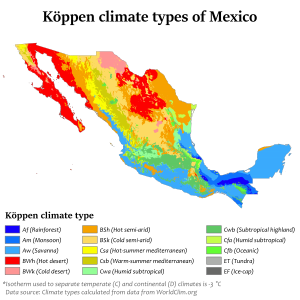
The Tropic of Cancer effectively divides the country into temperate and tropical zones. Land north of the Tropic of Cancer experiences cooler temperatures during the winter months. South of the Tropic of Cancer, temperatures are fairly constant year round and vary solely as a function of elevation. This gives Mexico one of the world's most diverse weather systems.
Areas south of the Tropic of Cancer with elevations up to 1,000 m (3,281 ft) (the southern parts of both coastal plains as well as the Yucatán Peninsula), have a yearly median temperature between 24 to 28 °C (75.2 to 82.4 °F). Temperatures here remain high throughout the year, with only a 5 °C (9 °F) difference between winter and summer median temperatures. Both Mexican coasts, except for the south coast of the Bay of Campeche and northern Baja, are also vulnerable to serious hurricanes during the summer and fall. Although low-lying areas north of the Tropic of Cancer are hot and humid during the summer, they generally have lower yearly temperature averages (from 20 to 24 °C or 68.0 to 75.2 °F) because of more moderate conditions during the winter.
Many large cities in Mexico are located in the Valley of Mexico or in adjacent valleys with altitudes generally above 2,000 m (6,562 ft). This gives them a year-round temperate climate with yearly temperature averages (from 16 to 18 °C or 60.8 to 64.4 °F) and cool nighttime temperatures throughout the year.
Many parts of Mexico, particularly the north, have a dry climate with sporadic rainfall while parts of the tropical lowlands in the south average more than 2,000 mm (78.7 in) of annual precipitation. For example, many cities in the north like Monterrey, Hermosillo, and Mexicali experience temperatures of 40 °C (104 °F) or more in summer. In the Sonoran Desert temperatures reach 50 °C (122 °F) or more.
Climate change
Climate change in Mexico is expected to have widespread impacts on Mexico: with significant decreases in precipitation and increases in temperatures. This will put pressure on the economy, people and the biodiversity of many parts of the country, which have large arid or hot climates.
Already climate change has impacted agriculture [155], biodiversity, farmer livelihoods, and migration,[156][157] as well as "water, health, air pollution, traffic disruption from floods, [and] housing vulnerability to landslides."[158] Altered precipitation patterns and warming temperatures has led to economic insecurity in Mexico, particularly for smallholder farmers, and have laced significant burdens on Mexico’s economically and culturally important crops: maize and coffee. Climate change impacts are especially severe in Mexico City due to increases in air pollution.[159] Ecological impacts of climate change within Mexico include reductions in landscape connectivity and shifting migratory patterns of animals. Furthermore, climate change in Mexico is tied to worldwide trade and economic processes which relates directly to global food security.
In 2012, Mexico passed a comprehensive climate change bill, a first in the developing world, that has set a goal for the country to generate 35% of its energy from clean energy sources by 2024, and to cut emissions by 50% by 2050, from the level found in 2000.[160][161] During the 2016 North American Leaders' Summit, the target of 50% of electricity generated from renewable sources by 2025 was announced.[162] Various climate mitigation efforts have been implemented throughout the country. Mexico has been considered a leader in climate mitigation and climate adaptation.[163][164][165][166][167]Biodiversity
.jpg)
Mexico ranks fourth[168] in the world in biodiversity and is one of the 17 megadiverse countries. With over 200,000 different species, Mexico is home of 10–12% of the world's biodiversity.[169] Mexico ranks first in biodiversity in reptiles with 707 known species, second in mammals with 438 species, fourth in amphibians with 290 species, and fourth in flora, with 26,000 different species.[170] Mexico is also considered the second country in the world in ecosystems and fourth in overall species.[171] About 2,500 species are protected by Mexican legislations.[171]
In 2002, Mexico had the second fastest rate of deforestation in the world, second only to Brazil.[172] The government has taken another initiative in the late 1990s to broaden the people's knowledge, interest and use of the country's esteemed biodiversity, through the Comisión Nacional para el Conocimiento y Uso de la Biodiversidad.
In Mexico, 170,000 square kilometres (65,637 sq mi) are considered "Protected Natural Areas". These include 34 biosphere reserves (unaltered ecosystems), 67 national parks, 4 natural monuments (protected in perpetuity for their aesthetic, scientific or historical value), 26 areas of protected flora and fauna, 4 areas for natural resource protection (conservation of soil, hydrological basins and forests) and 17 sanctuaries (zones rich in diverse species).[169]
The discovery of the Americas brought to the rest of the world many widely used food crops and edible plants. Some of Mexico's native culinary ingredients include: chocolate, avocado, tomato, maize, vanilla, guava, chayote, epazote, camote, jícama, nopal, zucchini, tejocote, huitlacoche, sapote, mamey sapote, many varieties of beans, and an even greater variety of chiles, such as the habanero and the jalapeño. Most of these names come from indigenous languages like Nahuatl.
Because of its high biodiversity Mexico has also been a frequent site of bioprospecting by international research bodies.[173] The first highly successful instance being the discovery in 1947 of the tuber "Barbasco" (Dioscorea composita) which has a high content of diosgenin, revolutionizing the production of synthetic hormones in the 1950s and 1960s and eventually leading to the invention of combined oral contraceptive pills.[174]
Government and politics
Government
The United Mexican States are a federation whose government is representative, democratic and republican based on a presidential system according to the 1917 Constitution. The constitution establishes three levels of government: the federal Union, the state governments and the municipal governments. According to the constitution, all constituent states of the federation must have a republican form of government composed of three branches: the executive, represented by a governor and an appointed cabinet, the legislative branch constituted by a unicameral congress[175] and the judiciary, which will include a state Supreme Court of Justice. They also have their own civil and judicial codes.
The federal legislature is the bicameral Congress of the Union, composed of the Senate of the Republic and the Chamber of Deputies. The Congress makes federal law, declares war, imposes taxes, approves the national budget and international treaties, and ratifies diplomatic appointments.[176]
The federal Congress, as well as the state legislatures, are elected by a system of parallel voting that includes plurality and proportional representation.[177] The Chamber of Deputies has 500 deputies. Of these, 300 are elected by plurality vote in single-member districts (the federal electoral districts) and 200 are elected by proportional representation with closed party lists[178] for which the country is divided into five electoral constituencies.[179] The Senate is made up of 128 senators. Of these, 64 senators (two for each state and two for Mexico City) are elected by plurality vote in pairs; 32 senators are the first minority or first-runner up (one for each state and one for Mexico City), and 32 are elected by proportional representation from national closed party lists.[178]
The executive is the President of the United Mexican States, who is the head of state and government, as well as the commander-in-chief of the Mexican military forces. The President also appoints the Cabinet and other officers. The President is responsible for executing and enforcing the law, and has the power to veto bills.[180]
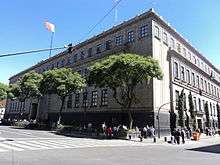
The highest organ of the judicial branch of government is the Supreme Court of Justice, the national supreme court, which has eleven judges appointed by the President and approved by the Senate. The Supreme Court of Justice interprets laws and judges cases of federal competency. Other institutions of the judiciary are the Federal Electoral Tribunal, collegiate, unitary and district tribunals, and the Council of the Federal Judiciary.[181]
Politics
Three parties have historically been the dominant parties in Mexican politics: the Institutional Revolutionary Party (PRI), a center-left party and member of Socialist International[182] that was founded in 1929 to unite all the factions of the Mexican Revolution and held an almost hegemonic power in Mexican politics since then; the National Action Party (PAN), a conservative party founded in 1939 and belonging to the Christian Democrat Organization of America;[183] and the Party of the Democratic Revolution (PRD) a left-wing party,[184] founded in 1989 as the successor of the coalition of socialists and liberal parties. PRD emerged after what has now been proven was a stolen election in 1988,[185] and has won numerous state and local elections since then. PAN won its first governorship in 1989, and won the presidency in 2000 and 2006.[186]
A new political party, National Regeneration Movement (MORENA), a leftist-populist party, emerged after the 2012 election and dominated the 2018 Mexican general election.[187]
Unlike many Latin American countries, the military in Mexico does not participate in politics and is under civilian control.[188]
Law enforcement
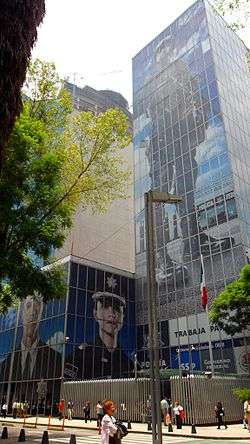
Public security is enacted at the three levels of government, each of which has different prerogatives and responsibilities. Local and state police departments are primarily in charge of law enforcement, whereas the Mexican Federal Police are in charge of specialized duties. All levels report to the Secretaría de Seguridad Pública (Secretary of Public Security). The General Attorney's Office (Fiscalía General de la República, FGR) is a constitutional autonomous organism in charge of investigating and prosecuting crimes at the federal level, mainly those related to drug and arms trafficking,[189] espionage, and bank robberies.[190] The FGR operates the Federal Ministerial Police (Policia Federal Ministerial, PMF) an investigative and preventive agency.[191]
While the government generally respects the human rights of its citizens, serious abuses of power have been reported in security operations in the southern part of the country and in indigenous communities and poor urban neighborhoods.[192] The National Human Rights Commission has had little impact in reversing this trend, engaging mostly in documentation but failing to use its powers to issue public condemnations to the officials who ignore its recommendations.[193] By law, all defendants have the rights that assure them fair trials and humane treatment; however, the system is overburdened and overwhelmed with several problems.[192]
Despite the efforts of the authorities to fight crime and fraud, most Mexicans have low confidence in the police or the judicial system, and therefore, few crimes are actually reported by the citizens.[192] The Global Integrity Index which measures the existence and effectiveness of national anti-corruption mechanisms rated Mexico 31st behind Kenya, Thailand, and Russia.[194] In 2008, president Calderón proposed a major reform of the judicial system, which was approved by the Congress of the Union, which included oral trials, the presumption of innocence for defendants, the authority of local police to investigate crime—until then a prerogative of special police units—and several other changes intended to speed up trials.[195]
Crime
Drug cartels are a major concern in Mexico.[196] Mexico's drug war, ongoing since 2006, has left over 120,000 dead and perhaps another 37,000 missing.[33] The Mexican drug cartels have as many as 100,000 members.[197] Mexico's National Geography and Statistics Institute estimated that in 2014, one-fifth of Mexicans were victims of some sort of crime.[198] The U.S. Department of State warns its citizens to exercise increased caution when traveling in Mexico, issuing travel advisories on its website.[199]
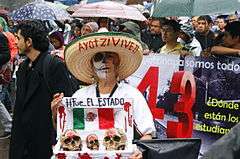
President Felipe Calderón (2006–12) made eradicating organized crime one of the top priorities of his administration by deploying military personnel to cities where drug cartels operate. This move was criticized by the opposition parties and the National Human Rights Commission for escalating the violence,[200] but its effects have been positively evaluated by the US State Department's Bureau for International Narcotics and Law Enforcement Affairs as having obtained "unprecedented results" with "many important successes".[201]
Since President Felipe Calderón launched a crackdown against cartels in 2006, more than 28,000 alleged criminals have been successfully killed.[202][203] Of the total drug-related violence 4% are innocent people,[204] mostly by-passers and people trapped in between shootings; 90% accounts for criminals and 6% for military personnel and police officers.[204] In October 2007, President Calderón and US president George W. Bush announced the Mérida Initiative, a plan of law enforcement cooperation between the two countries.[205]
More than 100 journalists and media workers have been killed or disappeared since 2000, and most of these crimes remained unsolved, improperly investigated, and with few perpetrators arrested and convicted.[206][207]
The mass kidnapping of the 43 students in Iguala on 26 September 2014 triggered nationwide protests against the government's weak response to the disappearances and widespread corruption that gives free rein to criminal organizations.[208]
Foreign relations
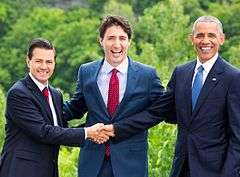
The foreign relations of Mexico are directed by the President of Mexico[209] and managed through the Ministry of Foreign Affairs.[210] The principles of the foreign policy are constitutionally recognized in the Article 89, Section 10, which include: respect for international law and legal equality of states, their sovereignty and independence, trend to non-interventionism in the domestic affairs of other countries, peaceful resolution of conflicts, and promotion of collective security through active participation in international organizations.[209] Since the 1930s, the Estrada Doctrine has served as a crucial complement to these principles.[211]
Mexico is founding member of several international organizations, most notably the United Nations,[212] the Organization of American States,[213] the Organization of Ibero-American States,[214] the OPANAL[215] and the Rio Group.[216] In 2008, Mexico contributed over 40 million dollars to the United Nations regular budget.[217] In addition, it was the only Latin American member of the Organisation for Economic Co-operation and Development since it joined in 1994 until Chile gained full membership in 2010.[218][219]
Mexico is considered a regional power[220][221] hence its presence in major economic groups such as the G8+5 and the G-20. In addition, since the 1990s Mexico has sought a reform of the United Nations Security Council and its working methods[222] with the support of Canada, Italy, Pakistan and other nine countries, which form a group informally called the Coffee Club.[223]
After the War of Independence, the relations of Mexico were focused primarily on the United States, its northern neighbor, largest trading partner,[224] and the most powerful actor in hemispheric and world affairs.[225] Mexico supported the Cuban government since its establishment in the early 1960s,[226] the Sandinista revolution in Nicaragua during the late 1970s,[227] and leftist revolutionary groups in El Salvador during the 1980s.[228] Felipe Calderón's administration (2006-2012) put a greater emphasis on relations with Latin America and the Caribbean.[229] Enrique Peña Nieto (2012-2018) emphasized economic issues and foreign investment, particularly the now-defunct Trans-Pacific Partnership.[230] Andrés Manuel López Obrador has taken a cautious approach, unwilling to challenge U.S. President Donald Trump on either trade or migration, while maintaining neutrality on Venezuela and welcoming Chinese money.[231]
Military
The Mexican military "provides a unique example of a military leadership's transforming itself into a civilian political elite, simultaneously transferring the basis of power from the army to a civilian state."[232] The transformation was brought about by revolutionary generals in the 1920s and 1930s, following the demise of the Federal Army following its complete defeat during the decade-long Mexican Revolution.[233]
The Mexican Armed Forces have two branches: the Mexican Army (which includes the Mexican Air Force), and the Mexican Navy. The Mexican Armed Forces maintain significant infrastructure, including facilities for design, research, and testing of weapons, vehicles, aircraft, naval vessels, defense systems and electronics;[234] military industry manufacturing centers for building such systems, and advanced naval dockyards that build heavy military vessels and advanced missile technologies.[236]

In recent years, Mexico has improved its training techniques, military command and information structures and has taken steps to becoming more self-reliant in supplying its military by designing as well as manufacturing its own arms,[237] missiles, aircraft,[238] vehicles, heavy weaponry, electronics,[234] defense systems,[234] armor, heavy military industrial equipment and heavy naval vessels.[239] Since the 1990s, when the military escalated its role in the war on drugs, increasing importance has been placed on acquiring airborne surveillance platforms, aircraft, helicopters, digital war-fighting technologies,[234] urban warfare equipment and rapid troop transport.[240]
Mexico has the capabilities to manufacture nuclear weapons, but abandoned this possibility with the Treaty of Tlatelolco in 1968 and pledged to only use its nuclear technology for peaceful purposes.[241] In 1970, Mexico's national institute for nuclear research successfully refined weapons grade uranium[242] which is used in the manufacture of nuclear weapons but in April 2010, Mexico agreed to turn over its weapons grade uranium to the United States.[243][244]
Historically, Mexico has remained neutral in international conflicts,[245] with the exception of World War II. However, in recent years some political parties have proposed an amendment of the Constitution to allow the Mexican Army, Air Force or Navy to collaborate with the United Nations in peacekeeping missions, or to provide military help to countries that officially ask for it.[246] Mexico signed the UN treaty on the Prohibition of Nuclear Weapons.[247]
Political divisions
The United Mexican States are a federation of 31 free and sovereign states, which form a union that exercises a degree of jurisdiction over Mexico City.[248]
Each state has its own constitution, congress, and a judiciary, and its citizens elect by direct voting a governor for a six-year term, and representatives to their respective unicameral state congresses for three-year terms.[249]
Mexico City is a special political division that belongs to the federation as a whole and not to a particular state.[248] Formerly known as the Federal District, its autonomy was previously limited relative to that of the states.[250] It dropped this designation in 2016 and is in the process of achieving greater political autonomy by becoming a federal entity with its own constitution and congress.[251]
The states are divided into municipalities, the smallest administrative political entity in the country, governed by a mayor or municipal president (presidente municipal), elected by its residents by plurality.[252]
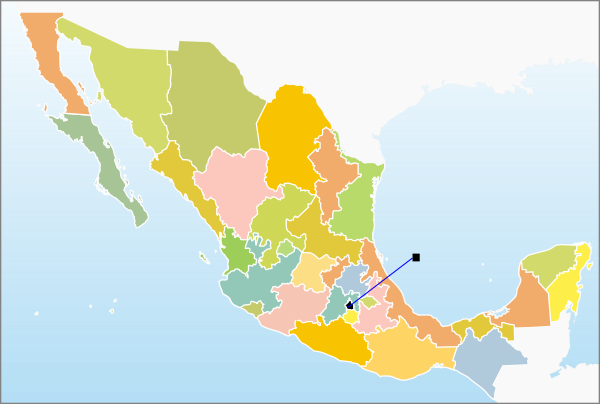
Mexico
Ocean
America
Economy
| Share of world GDP (PPP)[253] | |
|---|---|
| Year | Share |
| 1980 | 3.06% |
| 1990 | 2.68% |
| 2000 | 2.53% |
| 2010 | 2.02% |
| 2017 | 1.94% |
As of April 2018, Mexico has the 15th largest nominal GDP (US$1.15 trillion)[254] and the 11th largest by purchasing power parity (US$2.45 trillion). GDP annual average growth was 2.9% in 2016 and 2% in 2017.[254] Agriculture has comprised 4% of the economy over the last two decades, while industry contributes 33% (mostly automotive, oil, and electronics) and services (notably financial services and tourism) contribute 63%.[254] Mexico's GDP in PPP per capita was US$18,714.05. The World Bank reported in 2009 that the country's Gross National Income in market exchange rates was the second highest in Latin America, after Brazil at US$1,830.392 billion,[255] which led to the highest income per capita in the region at $15,311.[256][257] Mexico is now firmly established as an upper middle-income country. After the slowdown of 2001 the country has recovered and has grown 4.2, 3.0 and 4.8 percent in 2004, 2005 and 2006,[258] even though it is considered to be well below Mexico's potential growth.[259] The International Monetary Fund predicts growth rates of 2.3% and 2.7% for 2018 and 2019, respectively.[254]
Although multiple international organizations coincide and classify Mexico as an upper middle income country, or a middle class country[260][261] Mexico's National Council for the Evaluation of Social Development Policy (CONEVAL), which is the organization in charge to measure the country's poverty reports that a huge percentage of Mexico's population lives in poverty. According to said council, from 2006 to 2010 (year on which the CONEVAL published its first nationwide report of poverty) the portion of Mexicans who live in poverty rose from 18%-19%[262] to 46% (52 million people).[263] However, rather than Mexico's economy crashing, international economists attribute the huge increase in the percentage of population living below the country's poverty line to the CONEVAL using new standards to define it, as now besides people who lives below the economic welfare line, people who lacks at least one "social need" such as complete education, access to healthcare, access to regular food, housing services and goods, social security etc. were considered to be living in poverty (several countries do collect information regarding the persistence of said vulnerabilities on their population, but Mexico is the only one that classifies people lacking one or more of those needs as living below its national poverty line). Said economists do point out that the percentage of people living in poverty according to Mexico's national poverty line is around 40 times higher than the one reported by the World Bank's international poverty line (with said difference being the biggest in the world) and ponder if it would not be better for countries in the situation of Mexico to adopt internationalized standards to measure poverty so the numbers obtained could be used to make accurate international comparisons.[264] According to the OECD's own poverty line (defined as the percentage of a country's population who earns 60%[265] or less of the national median income) 20% of Mexico's population lives in a situation of poverty.[266]
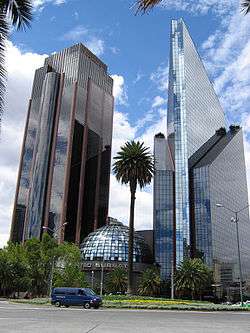
Among the OECD countries, Mexico has the second-highest degree of economic disparity between the extremely poor and extremely rich, after Chile – although it has been falling over the last decade, being one of few countries in which this is the case.[267] The bottom ten percent in the income hierarchy disposes of 1.36% of the country's resources, whereas the upper ten percent dispose of almost 36%. The OECD also notes that Mexico's budgeted expenses for poverty alleviation and social development is only about a third of the OECD average.[268] This is also reflected by the fact that infant mortality in Mexico is three times higher than the average among OECD nations whereas its literacy levels are in the median range of OECD nations. Nevertheless, according to Goldman Sachs, by 2050 Mexico will have the 5th largest economy in the world.[269]
According to a 2008 UN report the average income in a typical urbanized area of Mexico was $26,654, while the average income in rural areas just miles away was only $8,403.[270] Daily minimum wages are set annually being set at $102.68 Mexican pesos (US$5.40) in 2019.[271]
The electronics industry of Mexico has grown enormously within the last decade. Mexico has the sixth largest electronics industry in the world after China, United States, Japan, South Korea, and Taiwan. Mexico is the second-largest exporter of electronics to the United States where it exported $71.4 billion worth of electronics in 2011.[272] The Mexican electronics industry is dominated by the manufacture and OEM design of televisions, displays, computers, mobile phones, circuit boards, semiconductors, electronic appliances, communications equipment and LCD modules. The Mexican electronics industry grew 20% between 2010 and 2011, up from its constant growth rate of 17% between 2003 and 2009.[272] Currently electronics represent 30% of Mexico's exports.[272]
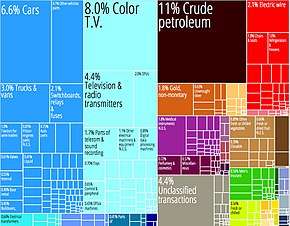
Mexico produces the most automobiles of any North American nation.[273] The industry produces technologically complex components and engages in some research and development activities.[274] The "Big Three" (General Motors, Ford and Chrysler) have been operating in Mexico since the 1930s, while Volkswagen and Nissan built their plants in the 1960s.[275] In Puebla alone, 70 industrial part-makers cluster around Volkswagen.[274] In the 2010s expansion of the sector was surging. In 2014 alone, more than $10 billion in investment was committed. In September 2016 Kia motors opened a $1 billion factory in Nuevo León,[276] with Audi also opening an assembling plant in Puebla the same year.[277] BMW, Mercedes-Benz and Nissan currently have plants in constructuion.[278]
The domestic car industry is represented by DINA S.A., which has built buses and trucks since 1962,[279] and the new Mastretta company that builds the high-performance Mastretta MXT sports car.[280] In 2006, trade with the United States and Canada accounted for almost 50% of Mexico's exports and 45% of its imports.[11] During the first three quarters of 2010, the United States had a $46.0 billion trade deficit with Mexico.[281] In August 2010 Mexico surpassed France to become the 9th largest holder of US debt.[282] The commercial and financial dependence on the US is a cause for concern.[283]
The remittances from Mexican citizens working in the United States account for 0.2% of Mexico's GDP[284] which was equal to US$20 billion per year in 2004 and is the tenth largest source of foreign income after oil, industrial exports, manufactured goods, electronics, heavy industry, automobiles, construction, food, banking and financial services.[285] According to Mexico's central bank, remittances in 2008 amounted to $25bn.[286]
By 2050, Mexico could potentially become the world's fifth or seventh largest economy.[287][288]
Communications
The telecommunications industry is mostly dominated by Telmex (Teléfonos de México), privatized in 1990. By 2006, Telmex had expanded its operations to Colombia, Peru, Chile, Argentina, Brazil, Uruguay, and the United States. Other players in the domestic industry are Axtel, Maxcom, Alestra, Marcatel, AT&T Mexico.[289] Because of Mexican orography, providing a landline telephone service at remote mountainous areas is expensive, and the penetration of line-phones per capita is low compared to other Latin American countries, at 40 percent; however, 82% of Mexicans over the age of 14 own a mobile phone. Mobile telephony has the advantage of reaching all areas at a lower cost, and the total number of mobile lines is almost two times that of landlines, with an estimation of 63 million lines.[290] The telecommunication industry is regulated by the government through Cofetel (Comisión Federal de Telecomunicaciones).
The Mexican satellite system is domestic and operates 120 earth stations. There is also extensive microwave radio relay network and considerable use of fiber-optic and coaxial cable.[290] Mexican satellites are operated by Satélites Mexicanos (Satmex), a private company, leader in Latin America and servicing both North and South America.[291] It offers broadcast, telephone and telecommunication services to 37 countries in the Americas, from Canada to Argentina. Through business partnerships Satmex provides high-speed connectivity to ISPs and Digital Broadcast Services.[292] Satmex maintains its own satellite fleet with most of the fleet being designed and built in Mexico.
Major players in the broadcasting industry are Televisa, the largest Mexican media company in the Spanish-speaking world,[293] TV Azteca and Imagen Televisión.
Energy
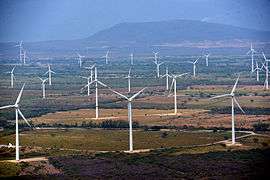
.jpg)
Energy production in Mexico is managed by the state-owned companies Federal Commission of Electricity and Pemex.
Pemex, the public company in charge of exploration, extraction, transportation and marketing of crude oil and natural gas, as well as the refining and distribution of petroleum products and petrochemicals, is one of the largest companies in the world by revenue, making US$86 billion in sales a year.[295][296][297] Mexico is the sixth-largest oil producer in the world, with 3.7 million barrels per day.[298] In 1980 oil exports accounted for 61.6% of total exports; by 2000 it was only 7.3%.[274]
The largest hydro plant in Mexico is the 2,400 MW Manuel Moreno Torres Dam in Chicoasén, Chiapas, in the Grijalva River. This is the world's fourth most productive hydroelectric plant.[299]
Mexico is the country with the world's third largest solar potential.[300] The country's gross solar potential is estimated at 5kWh/m2 daily, which corresponds to 50 times national electricity generation.[301] Currently, there is over 1 million square meters of solar thermal panels[302] installed in Mexico, while in 2005, there were 115,000 square meters of solar PV (photo-voltaic). It is expected that in 2012 there will be 1,8 million square meters of installed solar thermal panels.[302]
The project named SEGH-CFE 1, located in Puerto Libertad, Sonora, Northwest of Mexico, will have capacity of 46.8 MW from an array of 187,200 solar panels when complete in 2013.[303] All of the electricity will be sold directly to the CFE and absorbed into the utility's transmission system for distribution throughout their existing network. At an installed capacity of 46.8 MWp, when complete in 2013, the project will be the first utility scale project of its kind in Mexico and the largest solar project of any kind in Latin America.
Science and technology
The National Autonomous University of Mexico was officially established in 1910,[304] and the university became one of the most important institutes of higher learning in Mexico.[305] UNAM provides world class education in science, medicine, and engineering.[306] Many scientific institutes and new institutes of higher learning, such as National Polytechnic Institute (founded in 1936),[307] were established during the first half of the 20th century. Most of the new research institutes were created within UNAM. Twelve institutes were integrated into UNAM from 1929 to 1973.[308] In 1959, the Mexican Academy of Sciences was created to coordinate scientific efforts between academics.
In 1995, the Mexican chemist Mario J. Molina shared the Nobel Prize in Chemistry with Paul J. Crutzen and F. Sherwood Rowland for their work in atmospheric chemistry, particularly concerning the formation and decomposition of ozone.[309] Molina, an alumnus of UNAM, became the first Mexican citizen to win the Nobel Prize in science.[310]
In recent years, the largest scientific project being developed in Mexico was the construction of the Large Millimeter Telescope (Gran Telescopio Milimétrico, GMT), the world's largest and most sensitive single-aperture telescope in its frequency range.[311] It was designed to observe regions of space obscured by stellar dust.
Tourism
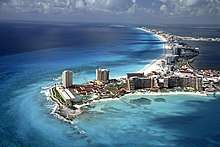
As of 2017, Mexico was the 6th most visited country in the world and had the 15th highest income from tourism in the world which is also the highest in Latin America.[312] The vast majority of tourists come to Mexico from the United States and Canada followed by Europe and Asia. A smaller number also come from other Latin American countries.[313] In the 2017 Travel and Tourism Competitiveness Report, Mexico was ranked 22nd in the world, which was 3rd in the Americas.[314]
The coastlines of Mexico harbor many stretches of beaches that are frequented by sunbathers and other visitors. According to national law, the entirety of the coastlines are under federal ownership, that is, all beaches in the country are public. On the Yucatán peninsula, one of the most popular beach destinations is the resort town of Cancún, especially among university students during spring break. Just offshore is the beach island of Isla Mujeres, and to the east is the Isla Holbox. To the south of Cancun is the coastal strip called Riviera Maya which includes the beach town of Playa del Carmen and the ecological parks of Xcaret and Xel-Há. A day trip to the south of Cancún is the historic port of Tulum. In addition to its beaches, the town of Tulum is notable for its cliff-side Mayan ruins.
On the Pacific coast is the notable tourist destination of Acapulco. Once the destination for the rich and famous, the beaches have become crowded and the shores are now home to many multi-story hotels and vendors. Acapulco is home to renowned cliff divers: trained divers who leap from the side of a vertical cliff into the surf below.
At the southern tip of the Baja California peninsula is the resort town of Cabo San Lucas, a town noted for its beaches and marlin fishing.[315] Further north along the Sea of Cortés is the Bahía de La Concepción, another beach town known for its sports fishing. Closer to the United States border is the weekend draw of San Felipe, Baja California.
Transportation
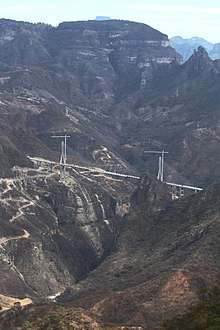
The roadway network in Mexico is extensive and all areas in the country are covered by it.[316] The roadway network in Mexico has an extent of 366,095 km (227,481 mi),[317] of which 116,802 km (72,577 mi) are paved,[318] making it the largest paved-roadway network in Latin America.[319] Of these, 10,474 km (6,508 mi) are multi-lane expressways: 9,544 km (5,930 mi) are four-lane highways and the rest have 6 or more lanes.[318]
Starting in the late nineteenth century, Mexico was one of the first Latin American countries to promote railway development,[192] and the network covers 30,952 km (19,233 mi).[320] The Secretary of Communications and Transport of Mexico proposed a high-speed rail link that will transport its passengers from Mexico City to Guadalajara, Jalisco.[321][322] The train, which will travel at 300 kilometres per hour (190 miles per hour),[323] will allow passengers to travel from Mexico City to Guadalajara in just 2 hours.[323] The whole project was projected to cost 240 billion pesos, or about 25 billion US$[321] and is being paid for jointly by the Mexican government and the local private sector including the wealthiest man in the world, Mexico's billionaire business tycoon Carlos Slim.[324] The government of the state of Yucatán is also funding the construction of a high speed line connecting the cities of Cozumel to Mérida and Chichen Itza and Cancún.[325]
Mexico has 233 airports with paved runways; of these, 35 carry 97% of the passenger traffic.[320] The Mexico City International Airport remains the busiest in Latin America and the 36th busiest in the world[326] transporting 45 million passengers a year.[327]
Water supply and sanitation
Among the achievements is a significant increase in access to piped water supply in urban areas (88% to 93%) as well as in rural areas (50% to 74%) between 1990 and 2010. Additionally, a strong nationwide increase in access to improved sanitation (64% to 85%) was observed in the same period. Other achievements include the existence of a functioning national system to finance water and sanitation infrastructure with a National Water Commission as its apex institution; and the existence of a few well-performing utilities such as Aguas y Drenaje de Monterrey.
The challenges include water scarcity in the northern and central parts of the country; inadequate water service quality (drinking water quality; 11% of Mexicans receiving water only intermittently as of 2014);[328] poor technical and commercial efficiency of most utilities (with an average level of non-revenue water of 43.2% in 2010);[329] an insufficient share of wastewater receiving treatment (36% in 2006); and still inadequate access in rural areas. In addition to on-going investments to expand access, the government has embarked on a large investment program to improve wastewater treatment.
Demographics
| Year | Pop. | ±% p.a. |
|---|---|---|
| 1895 | 12,700,294 | — |
| 1900 | 13,607,272 | +1.39% |
| 1910 | 15,160,369 | +1.09% |
| 1921 | 14,334,780 | −0.51% |
| 1930 | 16,552,722 | +1.61% |
| 1940 | 19,653,552 | +1.73% |
| 1950 | 25,791,017 | +2.75% |
| 1960 | 34,923,129 | +3.08% |
| 1970 | 48,225,238 | +3.28% |
| 1980 | 66,846,833 | +3.32% |
| 1990 | 81,249,645 | +1.97% |
| 2000 | 97,483,412 | +1.84% |
| 2010 | 112,336,538 | +1.43% |
| 2015 | 121,005,816 | +1.50% |
| Source: INEGI | ||
Throughout the 19th century, the population of Mexico had barely doubled. This trend continued during the first two decades of the 20th century, and even in the 1921 census there was a loss of about 1 million inhabitants. The phenomenon can be explained because during the decade from 1910 to 1921 the Mexican Revolution took place.
The growth rate increased dramatically between the 1930s and the 1980s, when the country registered growth rates of over 3% (1950–1980). The Mexican population doubled in twenty years, and at that rate it was expected that by the year 2000 there would be 120 million Mexicans. Life expectancy went from 36 years (in 1895) to 72 years (in the year 2000).
According to estimations made by Mexico's National Geography and Statistics Institute, as of 2017 Mexico has 123.5 million inhabitants[330] making it the most populous Spanish-speaking country in the world.[331] Between 2005 and 2010, the Mexican population grew at an average of 1.70% per year, up from 1.16% per year between 2000 and 2005.
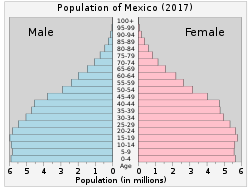
Even though Mexico is a very ethnically diverse country, research about ethnicity has largely been a forgotten field, in consequence of the post-revolutionary efforts of Mexico's government to unify all non-indigenous Mexicans under a single ethnic identity (that of the "Mestizo"). As a result, since 1930 the only explicit ethnic classification that has been included in Mexican censuses has been that of "Indigenous peoples".[332] Even then, across the years the government has used different criteria to count Indigenous peoples, with each of them returning considerably different numbers. It is not until very recently that the Mexican government begun conducting surveys that considered the Afro-Mexican and Euro-Mexican population that lives in the country.
As of 2017, it is estimated that 1.2 million foreigners have settled in the country,[333] up from nearly 1 million in 2010.[334] The vast majority of migrants come from the United States (900,000), making Mexico the top destination for U.S. citizens abroad.[335] The second largest group comes from neighboring Guatemala (54,500), followed by Spain (27,600).[333] Other major sources of migration are fellow Latin American countries, which include Colombia (20,600), Argentina (19,200) and Cuba (18,100).[333] Historically, the Lebanese diaspora and the German-born Mennonite migration have left a notorious impact in the country's culture, particularly in its cuisine and traditional music.[336][337] At the turn of the 21st century, several trends have increased the number of foreigners residing in the country such as the 2008–2014 Spanish financial crisis,[338] increasing gang-related violence in the Northern Triangle of Central America,[339] the ongoing political and economic crisis in Venezuela,[340][341] and the automotive industry boom led by Japanese and South Korean investment.[342][343]
Ethnicity and race
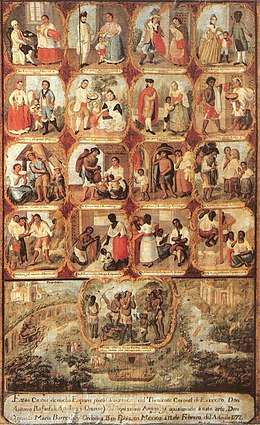
Despite being a diverse country; the majority of Mexicans are united under the same national identity.[344] This is the product of an ideology strongly promoted by Mexican academics and politicians such as Manuel Gamio and José Vasconcelos known as mestizaje, whose goal was that of Mexico becoming a racially and culturally homogeneous country,[345][344][346] which in practice was reflected in Mexico's national censuses of 1921 and 1930: According to the former, approximately 60% of Mexico's population identified as Mestizos,[192][347] and in the later, Mexico's government declared that all Mexicans were now Mestizos, for which racial classifications would be dropped in favor of language-based ones in future censuses.[332] Nowadays, historians and academics consider that a good number of people were classified under the "mestizo identity" by the government regardless of whether they were of mixed ancestry or not,[348][349] as the population trends reported in those censuses are incongruent with those exhibited in earlier censuses[350] and modern research has observed that when asked directly about their ethno-racial identification, many Mexicans do not identify as Mestizos,[351] being also noted that ethnoracial labels such as "White" or "Indian" are far more prominent in everyday Mexican society than the "Mestizo" one is, whose use is mostly limited to intellectual circles.[352]
The total percentage of Mexico's indigenous peoples tends to vary depending of the criteria used by the government on its censuses: it is 5.4% if the ability to speak an indigenous language is used as the criteria to define a person as indigenous,[353] if racial self-identification is used it is 14.9%[354][lower-alpha 1] and if people who consider themselves part indigenous are also included it amounts to 23%.[357] Nonetheless, all the censuses conclude that the majority of Mexico's indigenous population is concentrated in rural areas of the southern and south-eastern Mexican states such as[358] Yucatán at 59%, Quintana Roo 39% and Campeche 27%, who are chiefly Maya; Oaxaca with 48% of the population, the most numerous groups being the Mixtec and Zapotec peoples; Chiapas at 28%, the majority being Tzeltal and Tzotzil Maya; Hidalgo 24%, the majority being Otomi; Puebla 19%, and Guerrero 17%, mostly Nahua peoples and the states of San Luis Potosí and Veracruz are both home to a population that is 15% indigenous, mostly from the Totonac, Nahua and Teenek (Huastec) groups.[359][360] All of the indices of social development for the indigenous population are considerably lower than the national average which is motive of concern for Mexico's government.[359]
Similarly to Mestizo and indigenous peoples, estimates of the percentage of European-descended Mexicans vary considerably: according to the Encyclopædia Britannica which uses as reference the 1921 census, their numbers range from around 10%–20% (the results of the 1921 census, however, have been contested by various historians and deemed inaccurate).[361] Recent nationwide field surveys that account for different phenotypical traits (hair color, skin color etc.) on the other hand, report rather higher percentages, with it being between 18%[362]-23%[363] if the criteria is the presence of blond hair, and of 47% if the criteria is skin color, with the later surveys having been conducted by Mexico's government.[364][365][366][367][368]
While during the colonial era, most of the European migration into Mexico was Spanish, in the 19th and 20th centuries a substantial number of non-Spanish Europeans immigrated to the country, with Europeans often being the most numerous ethnic group in colonial Mexican cities.[370][371] Nowadays Mexico's northern and western regions have the highest percentages of European populations, with the majority of the people not having native admixture or being of predominantly European ancestry.[372]
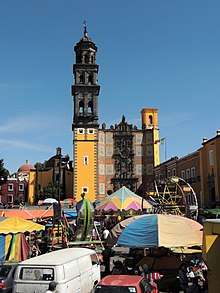
The Afro-Mexican population (1,381,853 individuals as of 2015)[373] is an ethnic group made up of descendants of Colonial-era slaves and recent immigrants of sub-Saharan African descent. Mexico had an active slave trade during the colonial period, and some 200,000 Africans were taken there, primarily in the 17th century. The creation of a national Mexican identity, especially after the Mexican Revolution, emphasized Mexico's indigenous and European past; it passively eliminated the African ancestors and contributions. Most of the African-descended population was absorbed into the surrounding Mestizo (mixed European/indigenous) and indigenous populations through unions among the groups. Evidence of this long history of intermarriage with Mestizo and indigenous Mexicans is also expressed in the fact that in the 2015 inter-census, 64.9% (896,829) of Afro-Mexicans also identified as indigenous. It was also reported that 9.3% of Afro-Mexicans speak an indigenous language.[374] The states with the highest self-report of Afro-Mexicans were Guerrero (6.5% of the population), Oaxaca (4.95%) and Veracruz (3.28%).[375] Afro-Mexican culture is strongest in the communities of the Costa Chica of Oaxaca and Costa Chica of Guerrero.
During the early 20th century, a substantial number of Arabs (mostly Christians)[376] began arriving from the crumbling Ottoman Empire. The largest group were the Lebanese and an estimated 400,000 Mexicans have some Lebanese ancestry.[377] Smaller ethnic groups in Mexico include South and East Asians, present since the colonial era. During the colonial era Asians were termed Chino (regardless of ethnicity), and arrived as merchants, artisans and slaves.[378] A study by Juan Esteban Rodríguez, a graduate student at the National Laboratory of Genomics for Biodiversity, indicated that up to one third of people sampled from Guerrero state had significantly more Asian ancestry than most Mexicans, primarily Filipino or Indonesian.[379][380] Modern Asian immigration began in the late 19th century, and at one point in the early 20th century the Chinese were the second largest immigrant group.[381]
Official censuses
According to indepentent Mexico's first-ever (but second-ever counting New Spain's) national census that considered race, made right after the Mexican revolution in 1921,[382] 59% of Mexico's population was Mestizo, 29% was Indigenous, and 9% was European, with Mestizos being the most numerous ethno-racial group in almost all the states.[382] For a long time this census' results were taken as fact, with extraofficial international publications such as The World Factbook and Encyclopædia Britannica using them as a reference to estimate Mexico's racial composition up to this day.[383] In recent time nonetheless, Mexican academics have subjected the census' results to scrutiny, claiming that such a drastic alteration in demographic trends in regards to New Spain's 1793 census (on which Europeans were estimated to be 18% to 22% of the population, Mestizos 21% to 25% and Indigenous peoples 51% to 61%)[80] is not possible and cite, among other statistics the relatively low frequency of marriages between people of different continental ancestries in colonial and early independent Mexico.[384][361] Said authors claim that the Mexican society went through a "more cultural than biological mestizaje process" sponsored by the state in its efforts to unify the Mexican population which resulted in the inflation of the percentage of the Mestizo Mexican group at the expense of the identity of the other races that exist in Mexico.[385]
In recent times the Mexican government has decided to conduct new ethnic surveys and censuses, also widening the criteria to classify the ethnicities who were already considered such as the Indigenous Mexican one, which was previously reserved to people who lived in indigenous communities or spoke an indigenous language. According to these recent surveys, Indigenous peoples amount to 23% of Mexico's population (including people who declared to be partially indigenous),[357] Afro-Mexicans are 2% of Mexico's population. (including people who declared to be partially African)[357] and White or European Mexicans[386][387] amount to 47% of Mexico's population (based on appearance rather than on self-declared of ancestry).[364][365][366][388][367] Less numerous groups in Mexico such as Asians and Middle Easterners are also accounted for. Out of all the ethnic groups that have recently been surveyed, that of Mestizos is notably absent, which may be consequence of the ethnic label's fluid and subjective definition, which complicates a precise calculation as well the tendency that Mexicans have to identify people with "static" ethnic labels rather than "fluid" ones.[352]
Emigration
In the early 1960s, around 600,000 Mexicans lived abroad, which increased sevenfold by the 1990s to 4.4 million.[389] At the turn of the 21st century, this figure more than doubled to 9.5 million.[389] As of 2017, it is estimated that 12.9 million Mexicans live abroad, primarily in the United States, which concentrates nearly 98% of the expatriate population.[389] The majority of Mexicans have settled in states such as California, Texas and Illinois, particularly around the metropolitan areas of Los Angeles, Chicago, Houston and Dallas-Fort Worth.[390] As a result of these major migration flows in recent decades, around 36 million U.S. residents, or 11.2% of the country's population, identified as being of full or partial Mexican ancestry.[391] The remaining 2% of expatriates have settled in Canada (86,000), primarily in the provinces of Ontario and Quebec,[392] followed by Spain (49,000) and Germany (18,000), both European destinations represent almost two-thirds of the Mexican population living in the continent.[389] As for Latin America, it is estimated that 69,000 Mexicans live in the region, Guatemala (18,000) being the top destination for expatriates, followed by Bolivia (10,000) and Panama (5,000).[389]
Languages
Spanish is the de facto national language spoken by the vast majority of the population, making Mexico the world's most populous Hispanophone country.[393][331] Mexican Spanish refers to the varieties of the language spoken in the country, which differ from one region to another in sound, structure, and vocabulary.[394] In general, Mexican Spanish does not make any phonetic distinction among the letters s and z, as well as c when preceding the vowels e and i, as opposed to Peninsular Spanish. The letters b and v have the same pronunciation as well.[394] Furthermore, the usage of vos, the second person singular pronoun, found in several Latin American varieties, is replaced by tú; whereas vosotros, the second person plural pronoun, fell out of use and was effectively replaced by ustedes.[394] In written form, the Spanish Royal Academy serves as the primary guideline for spelling, except for words of Amerindian origin that retain their original phonology such as cenzontle instead of sinzontle and México not Méjico. Words of foreign origin also maintain their original spelling such as whisky and film, as opposed to güisqui and filme as the Royal Academy suggests.[394] The letter x is distinctly used in Mexican Spanish, which may be pronounced as [ks] (as in oxígeno or taxi), as [ʃ] particularly in Amerindian words (e.g. mixiote, Xola and uxmal) and as the voiceless velar fricative [x] (such as Texas and Oaxaca).[394]
The federal government officially recognizes sixty-eight linguistic groups and 364 varieties of indigenous languages.[395] It is estimated that around 8.3 million citizens speak these languages,[396] with Nahuatl being the most widely spoken by more than 1.7 million, followed by Yucatec Maya used daily by nearly 850,000 people, Tzeltal and Tzotzil, two variants of the Mayan languages, are spoken by around half a million people each, primarily in the southern state of Chiapas.[396] Mixtec and Zapotec, both with estimated 500,000 native speakers each, are two other well-known language groups.[396] Since its creation in March 2003, the National Indigenous Languages Institute has been in charge of promoting and protecting the use of the country's indigenous languages, through the General Law of Indigenous Peoples' Linguistic Rights, which recognizes them de jure as "national languages" with status equal to that of Spanish.[397] Notwithstanding, in practice, indigenous peoples often face discrimination and are unable to have proper access to public services such as education and healthcare, as well as the justice system, as Spanish is the prominent language.[398]
Aside from indigenous languages, there are several minority languages spoken in Mexico due to international migration such as Low German by the 80,000-strong Menonite population, primarily settled in the northern states, fuelled by the tolerance of the federal government towards this community by allowing them to set their own educational system compatible with their customs and traditions.[399] The Chipilo dialect, a variance of the Venetian language, is spoken in the town of Chipilo, located in the central state of Puebla, by around 2,500 people, mainly descendants of Venetians that migrated to the area in the late 19th century.[400] Furthermore, English is the most commonly taught foreign language in Mexico. It is estimated that nearly 24 million, or around a fifth of the population, study the language through public schools, private institutions or self-access channels.[401] However, a high level of English proficiency is limited to only 5% of the population.[402] Moreover, French is the second most widely taught foreign language, as every year between 200,000 and 250,000 Mexican students enroll in language courses.[403][404][405]
Urban areas
The 20 largest cities in Mexico as of the 2010 census. Ecatepec and Nezahualcóyotl are part of Metropolitan Mexico City; Juárez is northern border city, directly across from El Paso, Texas; Tijuana is across from San Diego, California; and Mexicali is across from Calexico, California.
Religion
The 2010 census by the Instituto Nacional de Estadística y Geografía (National Institute of Statistics and Geography) gave Roman Catholicism as the main religion, with 82.7% of the population, while 10% (10,924,103) belong to other Christian denominations, including Evangelicals (5%); Pentecostals (1.6%); other Protestant or Reformed (0.7%); Jehovah's Witnesses (1.4%); Seventh-day Adventists (0.6%); and members of The Church of Jesus Christ of Latter-day Saints (0.3%).[1] 172,891 (or less than 0.2% of the total) belonged to other, non-Christian religions; 4.7% declared having no religion; 2.7% were unspecified.[1]
The 92,924,489[1] Catholics of Mexico constitute in absolute terms the second largest Catholic community in the world, after Brazil's.[409] 47% percent of them attend church services weekly.[410] The feast day of Our Lady of Guadalupe, the patron saint of Mexico, is celebrated on 12 December and is regarded by many Mexicans as the most important religious holiday of their country.[411] In spite of this, the Mexican State is officially lay secularist since the separation between religious institutions and the political administration of the nation was enshrined in the 1857, and was ratified in the current Constitution of 1917. Catholic priest and insurgent for independence, José María Morelos, called for Roman Catholicism to be the exclusive faith in Mexico. A provision of the Plan of Iguala of Agustín de Iturbide bringing about Mexican independence in 1821, also included Catholic exclusivity in the religious sphere. The Constitution of 1824 declared that the official religion of the Republic would be Catholic. Mexican liberals took power in the mid-nineteenth-century, determined to curtail the power of the Roman Catholic Church, and embedded anticlericalism in the Constitution of 1857, touching off the civil war, the War of the Reform (1858–61), largely over religion. Conservatives were defeated on the battlefield and then sought a foreign ally for their cause of religion, aligning with the French, who placed Maximilian Hapsburg as monarch in the Second Mexican Empire (1862–67). The Mexican republic defeated the Conservatives and executed Maximilian and two prominent Mexican generals, definitively ending the Conservative attempt to reassert the power of the Catholic Church. Liberal general and President Porfirio Díaz (r. 1876–80; 1880-1911) did not provoke the Catholic Church, coming to a modus vivendi with it; but he did not remove the anticlerical articles from the 1857 Constitution. From the late nineteenth century Porfiriato, Protestants began to make inroads in Mexico. The Mexican Revolution had a large number of Protestants participating in northern Mexico. The Constitution of 1917 strengthened the anticlerical provisions that were carried over from the 1857 Constitution.
The late 1920s was marked by a religious conflict known as the Cristero War (1926–29), when former revolutionary general, President Plutarco Elías Calles (1924–28), began stringently enforcing the anticlerical provisions of the Constitution of 1917, it provoked a massive uprising in many parts of Mexico and resistance by the Roman Catholic Church. The war ended with an agreement between the parties in conflict (Catholic Church and State), by means of which the respective fields of action were defined. When President Carlos Salinas de Gortari sought Mexico's inclusion in the North American Free Trade Agreement, the constitution was changed in 1992 to eliminate the anticlerical articles long opposed by the Catholic Church and other religious institutions; the anticlerical articles were considered a violation of freedom of religion.[412][413] Mexico reestablished of diplomatic relations with the Holy See, to which the Mexican State did not recognize as a political entity.
_-_exterior_and_plaza.jpg)
According to the figures of INEGI, most Mexicans declare themselves Christian and most Catholics (almost 93 million adherents according to the census of 2010).[1] The second-largest Christian group is the Jehovah's Witnesses, which totals more than 1 million adherents, making the Mexican congregation of this Christian branch the second largest worldwide. Ranked third-largest in Mexico is The Church of Jesus Christ of Latter-day Saints, whose members are known as Mormons; the 2010 census reported 314,932 members,[1] though the church in 2009 claimed to have over one million registered members.[414] Fourth largest is Church of the La Luz del Mundo, which has its center in "La Hermosa Provincia", a colony of Guadalajara. The denominations Pentecostal also have an important presence, especially in the cities of the border and in the indigenous communities. In fact, Pentecostal churches together have more than 1.3 million adherents, which in net numbers place them as the second Christian creed in Mexico. The situation changes when the different Pentecostal denominations are considered as separate entities. Other groups are growing, such as Iglesia apostólica de la Fe en Cristo Jesús, Mennonites and Seventh-day Adventist Church. Migratory phenomena have led to the spread of different aspects of Christianity, including branches Protestants, Eastern Catholic Churches and Eastern Orthodox Church.
According to Jacobo Grinberg-Zylberbaum (in texts edited by the National Autonomous University of Mexico), it is remarkable the survival of magic-religious rituals of the old indigenous groups, not only in the current indigenous people but in the mestizos and whites that make up the Mexican rural and urban society. There is often a syncretism between shamanism and the Catholic tradition. Another religion of popular syncretism in Mexico (especially in recent years) is the Santería. This is mainly due to the large number of Cubans who settled in the territory after the Cuban Revolution (mainly in states such as Veracruz and Yucatán). Although Mexico was also a recipient of black slaves from Africa in the 16th century, the apogee of these cults is relatively new.[415]
In certain regions, the profession of a creed other than the Catholic is seen as a threat to community unity. It is argued that the Catholic religion is part of the ethnic identity, and that the Protestants are not willing to participate in the traditional customs and practices (the tequio or community work, participation in the festivities and similar issues). The refusal of the Protestants is because their religious beliefs do not allow them to participate in the cult of images. In extreme cases, tension between Catholics and Protestants has led to the expulsion or even murder of Protestants in several villages. The best known cases are those of San Juan Chamula,[416][417] in Chiapas, and San Nicolás, in Ixmiquilpan,[418] Hidalgo.
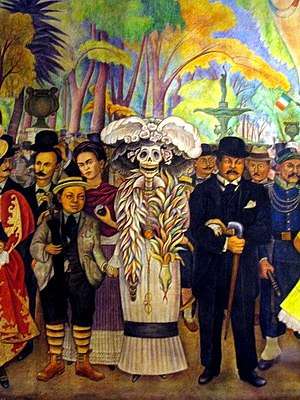
A similar argument was presented by a committee of anthropologists to request the government of the Republic to expel the Summer Linguistic Institute (SIL), in the year 1979, which was accused of promoting the division of indigenous peoples by translating the Bible into vernacular languages and evangelizing in a Protestant creed that threatened the integrity of popular cultures. The Mexican government paid attention to the call of the anthropologists and canceled the agreement that had held with the SIL. Conflicts have also occurred in other areas of social life. For example, given that Jehovah's Witnesses are prohibited from surrendering honors to national symbols (something that is done every Monday in Mexican public schools), children who have been educated in that religion were expelled from public schools. This type of problem can only be solved with the intervention of the National Commission of Human Rights, and not always with favorable results for children.
The impact of the Catholic religion in Mexico has also caused a fusion of elements. Beyond churches and religious denominations, a phenomenon persists in Mexico that some anthropologists and sociologists call "popular religion", that is, religion as the practice and understanding of the people. In Mexico, the main component is the Catholic religion, to which elements of other beliefs have been added, already of pre-Hispanic, African or Asian origin. In general, popular religiosity is viewed with bad eyes by institutionally structured religions. One of the most exemplary cases of popular religiosity is the cult of Holy Dead (Santa Muerte). The Catholic hierarchy insists on describing it as a satanic cult. However, most of the people who profess this cult declare themselves to be Catholic believers, and consider that there is no contradiction between the tributes they offer to the Christ Child and the adoration of God. Other examples are the representations of the Passion of Christ and the celebration of Day of the Dead, which take place within the framework of the Catholic Christian imaginary, but under a very particular reinterpretation of its protagonists.
The presence of Jews in Mexico dates back to 1521, when Hernán Cortés conquered the Aztecs, accompanied by several Conversos.[419] According to the 2010 census, there are 67,476 Jews in Mexico.[1] Islam in Mexico is practiced mostly by Arab Mexicans. In the 2010 census 18,185 Mexicans reported belonging to an Eastern religion,[1] a category which includes a tiny Buddhist population.
Women
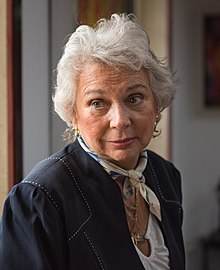
Until the twentieth century, Mexico was an overwhelmingly rural country, with rural women's status defined within the context of the family and local community. With urbanization beginning in the sixteenth century, following the Spanish conquest of the Aztec empire, cities have provided economic and social opportunities not possible within rural villages. Beginning in the late nineteenth century, women including middle-class women began working outside the home in offices and factories, and the gained access to education.[420][421] Women were granted suffrage in 1953.[422] In the 21st century, Mexican women are prominent in politics, academia, journalism, literature, and visual arts among other fields. In President Andrés Manuel López Obrador's first cabinet following his 2018 election, he appointed women in equal numbers as men.[423] However, a wave of feminism in 2020 has criticized the president for his tone-deaf response to murders of women in Mexico.[424]
Mexico is among the countries that treat particular murders of women as femicide.[425] In 2014, Mexico had the 16th highest rate of homicides committed against women in the world.[426] The remains of the victims were frequently mutilated.[427] According to a 1997 study, domestic abuse in Mexican culture "is embedded in gender and marital relations fostered in Mexican women's dependence on their spouses for subsistence and for self-esteem, sustained by ideologies of romantic love, by family structure and residential arrangements".[428] The perpetrators are often the boyfriend, father-in-law, ex-husbands or husbands but only 1.6% of the murder cases led to an arrest and sentencing in 2015.[427] After a particularly well-publicized gruesome femicide followed by that of a kidnapped little girl, women began protesting more vociferously, falling on deaf ears, including those of President López Obrador. This is the first new and major movement with which his presidency has had to deal. On International Women's Day (8 March) in 2020, women staged a massive demonstration in Mexico City with some 80,000 participants. On Monday, 9 March 2020, the second day of action was marked by the absence of women at work, in class, shopping and other public activities. The "Day Without Women" (Día Sin Nosotras) was reported in the international press along with the previous day's demonstrations.[429][430]
Culture
Mexican culture reflects the complexity of the country's history through the blending of indigenous cultures and the culture of Spain, imparted during Spain's 300-year colonial rule of Mexico. Exogenous cultural elements have been incorporated into Mexican culture as time has passed.
The Porfirian era (el Porfiriato), in the last quarter of the 19th century and the first decade of the 20th century, was marked by economic progress and peace. After four decades of civil unrest and war, Mexico saw the development of philosophy and the arts, promoted by President Díaz himself. Since that time, as accentuated during the Mexican Revolution, cultural identity has had its foundation in the mestizaje, of which the indigenous (i.e. Amerindian) element is the core. In light of the various ethnicities that formed the Mexican people, José Vasconcelos in La Raza Cósmica (The Cosmic Race) (1925) defined Mexico to be the melting pot of all races (thus extending the definition of the mestizo) not only biologically but culturally as well.[431] Other Mexican intellectuals grappled with the idea of Lo Mexicano, which seeks "to discover the national ethos of Mexican culture."[432] Nobel laureate Octavio Paz explores the notion of a Mexican national character in The Labyrinth of Solitude.
Painting
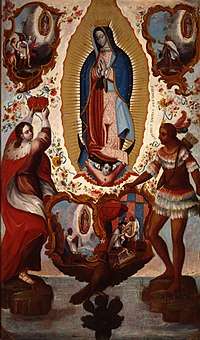
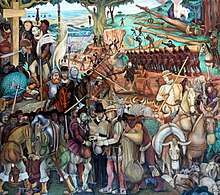
Painting is one of the oldest arts in Mexico. Cave painting in Mexican territory is about 7500 years old and has been found in the caves of the Baja California Peninsula. Pre-Hispanic Mexico is present in buildings and caves, in Aztec codices, in ceramics, in garments, etc. .; examples of this are the Maya mural paintings of Bonampak, or those of Teotihuacán, those of Cacaxtla and those of Monte Albán.
Mural painting with religious themes had an important flowering during the 16th century; the same in religious constructions as in houses of lineage; such is the case of the convents of Acolman, Actopan, Huejotzingo, Tecamachalco and Zinacantepec. These were also manifested in illustrated manuscripts such as the 1576 Florentine codex overseen by Franciscan Bernardino de Sahagún. Most art in the colonial era was religious, but starting in the late seventeenth century and most prominently in the eighteenth century, secular portraits and casta painting appeared. Important painters of the late colonial period were Juan Correa, Cristóbal de Villalpando and Miguel Cabrera.
Nineteenth-century painting had a marked romantic influence; landscapes and portraits were the greatest expressions of this era. Hermenegildo Bustos is one of the most appreciated painters of the historiography of Mexican art. Other painters include Santiago Rebull, Félix Parra, Eugenio Landesio, and his noted pupil, the landscape artist José María Velasco.[434]
Mexican painting of the 20th century has achieved world renown with figures such as David Alfaro Siqueiros, José Clemente Orozco, Joaquín Clausell, Frida Kahlo and Diego Rivera, a generation of idealists who marked the image of modern Mexico in the face of strong social and economic criticism. The Oaxacan School quickly gained fame and prestige, diffusion of ancestral and modern culture. Freedom of design is observed in relation to the color and texture of the canvases and murals as a period of transition between the 20th century and the 21st century. Federico Cantú Garza, Juan O'Gorman, and Rufino Tamayo are also important artists. Diego Rivera, the most well-known figure of Mexican muralism, painted the Man at the Crossroads at the Rockefeller Center in New York City, a huge mural that was destroyed by the Rockefellers the next year because of the inclusion of a portrait of Russian communist leader Lenin.[435] Some of Rivera's murals are displayed at the Mexican National Palace and the Palace of Fine Arts.
Some of the most outstanding painters in the late 20th century and early 21st century: Francisco Toledo was a Mexican Zapotec painter, sculptor, and graphic artist. In a career that spanned seven decades, Toledo produced thousands of works of art and became widely regarded as one of Mexico's most important contemporary artists. Verónica Ruiz de Velasco is a neofigurative painter and muralist. Both Verónica Ruiz de Velasco and Francisco Toledo were students of Rufino Tamayo. Gilberto Aceves Navarro is also considered an important contemporary artist.
Throughout history several prominent painters of different nationalities have expressed in their works the face of Mexico. Among the most outstanding we can mention are Claudio Linati, Daniel Thomas Egerton, Carl Nebel, Thomas Moran, and Leonora Carrington.
 Many codices were made both during Pre-Hispanic and colonial eras. 1576 Florentine Codex of Bernardino de Sahagún
Many codices were made both during Pre-Hispanic and colonial eras. 1576 Florentine Codex of Bernardino de Sahagún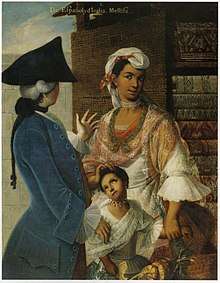
Sculpture
Sculpture was an integral part of pre-Hispanic Mesoamerican civilizations, (Mayans, Olmecs, Toltecs, Mixtecs, Aztecs), and others, usually religious in nature. From the Spanish conquest in 1521, civil and religious sculpture was created by indigenous artists, with guidance from Spaniards, so some pre-Hispanic features are evident. Since the 17th century, white and mestizo sculptors have created works with a marked influence of European classicism. After independence in 1821, sculpture was influenced by Romanticism, which tended to break the strict norms and models of classicism, while it pursued ideas influenced by realism and nationalism. Religious sculpture was reduced to a sporadic imagery, while the secular sculpture continued in portraits and monumental art of a civic nature. Between 1820 and 1880 the predominant themes were, successively: religious images, biblical scenes, allegories to the symbols of the independence insurgency, scenes and personages of pre-Hispanic history, and busts of the old aristocracy, of the nascent bourgeoisie and commanders of the pre-revolution. During the 20th century, some important exponents of Mexican sculpture are Juan Soriano, José Luis Cuevas, and Enrique Carbajal (also known as Sebastián).
Architecture
The presence of the humans in the Mexican territory has left important archaeological findings of great importance for the explanation of the habitat of primitive man and contemporary man. The Mesoamerican civilizations managed to have great stylistic development and proportion on the human and urban scale, the form was evolving from simplicity to aesthetic complexity; in the north of the country the adobe and stone architecture is manifested, the multifamily housing as we can see in Casas Grandes; and the troglodyte dwelling in caves of the Sierra Madre Occidental. Urbanism had a great development in pre-Hispanic cultures, where we can see the magnitude of the cities of Teotihuacán, Tollan-Xicocotitlan and México-Tenochtitlan, within the environmentalist urbanism highlight the Mayan cities to be incorporated into the monumentality of its buildings with the thickness of the jungle and complex networks of roads called sakbés. Mesoamerican architecture is noted for its pyramids which are the largest such structures outside of Ancient Egypt.
Spanish Colonial architecture is marked by the contrast between the simple, solid construction demanded by the new environment and the Baroque ornamentation exported from Spain. Mexico, as the center of New Spain has some of the most renowned buildings built in this style. With the arrival of the Spaniards, architectural theories of the Greco-Roman order with Arab influences were introduced. Due to the process of evangelization, when the first monastic temples and monasteries were built, their own models were projected, such as the mendicant monasteries, unique in their type in architecture. The interaction between Spaniards and natives gave rise to artistic styles such as the so-called tequitqui (from Nahuatl: worker). Years later the baroque and mannerism were imposed in large cathedrals and civil buildings, while rural areas are built haciendas or stately farms with Mozarabic tendencies.
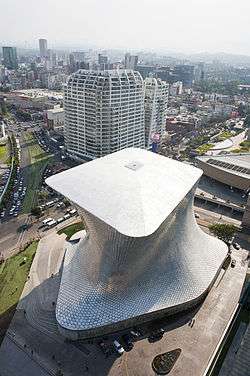
In the 19th century the neoclassical movement arose as a response to the objectives of the republican nation, one of its examples are the Hospicio Cabañas where the strict plastic of the classical orders are represented in their architectural elements, new religious buildings also arise, civilian and military that demonstrate the presence of neoclassicism. Romanticists from a past seen through archeology show images of medieval Europe, Islamic and pre-Hispanic Mexico in the form of architectural elements in the construction of international exhibition pavilions looking for an identity typical of the national culture. The art nouveau, and the art deco were styles introduced into the design of the Palacio de Bellas Artes to mark the identity of the Mexican nation with Greek-Roman and pre-Hispanic symbols.
Modern architecture in Mexico has an important development in the plasticity of form and space, José Villagrán García develops a theory of form that sets the pattern of teaching in many schools of architecture in the country within functionalism. The emergence of the new Mexican architecture was born as a formal order of the policies of a nationalist state that sought modernity and the differentiation of other nations. The development of a Mexican modernist architecture was perhaps mostly fully manifested in the mid-1950s construction of the Ciudad Universitaria, Mexico City, the main campus of the National Autonomous University of Mexico. Designed by the most prestigious architects of the era, including Mario Pani, Eugenio Peschard, and Enrique del Moral, the buildings feature murals by artists Diego Rivera, David Alfaro Siqueiros, and José Chávez Morado. It has since been recognized as a UNESCO World Heritage Site.[436]
Juan O'Gorman was one of the first environmental architects in Mexico, developing the "organic" theory, trying to integrate the building with the landscape within the same approaches of Frank Lloyd Wright.[437] In the search for a new architecture that does not resemble the styles of the past, it achieves a joint manifestation with the mural painting and the landscaping.
The Jalisco School was a proposal of those socio-political movements that the country demanded. Luis Barragán combined the shape of the space with forms of rural vernacular architecture of Mexico and Mediterranean countries (Spain-Morocco), integrating an impressive color that handles light and shade in different tones and opens a look at the international minimalism. He won the 1980 Pritzker Prize, the highest award in architecture.
Mexican architecture is a cultural phenomenon born of the ideology of nationalist governments of the 20th century, which was shaping the identity image by its colorful and variegated ornamental elements inherited from ancestral cultures, classical and monumental forms and, subsequently, the incorporation of modernism and cutting-edge international trends.
Photography
.jpg)
Mexico has been photographed since the nineteenth century, when the technology was first developed. During the Porfiriato, Díaz realized the importance of photography in shaping the understanding of his regime and its accomplishments. The government hired Guillermo Kahlo (father of painter Frida Kahlo) to create photographic images of Mexico's new industrial structures as well as its pre-Hispanic and colonial past. Photographer Hugo Brehme specialized in images of "picturesque" Mexico, with images of Mexican places and often rural people. During the Mexican Revolution, photographers chronicled the conflict, usually in the aftermath of a battle, since large and heavy equipment did not permit action shots. Agustín Victor Casasola is the most famous of photographer of the revolutionary era, and he collected other photographers' images in the Casasola Archive; his vast collection was purchased by the Mexican government and is now part of the government photographic repository, the Fototeca.[438][439] After the revolution, Mexican photographers created photographs as art images.[440] Among others, notable Mexican photographers include Manuel Álvarez Bravo, Héctor García Cobo, and Graciela Iturbide.
Literature
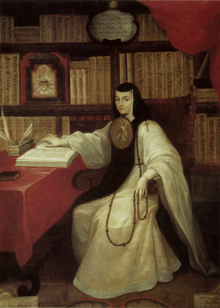
Mexican literature has its antecedents in the literature of the indigenous settlements of Mesoamerica. Poetry had a rich cultural tradition in prehispanic Mexico, being divided into two broad categories—secular and religious. Aztec poetry was sung, chanted, or spoken, often to the accompanyment of a drum or a harp. While Tenochtitlan was the political capital, Texcoco was the cultural center; the Texcocan language was considered the most melodious and refined. The best well-known prehispanic poet is Nezahualcoyotl.[441]
Literature during the 16th century consisted largely of histories of Spanish conquests, and most of the writers at this time were from Spain. Bernal Díaz del Castillo's True History of the Conquest of Mexico is still widely read today. Spanish-born poet Bernardo de Balbuena extolled the virtues of Mexico in Grandeza mexicana (Mexican grandeur) (1604); Francisco de Terrazas was the first Mexican-born poet to attain renown.[442] Baroque literature flourished in the 17th century; the most notable writers of this period were Juan Ruiz de Alarcón and Juana Inés de la Cruz. Sor Juana was famous in her own time, called the "Ten Muse."[442] The 18th and early 19th centuries gave us José Joaquín Fernández de Lizardi, whose The Mangy Parrot ("El Periquillo Sarniento"), is said to be the first Latin American novel. Several Jesuit humanists wrote at this time, and they were among the first to call for independence from Spain.[442]
Other writers include Ignacio Manuel Altamirano, Octavio Paz (Nobel Laureate), Carlos Fuentes, Alfonso Reyes, Renato Leduc, Carlos Monsiváis, Elena Poniatowska, Mariano Azuela (Los de abajo) and Juan Rulfo (Pedro Páramo). Bruno Traven wroteCanasta de cuentos mexicano (A basket of Mexican tales) and El tesoro de la Sierra Madre (Treasure of the Sierra Madre), Luis Spota, Jaime Sabines, Martín Luis Guzmán, Nellie Campobello, (Cartucho), and Valeria Luiselli (Faces in the Crowd) are also noteworthy.[443]
Cinema
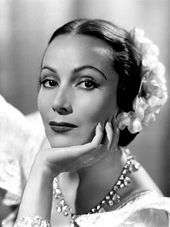
Mexican films from the Golden Age in the 1940s and 1950s are the greatest examples of Latin American cinema, with a huge industry comparable to the Hollywood of those years. Mexican films were exported and exhibited in all of Latin America and Europe. María Candelaria (1943) by Emilio Fernández, was one of the first films awarded a Palme d'Or at the Cannes Film Festival in 1946, the first time the event was held after World War II. The famous Spanish-born director Luis Buñuel realized in Mexico between 1947 and 1965 some of his masterpieces like Los Olvidados (1949) and Viridiana (1961). Famous actors and actresses from this period include María Félix, Pedro Infante, Dolores del Río, Jorge Negrete and the comedian Cantinflas.
More recently, films such as Como agua para chocolate (1992), Cronos (1993), Y tu mamá también (2001), and Pan's Labyrinth (2006) have been successful in creating universal stories about contemporary subjects, and were internationally recognized, as in the prestigious Cannes Film Festival. Mexican directors Alejandro González Iñárritu (Amores perros, Babel, Birdman, The Revenant), Alfonso Cuarón (Children of Men, Harry Potter and the Prisoner of Azkaban, Gravity), Guillermo del Toro, Carlos Carrera (The Crime of Father Amaro), screenwriter Guillermo Arriaga and photographer Emmanuel Lubezki are some of the most known present-day film makers. Numerous Mexican actors have achieved recognition as Hollywood stars.[444]
Media
There are three major television companies in Mexico that own the primary networks and broadcast covering all nation, Televisa, TV Azteca and Imagen Television. Televisa is also the largest producer of Spanish-language content in the world and also the world's largest Spanish-language media network.[445] Media company Grupo Imagen is another national coverage television broadcaster in Mexico, that also owns the newspaper Excélsior. Grupo Multimedios is another media conglomerate with Spanish-language broadcasting in Mexico, Spain, and the United States. The telenovelas are very traditional in Mexico and are translated to many languages and seen all over the world with renowned names like Verónica Castro, Lucía Méndez and Thalía.
Mexican cuisine

In 2005, Mexico presented the candidature of its gastronomy for World Heritage Site of UNESCO, being the first occasion in which a country had presented its gastronomic tradition for this purpose.[448] However, in a first instance the result was negative, because the committee did not place the proper emphasis on the importance of corn in Mexican cuisine.[449] Finally, on 16 November 2010 Mexican gastronomy was recognized as Intangible cultural heritage by UNESCO.[450] In addition, Daniela Soto-Innes was named the best female chef in the world by The World's Best 50 Restaurants in April 2019.[451]
The origin of the current Mexican cuisine is established during the Spanish colonial era, a mixture of the foods of Spain with native indigenous ingredients.[452] Of foods originated in Mexico is the corn, the pepper vegetables (together with Central and South America), calabazas (together with the Americas), avocados, sweet potato (together with Central and South America), the turkey (together with the Americas) and other fruits and spices. Other Indigenous products are many beans. Similarly, some cooking techniques used today are inherited from pre-Hispanic peoples, such as the nixtamalization of corn, the cooking of food in ovens at ground level, grinding in molcajete and metate. With the Spaniards came the pork, beef and chicken meats; peppercorn, sugar, milk and all its derivatives, wheat and rice, citrus fruits and another constellation of ingredients that are part of the daily diet of Mexicans.
From this meeting of millennia old two culinary traditions, were born pozole, mole sauce, barbacoa and tamale is in its current forms, the chocolate, a large range of breads, tacos, and the broad repertoire of Mexican street foods. Beverages such as atole, champurrado, milk chocolate and aguas frescas were born; desserts such as acitrón and the full range of crystallized sweets, rompope, cajeta, jericaya and the wide repertoire of delights created in the convents of nuns in all parts of the country.
Music
Mexican society enjoys a vast array of music genres, showing the diversity of Mexican culture. Traditional music includes mariachi, banda, norteño, ranchera and corridos; on an everyday basis most Mexicans listen to contemporary music such as pop, rock, etc. in both English and Spanish. Mexico has the largest media industry in Latin America, producing Mexican artists who are famous in Central and South America and parts of Europe, especially Spain.
Sports
Mexico's most popular sport is association football. It is commonly believed that football was introduced in Mexico by Cornish miners at the end of the 19th century. By 1902 a five-team league had emerged with a strong British influence.[453][454] Mexico's top clubs are América with 12 championships, Guadalajara with 11, and Toluca with 10.[455] Antonio Carbajal was the first player to appear in five World Cups,[456] and Hugo Sánchez was named best CONCACAF player of the 20th century by IFFHS.[457] Rafael Márquez is the only Mexican to have won the Champions League.[458]
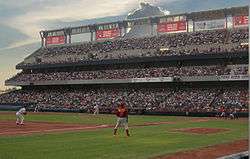
The Mexican professional baseball league is named the Liga Mexicana de Beisbol. While usually not as strong as the United States, the Caribbean countries and Japan, Mexico has nonetheless achieved several international baseball titles.[459][460] Mexican teams have won the Caribbean Series nine times. Mexico has had several players signed by Major League teams, the most famous of them being Dodgers pitcher Fernando Valenzuela.[458]
Mexico City hosted the XIX Olympic Games in 1968, making it the first Latin American city to do so.[461] The country has also hosted the FIFA World Cup twice, in 1970 and 1986.[462]
In 2013, Mexico's basketball team won the Americas Basketball Championship and qualified for the 2014 Basketball World Cup where it reached the playoffs. Because of these achievements the country earned the hosting rights for the 2015 FIBA Americas Championship.[463]
Bullfighting (Spanish: corrida de toros) came to Mexico 500 years ago with the arrival of the Spanish. Despite efforts by animal rights activists to outlaw it, bullfighting remains a popular sport in the country, and almost all large cities have bullrings. Plaza México in Mexico City, which seats 45,000 people, is the largest bullring in the world.[464]
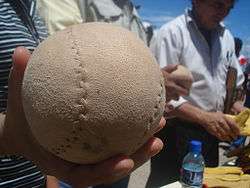
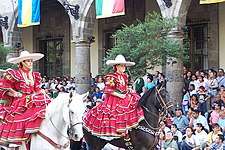
Mexico is an international power in professional boxing.[458] Thirteen Olympic boxing medals have been won by Mexico.[466]
Professional wrestling (or Lucha libre in Spanish) is a major crowd draw with national promotions such as AAA, CMLL and others.[458]
Coat of arms
The current coat of arms of Mexico (Spanish: Escudo Nacional de México, literally "national shield of Mexico") has been an important symbol of politics and culture of Mexico for centuries. It depicts a Mexican golden eagle perched on a prickly pear cactus devouring a rattlesnake.[467] The design is rooted in the legend that the Aztec people would know where to build their city once they saw an eagle eating a snake on top of a lake.[467] To the people of Tenochtitlan, this symbol had strong religious connotations, and to the Europeans, it came to symbolize the triumph of good over evil (with the snake sometimes representative of the serpent in the Garden of Eden).
Health
Since the early 1990s, Mexico entered a transitional stage in the health of its population and some indicators such as mortality patterns are identical to those found in highly developed countries like Germany or Japan.[468] Mexico's medical infrastructure is highly rated for the most part and is usually excellent in major cities,[469][470] but rural communities still lack equipment for advanced medical procedures, forcing patients in those locations to travel to the closest urban areas to get specialized medical care.[192] Social determinants of health can be used to evaluate the state of health in Mexico.
State-funded institutions such as Mexican Social Security Institute (IMSS) and the Institute for Social Security and Services for State Workers (ISSSTE) play a major role in health and social security. Private health services are also very important and account for 13% of all medical units in the country.[471]
Medical training is done mostly at public universities with much specializations done in vocational or internship settings. Some public universities in Mexico, such as the University of Guadalajara, have signed agreements with the U.S. to receive and train American students in Medicine. Health care costs in private institutions and prescription drugs in Mexico are on average lower than that of its North American economic partners.[469]
Education
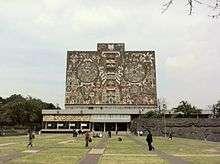
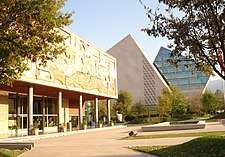
In 2004, the literacy rate was at 97%[472] for youth under the age of 14 and 91% for people over 15,[473] placing Mexico at the 24th place in the world rank according to UNESCO.[474]
The National Autonomous University of Mexico ranks 103th in the QS World University Rankings, making it the best university in Mexico, after it comes the Monterrey Institute of Technology and Higher Education as the best private school in Mexico and 158th worldwide in 2019.[475] Private business schools also stand out in international rankings. IPADE and EGADE, the business schools of Universidad Panamericana and of Monterrey Institute of Technology and Higher Education respectively, were ranked in the top 10 in a survey conducted by The Wall Street Journal among recruiters outside the United States.[476]
Notes
- Defined as persons who live in a household where an indigenous language is spoken by one of the adult family members, and or people who self-identified as indigenous ("Criteria del hogar: De esta manera, se establece, que los hogares indígenas son aquellos en donde el jefe y/o el cónyuge y/o padre o madre del jefe y/o suegro o suegra del jefe hablan una lengua indígena y también aquellos que declararon pertenecer a un grupo indígena."[355]) AND persons who speak an indigenous language but who do not live in such a household ("Por lo antes mencionado, la Comisión Nacional Para el Desarrollo de los Pueblos Indígenas de México (CDI) considera población indígena (PI) a todas las personas que forman parte de un hogar indígena, donde el jefe(a) del hogar, su cónyuge y/o alguno de los ascendientes (madre o padre, madrastra o padrastro, abuelo(a), bisabuelo(a), tatarabuelo(a), suegro(a)) declaro ser hablante de lengua indígena. Además, también incluye a personas que declararon hablar alguna lengua indígena y que no forman parte de estos hogares."[356])
References
- "Censo de Población y Vivienda 2010 – Cuestionario básico". INEGI. Retrieved 4 March 2011.
- "Political Constitution of the United Mexican States, title 2, article 40" (PDF). MX Q: SCJN. Archived from the original (PDF) on 11 May 2011. Retrieved 14 August 2010.
- Rafaela Castro (2000). Chicano Folklore: A Guide to the Folktales, Traditions, Rituals and Religious Practices of Mexican Americans. Oxford University Press. p. 83. ISBN 978-0-19-514639-4.
- "North America :: Mexico — The World Factbook - Central Intelligence Agency". www.cia.gov. Retrieved 13 April 2020.
- "Mexico". International Monetary Fund. Retrieved 19 October 2019.
- "CONEVAL INFORMA LA EVOLUCIÓN DE LA POBREZA 2010-2016" (PDF). CONEVAL. 30 August 2017. Retrieved 25 February 2019.
- "Human Development Report 2019". United Nations Development Programme. 2019. Retrieved 24 December 2019.
- INALI (13 March 2003). "General Law of Linguistic Rights of the Indigenous Peoples" (PDF). Retrieved 7 November 2010.
- "Catálogo de las lenguas indígenas nacionales: Variantes lingüísticas de México con sus autodenominaciones y referencias geoestadísticas". Inali.gob.mx. Retrieved 18 July 2014.
- Merriam-Webster's Geographical Dictionary, 3rd ed., Springfield, Massachusetts, United States, Merriam-Webster; p. 733
- "Mexico". The World Factbook. Central Intelligence Agency.
- Chavez, Victor (22 January 2016). "DF no es el estado 32, aclaran legisladores". El Financiero. Retrieved 15 July 2019.
- "MEXICO: Metropolitan Areas". City Population. Retrieved 13 July 2019.
- "MAPPED: THE 6 CRADLES OF CIVILIZATION". Mapscaping. 8 May 2018. Retrieved 13 July 2019.
- Archer, Christon I. "Military: Bourbon New Spain" in Encyclopedia of Mexico. Chicago: Fitzroy Dearborn 1997, pp. 898-900.
- "History of Mexico". The History Channel. 9 November 2009. Retrieved 15 July 2019.
- Rama, Anahi; Stargardter, Gabriel (28 June 2012). "Chronology: Checkered history of the PRI's rule in Mexico". Reuters.
- "Mexico's history of one-party rule". The Washington Post. 5 January 2012.
- Padgett, L. Vincent (1957). "Mexico's One-Party System: A Re-Evaluation". The American Political Science Review. 51 (4): 995–1008. doi:10.2307/1952448. JSTOR 1952448.
- Whitehead, Laurence (2007). "An elusive transition: The slow motion demise of authoritarian dominant party rule in Mexico". Democratization. 2 (3): 246–269. doi:10.1080/13510349508403441.
- Paweł Bożyk (2006). "Newly Industrialized Countries". Globalization and the Transformation of Foreign Economic Policy. Ashgate Publishing. p. 164. ISBN 978-0-7546-4638-9.
- Mauro F. Guillén (2003). "Multinationals, Ideology, and Organized Labor". The Limits of Convergence. Princeton University Press. p. 126 (table 5.1). ISBN 978-0-691-11633-4.
- David Waugh (2000). "Manufacturing industries (chapter 19), World development (chapter 22)". Geography, An Integrated Approach (3rd ed.). Nelson Thornes. pp. 563, 576–579, 633, and 640. ISBN 978-0-17-444706-1.
- N. Gregory Mankiw (2007). Principles of Economics (4th ed.). Mason, Ohio: Thomson/South-Western. ISBN 978-0-324-22472-6.
- "Mexico (05/09)". US Department of State. 25 June 2012. Retrieved 17 July 2013.
- "CRS Report for Congress" (PDF). Congressional Research Service. 4 November 2008. Retrieved 17 July 2013.
- James Scott; Matthias vom Hau; David Hulme. "Beyond the BICs: Strategies of influence". The University of Manchester. Archived from the original on 25 May 2017. Retrieved 11 April 2012.
- "How to compare regional powers: analytical concepts and research topics" (PDF). British International Studies Association. Archived from the original (PDF) on 30 November 2012. Retrieved 11 April 2012.
- "Ministry of Foreign Affairs of Japan" (PDF). Retrieved 7 May 2012.
- "Oxford Analytica". Archived from the original on 24 April 2007. Retrieved 17 July 2013.
- "G8: Despite Differences, Mexico Comfortable as Emerging Power". ipsnews.net. 5 June 2007. Archived from the original on 16 August 2008. Retrieved 30 May 2010.
- "Global Peace Index 2019: Measuring Peace in a Complex World" (PDF). Vision of Humanity. Sydney: Institute for Economics & Peace. June 2019. Retrieved 4 June 2020.
- Brianna Lee; Danielle Renwick; Rocio Cara Labrador (24 January 2019). "Mexico's Drug War". Council on Foreign Relations. Retrieved 19 July 2019.
- "UNESCO World Heritage Centre — World Heritage List". UNESCO. Retrieved 25 May 2012.
- "Mexico's World Heritage Sites Photographic Exhibition at UN Headquarters". whc.unesco.org. Retrieved 30 May 2010.
- Table of World Heritage Sites by country
- "What is a mega-diverse country?". Mexican biodiversity. Retrieved 13 July 2019.
- "México ocupa el sexto lugar en turismo a nivel mundial". www.expansion.mx. CNN Expansión. 28 August 2018. Retrieved 8 January 2019.
- William Bright (2004). Native American Placenames of the United States. University of Oklahoma Press. p. 281. ISBN 978-0-8061-3598-4.
- "El cambio de la denominación de "Estados Unidos Mexicanos" por la de "México" en la Constitución Federal". ierd.prd.org.mx. Archived from the original on 1 November 2008. Retrieved 4 November 2009.
- "Constitución Mexicana de 1857". www.tlahui.com. Retrieved 30 May 2010.
- "Leyes Constitucionales de 1836". Cervantesvirtual.com. 29 November 2010. Archived from the original on 23 July 2012. Retrieved 17 July 2013.
- Werner 2001, pp. 386–.
- Susan Toby Evans; David L. Webster (2013). Archaeology of Ancient Mexico and Central America: An Encyclopedia. Routledge. p. 54. ISBN 978-1-136-80186-0.
- Colin M. MacLachlan (13 April 2015). Imperialism and the Origins of Mexican Culture. Harvard University Press. p. 39. ISBN 978-0-674-28643-6.
- Carmack, Robert; et al. (1996). The Legacy of Mesoamerica: History and Culture of a Native American Civilization. New Jersey: Prentice Hall.
- Diehl, Richard A. (2004). The Olmecs : America's First Civilization. London: Thames and Hudson. pp. 9–25.
- "MAPPED: THE 6 CRADLES OF CIVILIZATION". Mapscaping. 30 May 2018. Retrieved 14 July 2019.
- Sampson, Geoffrey; Writing Systems: A Linguistic Introduction, Hutchinson (London), 1985.
- Cowgill, George (1997). "State and Society at Teotihuacan, Mexico". Annual Review of Anthropology. 26 (1): 129–161. doi:10.1146/annurev.anthro.26.1.129. ISSN 0084-6570. OCLC 202300854.
- "Ancient Civilizations of Mexico". Ancient Civilizations World. 12 January 2017. Retrieved 14 July 2019.
- "The word "Azteca" was NOT created by Von Humboldt!". Mexicka.org. 31 May 2014. Retrieved 13 July 2019.
- Miguel Leon Portilla (2000). "Aztecas, disquisiciones sobre un gentilicio" (PDF). www.ejournal.unam.mx. p. 6. Archived from the original (PDF) on 16 June 2015. Retrieved 26 November 2014.
- Berdan, et al. (1996), Aztec Imperial Strategies. Dumbarton Oaks, Washington, DC
- Coe, Michael D.; Rex Koontz (2002). Mexico: from the Olmecs to the Aztecs (5th edition, revised and enlarged ed.). London and New York: Thames & Hudson. ISBN 978-0-500-28346-2. OCLC 50131575.
- "The Enigma of Aztec Sacrifice". Natural History. Retrieved 16 December 2011.
- Weaver, Muriel Porter (1993). The Aztecs, Maya, and Their Predecessors: Archaeology of Mesoamerica (3rd ed.). San Diego, CA: Academic Press. ISBN 978-0-12-739065-9. OCLC 25832740.
- Diaz, B., 1963, The Conquest of New Spain, London: Penguin Books, ISBN 0140441239
- Townsend, Camilla. Malintzin's choices: An Indian woman in the conquest of Mexico. New Mexico: University of New Mexico Press 2006.
- Cortés, Hernán. Five Letterss to the Emperor. Trans. J. Bayard Morris. New York: W.W. Norton 1969
- Díaz del Castillo, Bernal. True History of the Conquest of Mexico. various editions. Abridge version translated by J.M. Cohen, The Conquest of New Spain. London: Penguin Books 1963.
- Fuentes, Patricia de. The Conquistadors: First-Person ccounts of the Conquest of Mexico. Norman: Norman: University of Oklahoma Press 1993.
- Alva Ixtlilxochitl, Fernando de. Ally of Cortés: Account 13 of the Coming of the Spaniards and the Beginning of Evangelical Law. Trans. Douglass K. Ballentine. El Paso: Texas Western Press 1969.
- Altman, Ida et al. The Early History of Greater Mexico, chapter 4, "Narratives of the Conquest". Prentice Hall 2003, pp. 73-96.
- León-Portilla, Miguel. The Broken Spears: The Aztec Accounts of the Conquest of Mexico. Boston: Beacon Press 1992.
- Lockhart, James. We People Here: Nahuatl Accounts of the Conquest of Mexico. Berkeley: University of California Press 1993.
- True Peters, Stephanie (2004). Smallpox in the New World. Marshall Cavendish. ISBN 978-0-7614-1637-1.i
- Flight, Colette (17 February 2011). "Smallpox: Eradicating the Scourge". BBC News | History. Retrieved 30 December 2011.
- Koplow, David A. (2003). Smallpox: The Fight to Eradicate a Global Scourge. University of California Press. p. 270. ISBN 978-0-520-23732-2.
- "Smallpox: Conquered Killer". National Geographic. 2 December 2009. Retrieved 30 December 2011.
- Baker, Andy (2013). Shaping the Developing World: The West, the South, and the Natural World. p. 324. ISBN 9781483311081.
- Gibson, Charles (1964). The Aztecs Under Spanish Rule: A History of the Indians of the Valley of Mexico, 1519–1810 (Reprinted 1976 ed.). Stanford, CA: Stanford University Press. ISBN 978-0-8047-0196-9. OCLC 190295.
- Chuchiak, John F. IV, "Inquisition" in Encyclopedia of Mexico. Chicago: Fitzroy Dearborn 1997, pp. 704-708
- Salvucci, Linda. "Adams-Onís Treaty (1819)". Encyclopedia of Latin American History and Culture, vol. 1, pp. 11-12. New York: Charles Scribner's Sons 1996.
- McCaa, Robert (8 December 1997). "The Peopling of Mexico from Origins to Revolution". University of Minnesota.edu. Retrieved 13 July 2019.
- Sluyter, Andrew (2012). Black Ranching Frontiers: African Cattle Herders of the Atlantic World, 1500–1900. Yale University Press. p. 240. ISBN 9780300179927. Retrieved 8 October 2016.
- Russell, James W. (2009). Class and Race Formation in North America. University of Toronto Press. p. 26. ISBN 9780802096784. Retrieved 13 December 2016.
- Carrillo, Rubén. "Asia llega a América. Migración e influencia cultural asiática en Nueva España (1565–1815)". www.raco.cat. Asiadémica. Retrieved 13 December 2016.
- The Penguin Atlas of World Population History, pp. 291–92.
- Lerner, Victoria. "Consideraciones sobre la población de la Nueva España (1793–1810)" [Considerations on the population of New Spain (1793–1810)] (PDF) (in Spanish). Mexico City: El Colegia de México. Archived from the original (PDF) on 13 November 2018. Retrieved 4 June 2020.
- Cline, Sarah. "Guadalupe and the Castas: The Power of a Singular Colonial Mexican Painting." Mexican Studies/Esudios Mexicanos Vol. 31, Issue 2, Summer 2015, pages 218-46
- Cope, R. Douglas. The Limits of Racial Domination: Plebeian Society in Colonial Mexico City, 1660-1720. Madison, Wis.: U of Wisconsin, 1994.
- Vinson, Ben III. Before Mestizaje: The Frontiers of Race and Caste in Colonial Mexico. New York: Cambridge University Press 2018.
- Sierra Silva, Pablo Miguel. Urban Slavery in Colonial Mexico: Puebla de los Angeles 1531-1706. New York: Cambridge University Press 2018.
- Deans-Smith, Susan. "Bourbon Reforms" in Encyclopedia of Mexico. Chicago: Fitzroy Dearborn 1997, p. 156
- "God intervened through Our Lady of Guadalupe to evangelize the Americas, explains Guadalupe expert", Catholic News Agency, 11 August 2009, retrieved 14 July 2019
- "Everything You Need To Know About La Virgen De Guadalupe", Huff Post Latino Voices, 12 December 2013, retrieved 14 July 2019
- Ortiz-Ramirez, Eduardo A. The Virgin of Guadalupe and Mexican Nationalism: Expressions of Criollo Patriotism in Colonial Images of the Virgin of Guadalupe. p. 6. ISBN 9780549596509. Retrieved 9 February 2017.
- "Economy of New Spain", Global Security.org, 9 July 2011, retrieved 14 July 2019
- Sempa, Francis P. "China, Spanish America, and the 'Birth of Globalization'". The Diplomat. Retrieved 7 February 2017.
Mexico City, the authors [Peter Gordon, Juan Jose Morales] note, was the 'first world city,' the precursor to London, New York, and Hong Kong, where 'Asia, Europe, and the Americas all met, and where people intermingled and exchanged everything from genes to textiles'.
- Schmal, John P. (17 July 2003). "The Indigenous People of Zacatecas". Latino LA: Comunidad. Retrieved 14 July 2019.
- Charlotte M. Gradie (2000). "The Tepehuan Revolt of 1616: Militarism, Evangelism, and Colonialism in Seventeenth-Century Nueva Vizcaya". The Americas. Salt Lake City: University of Utah Press. 58 (2): 302–303. doi:10.1353/tam.2001.0109.
- Wasserstrom, Robert (1980). "Ethnic Violence and Indigenous Protest: The Tzeltal (Maya) Rebellion of 1712". Journal of Latin American Studies. 12: 1–19.
- Taylor, William B. (1 June 1979). Drinking, Homicide, and Rebellion in Colonial Mexican Villages (1st ed.). Stanford: Stanford University Press. ISBN 978-0804711128.
- White, Benjamin (31 January 2017). "Campeche, Mexico – largest pirate attack in history, now UNESCO listed". In Search of Lost Places. Retrieved 14 July 2019.
- Knispel, Sandra (13 December 2017). "The mysterious aftermath of an infamous pirate raid". University of Rochester Newsletter. Retrieved 14 July 2019.
- "First Printing Press in the Americas was Established in Mexico". Latino Book Review. 2019. Retrieved 14 July 2019.
- "UNIVERSITY OF MEXICO IS THE OLDEST UNIVERSITY IN NORTH AMERICA". Vallarta Daily News. 15 September 2014. Retrieved 14 July 2019.
- "Mexico City's Alameda Central: the inspiration behind NYC's Central Park?". City Express blog. 15 September 2014. Retrieved 14 July 2019.
- "Oldest Public Library in the Americas is in Mexico". Latino Book Review. 2019. Retrieved 14 July 2019.
- "Academy of San Carlos". Mexico es Cultura. Retrieved 14 July 2019.
- "Vanadium Element Facts". Chemicool Periodic Table. 18 October 2012. Retrieved 14 July 2019.
- Archibald, Anna (27 July 2015). "EVERYTHING YOU NEED TO KNOW ABOUT THE HISTORY OF TEQUILA". Liquor.com. Retrieved 14 July 2019.
- Galvez, Francisco (27 June 2017). "A brief History of Charreria". Charro Azteca. Retrieved 14 July 2019.
- "Miguel Hidalgo Biography". Catholic Encyclopedia. Retrieved 30 September 2007.
- "Grito de Dolores". Encyclopaedia Britannica. Retrieved 12 September 2018.
- Angel Miranda Basurto (2002). La Evolucíon de Mėxico [The Evolution of Mexico] (in Spanish) (6th ed.). Mexico City: Editorial Porrúa. p. 358. ISBN 970-07-3678-4.
- "Filipinos in Nueva España: Filipino-Mexican Relations, Mestizaje, and Identity in Colonial and Contemporary Mexico". p. 414.
According to Ricardo Pinzon, these two Filipino soldiers—Francisco Mongoy and Isidoro Montes de Oca—were so distinguished in battle that they are regarded as folk heroes in Mexico. General Vicente Guerrero later became the first president of Mexico of African descent. See Floro L. Mercene, “Central America: Filipinos in Mexican History,” (Ezilon Infobase, 28 January 2005)
- Baten, Jörg (2016). A History of the Global Economy. From 1500 to the Present. Cambridge University Press. p. 133. ISBN 9781107507180.
- Hale, Charles A. Mexican Liberalism in the Age of Mora. New Haven: Yale University Press 1968. p. 224
- "Ways of ending slavery". Encyclopædia Britannica.
- Costeloe, Michael P. "Pastry War" in Encyclopedia of Latin American History and Culture, vol. 4, p. 318. New York: Charles Scribner's Sons 1996.
- Weber, David J., The Mexican Frontier, 1821–1846: The American Southwest under Mexico, University of New Mexico Press, 1982
- Britton, John A. "Liberalism" in Encyclopedia of Mexico. Fitzroy Dearborn 1997, 739
- Hamnett, Brian. "Benito Juárez" in Encyclopedia of Mexico. Chicago: Fitzroy Dearborn 1997, pp. 719-20
- Britton, "Liberalism" p. 740.
- Sullivan, Paul. "Sebastián Lerdo de Tejada" in Encyclopedia of Mexico. Chicago: Fitzroy Dearborn 1997, pp. 736-38
- Adela M. Olvera (2 February 2018). "El Porfiriato en Mexico" [The Porfiriato in Mexico]]]. Inside Mexico.com (in Spanish). Retrieved 18 July 2019.
- Hart, John Mason. Empire and Revolution: The Americans in Mexico since the Civil War. Berkeley: University of California Press Du 2002
- Buchenau, Jürgen. "Científicos". Encyclopedia of Mexico. Chicago: Fitzroy Dearborn 1997, pp. 260-265
- Schmidt, Arthur, "José Ives Limantour" in Encyclopedia of Mexico, pp. 746–49. Fitzroy and Dearborn 1997.
- "cientifico". Encyclopædia Britannica. Retrieved 7 February 2017.
- Brenner, Anita (1 January 1984). The Wind that Swept Mexico: The History of the Mexican Revolution of 1910–1942 (New ed.). University of Texas Press. ISBN 978-0292790247.
- Benjamin, Thomas. La Revolución: Mexico's Great Revolution as Memory, Myth, and History. Austin: University of Texas Press 2000
- Matute, Alvaro. "Mexican Revolution: May 1917 – December 1920" in Encyclopedia of Mexico. Chicago: Fitzroy Dearborn 1997, pp. 862–864.
- "The Mexican Revolution". Public Broadcasting Service. 20 November 1910. Retrieved 17 July 2013.
- Robert McCaa. "Missing millions: the human cost of the Mexican Revolution". University of Minnesota Population Center. Retrieved 17 July 2013.
- "The Mexican Revolution and the United States in the Collections of the Library of Congress, U.S. Involvement Before 1913". Library of Congress. Retrieved 18 July 2019.
- "Punitive Expedition in Mexico, 1916-1917". U.S. Department of State archive. 20 January 2009. Retrieved 18 July 2019.
- "ZIMMERMANN TELEGRAM". The National WWI Museum and Memorial. 2 March 2017. Retrieved 18 July 2019.
- Rafael Hernández Ángeles. "85º ANIVERSARIO DE LA FUNDACIÓN DEL PARTIDO NACIONAL REVOLUCIONARIO (PNR)" [85th anniversary of the founding of the National Revolutionary Party (PRN)]. Instituto Nacional de Estudios Historicos de las Revoluciones de Mexico (in Spanish). Retrieved 18 July 2019.
- "The Mexican Miracle: 1940–1968". World History from 1500. Emayzine. Archived from the original on 3 April 2007. Retrieved 30 September 2007.
- Elena Poniatowska (1975). Massacre in Mexico. Viking, New York. ISBN 978-0-8262-0817-0.
- Kennedy, Duncan (19 July 2008). "Mexico's long forgotten dirty war". BBC News. Retrieved 17 July 2013.
- Krauze, Enrique (January–February 2006). "Furthering Democracy in Mexico". Foreign Affairs. Archived from the original on 10 January 2006. Retrieved 7 October 2007.
- Schedler, Andreas (2006). Electoral Authoritarianism: The Dynamics of Unfree Competition. L. Rienner Publishers. ISBN 978-1-58826-440-4.
- Crandall, R.; Paz and Roett (2004). "Mexico's Domestic Economy: Policy Options and Choices". Mexico's Democracy at Work. Lynne Reinner Publishers. p. 160. ISBN 978-0-8018-5655-6.
- ""Mexico The 1988 Elections" (Sources: The Library of the Congress Country Studies, CIA World Factbook)". Photius Coutsoukis. Retrieved 30 May 2010.
- Gomez Romero, Luis (5 October 2018). "Massacres, disappearances and 1968: Mexicans remember the victims of a 'perfect dictatorship'". The Conversation.
- País, Ediciones El (1 September 1990). "Vargas Llosa: "México es la dictadura perfecta"". El País.
- Reding, Andrew (1991). "Mexico: The Crumbling of the "Perfect Dictatorship"". World Policy Journal. 8 (2): 255–284. JSTOR 40209208.
- Cruz Vasconcelos, Gerardo. "Desempeño Histórico 1914–2004" (PDF) (in Spanish). Archived from the original (PDF) on 3 July 2006. Retrieved 17 February 2007.
- Valles Ruiz, Rosa Maria (June 2016), "2006 presidential Elections in Mexico. The Perspective of the Press", Revista Mexicana de Opinión Pública (20): 31–51, ISSN 2448-4911, retrieved 11 July 2019
- Reséndiz, Francisco (2006). "Rinde AMLO protesta como "presidente legítimo"". El Universal (in Spanish).
- "Enrique Pena Nieto wins Mexican presidential election". Telegraph.co.uk. 2 July 2012. Retrieved 25 August 2015.
- Sieff, Kevin. "López Obrador, winner of Mexican election, given broad mandate". Washington Post.
- Sharma, Gaurav (10 May 2018). "Mexico's Oil And Gas Industry Privatization Efforts Nearing Critical Phase". Forbes. Retrieved 4 June 2020.
- Barrera Diaz, Cyntia; Villamil, Justin; Still, Amy (14 February 2020). "Pemex Ex-CEO Arrest Puts AMLO in Delicate Situation". Rigzone. Bloomberg. Retrieved 4 June 2020.
- "Mexico's presidential front runner on high alert for election fraud ahead of Sunday's vote". South China Morning Post. Associated Press. 30 June 2018. Retrieved 4 June 2020.
- "Mexico Literacy Rate 1980–2020". MacroTrends. Retrieved 4 June 2020.
- "Nord-Amèrica, in Gran Enciclopèdia Catalana". Grec.cat. Archived from the original on 15 May 2016. Retrieved 17 July 2013.
- Parsons, Alan; Jonathan Schaffer (May 2004). Geopolitics of oil and natural gas. Economic Perspectives. U.S. Department of State.
- Vargas, Jorge A. (2011). Mexico and the Law of the Sea: Contributions and Compromises. p. 405. ISBN 9789004206205.
- "Mexico Topography". Nationsencyclopedia.com. 16 October 2007. Retrieved 30 May 2010.
- Godoy, Emilio (14 December 2017). "Climate Change Threatens Mexican Agriculture - Mexico". ReliefWeb. Retrieved 28 September 2019.
- "Climate Change and Migration in Mexico: A Report Launch". Wilson Center. 15 February 2013. Retrieved 28 September 2019.
- Wirtz, Nic (16 October 2017). "Climate change and migration in Mexico: Fifth in our series". Global Americans. Retrieved 28 September 2019.
- "How Is Climate Change Affecting Mexico?". Climate Reality. 15 February 2018. Retrieved 28 September 2019.
- Grillo, Ioan (6 June 2015). "Climate change is making Mexico City unbreathable". Salon. Retrieved 28 September 2019.
- "BBC News — Mexico's president enacts climate change legislation". Bbc.co.uk. 6 June 2012. Retrieved 12 July 2013.
- "In A First For Developing World, Mexico Enacts Climate Change Law". International Business Times. 6 June 2012. Retrieved 12 July 2013.
- McDiarmid, Margo. "U.S., Mexico to source 50% of electricity from clean energy by 2025". CBC News. Retrieved 8 September 2016.
- Jordan, Chuck (21 December 2016). "Mexico, a global climate change leader". TheHill. Retrieved 28 September 2019.
- "Championing Adaptation in Mexico: Protecting Communities from the Impacts of Climate Change". World Bank. 25 July 2018. Retrieved 28 September 2019.
- "Mexico". Climate Action Tracker. Retrieved 28 September 2019.
- Marquez, Martha (30 December 2011). "Climate Change and Mexico". Climate Emergency Institute. Retrieved 28 September 2019.
- SEMARNAT-INECC (November 2016). "Mexico's Climate Change Mid-Century Strategy" (PDF). Ministry of Environment and Natural Resources and National Institute of Ecology and Climate Change. Retrieved 29 September 2019.
- "Ocupa México cuarto lugar mundial de biodiversidad". El Economista (in Spanish). Retrieved 5 February 2017.
- "Biodiversidad de México". SEMARNAT. Archived from the original on 7 October 2007. Retrieved 7 October 2007.
- "Biodiversidad en México". CONEVYT. Archived from the original on 7 October 2007. Retrieved 7 October 2007.
- "Sistema Nacional sobre la Biodiversidad en México". CONABIO. Retrieved 7 October 2007.
- "Mexico's 'devastating' forest loss". BBC News. 4 March 2002. Retrieved 8 August 2011.
- Hayden, Cori. 2003. When Nature Goes Public: The Making and Unmaking of Bioproscpecting in Mexico. Princeton University Press.
- Soto Laveaga, Gabriela (2009). Jungle Laboratories: Mexican peasants, National Projects and the Making of the Pill. Duke University.
- https://www.sipuebla.com. "Living México – The most complete online guide for information on Mexico". www.livingmexico.com. Retrieved 27 January 2019.
- "Articles 50 to 79". Political Constitution of the United Mexican States. Congress of the Union of the United Mexican States. Archived from the original on 13 November 2006. Retrieved 3 October 2007.
- "Third Title, First Chapter, About Electoral systems" (PDF). Código Federal de Instituciones y Procedimientos Electorales (Federal Code of Electoral Institutions and Procedures) (in Spanish). Congress of the Union of the United Mexican States. 15 August 1990. Archived from the original (PDF) on 25 October 2007. Retrieved 3 October 2007.
- "Third Title, First Chapter, About Electoral systems, Article 11-1" (PDF). Código Federal de Instituciones y Procedimientos Electorales (Federal Code of Electoral Institutions and Procedures) (in Spanish). Congress of the Union of the United Mexican States. 15 August 1990. Archived from the original (PDF) on 25 October 2007. Retrieved 3 October 2007.
- "Fourth Title, Second Chapter, About coalitions, Article 59-1" (PDF). Código Federal de Instituciones y Procedimientos Electorales (Federal Code of Electoral Institutions and Procedures) (in Spanish). Congress of the Union of the United Mexican States. 15 August 1990. Archived from the original (PDF) on 25 October 2007. Retrieved 3 October 2007.
- "Articles 80 to 93". Political Constitution of the United Mexican States. Congress of the Union of the United Mexican States. Archived from the original on 13 November 2006. Retrieved 3 October 2007.
- "Articles 90 to 107". Political Constitution of the United Mexican States. Congress of the Union of the United Mexican States. Archived from the original on 13 November 2006. Retrieved 3 October 2007.
- "Entrevista a la Lic. Beatriz Paredes Rangel, Presidenta dle Comité Ejecutivo Nacional del PRI". 17 December 2008. Archived from the original on 17 December 2008. Retrieved 17 July 2013.
- "Miembros Titulares". ODCA. 14 July 2008. Archived from the original on 14 July 2008. Retrieved 17 July 2013.
- "Estatuto del Partido de la Revolución Democrática" (PDF). Archived from the original (PDF) on 16 January 2013. Retrieved 17 July 2013.
- Ginger Thompson (9 March 2004). "Former Mexican President Reveals '88 Presidential Election Was Rigged". The Tech.com. Retrieved 19 July 2019.
- "Historia del Partido Acción Nacional". Televisa.News. 14 September 2014. Retrieved 19 July 2019.
- "¿Qué es Morena, y cuándo se fundó" [What is Morena, and when was it founded?]. Dinero en Imagen (in Spanish). 5 July 2018. Retrieved 19 July 2019.
- Camp, Generals in the Palacio p.6
- "An Inside Look at Mexican Guns and Arms Trafficking". Archived from the original on 25 November 2010. Retrieved 9 May 2017.
- "Mexico Police and Law Enforcement Organizations". Photius.com. 1 January 1994. Retrieved 17 July 2013.
- "Agencia Federal de Investigacion. Procuraduría General de la República". 1 May 2007. Archived from the original on 1 May 2007. Retrieved 17 July 2013.
- "Mexico". Britannica Online Encyclopedia. Retrieved 6 March 2011.
- "Big, expensive and weirdly spineless". The Economist. 14 February 2008. Retrieved 17 July 2013.
- "Global Integrity Report". Report.globalintegrity.org. Archived from the original on 3 October 2011. Retrieved 8 August 2011.
- McKinley, JC Jr (7 March 2008). "Mexico's Congress Passes Overhaul of Justice Laws". The New York Times. Retrieved 17 July 2013.
- "Mexico Boosts Force in War with Drug Gang". Cbsnews.com. 17 July 2009. Retrieved 8 August 2011.
- "100,000 foot soldiers in Mexican cartels". The Washington Times. 3 March 2009. Retrieved 7 May 2012.
- Franco, Yanira (1 October 2015). "Uno de cada cinco, víctima de algún delito: Inegi" [One in five, victim of a crime: Inegi]. Milenio (in Spanish). Mexico City. Retrieved 4 June 2020.
- "Mexico Travel Advisory". Travel.State.Gov. U.S. Department of State — Bureau of Consular Affairs. 17 December 2019. Retrieved 4 June 2020.
- Olivares Alonso, Emir (5 February 2018), "Gobierno de Calderón mantiene récord en violaciones a derechos" [Government of Calderon has a record of violations of rights], La Jornada (in Spanish), Mexico City, retrieved 11 July 2019
- "International Narcotics Control Strategy Report". Bureau of International Narcotics and Law Enforcement Affairs. 2008. Retrieved 17 July 2013.
- "Mexico country profile". BBC News. 29 November 2010. Retrieved 9 March 2011.
- "More Than 30,000 Killed in Mexico's Drug Violence". Fox News. AP. 1 February 2010. Retrieved 9 March 2011.
- "Mexican president: We're not losing drug war". NBC News. Retrieved 9 January 2011.
- Gómez, Natalia (22 October 2007). "Otorgará Iniciativa Mérida 500 mdd a México en primer año". El Universal. Archived from the original on 30 October 2007. Retrieved 17 July 2013.
- "Freedom of Expression in Mexico". PEN American Center. Archived from the original on 23 July 2013.
- Alcázar, Jesús (17 July 2014). "Más de 100 periodistas asesinados en México desde el año 2000" (in Spanish). El Mundo (Spain). EFE.
- Tuckman, Jo (21 November 2014). "Mexicans in biggest protest yet over missing students". The Guardian. Mexico City. Retrieved 4 June 2020.
- Political Constitution of the United Mexican States (5 February 1917). "Article 89, Section 10" (PDF) (in Spanish). Chamber of Deputies. Archived from the original (PDF) on 25 August 2007. Retrieved 28 March 2009.
- Internal Rules of the Ministry of Foreign Affairs (10 August 2001). "Article 2, Section 1" (in Spanish). Ministry of Foreign Affairs. Archived from the original on 11 June 2008. Retrieved 28 March 2009.
- Palacios Treviño, Jorge. "La Doctrina Estrada y el Principio de la No-Intervención" (PDF) (in Spanish). Archived from the original (PDF) on 6 February 2009. Retrieved 4 April 2009.
- UN (7 November 1945). "United Nations Member States". UN official website. Archived from the original on 17 April 2009. Retrieved 6 April 2009.
- Velázquez Flores (2007), p. 145.
- Organization of Ibero-American States. "Members" (in Spanish). OEI official website. Retrieved 6 April 2009.
- OPANAL. "Members". OPANAL official website. Archived from the original on 14 August 2009. Retrieved 6 April 2009.
- Ministry of Foreign Affairs (7 March 2007). "El Presidente Felipe Calderón Hinojosa en la Ceremonia de Entrega de la Secretaría Pro Témpore del Grupo de Río" (in Spanish). Gobierno Federal. Archived from the original on 23 August 2009. Retrieved 6 April 2009.
- United Nations (2008). "Regular Budget Payments of Largest Payers". Global Policy. Retrieved 4 April 2009.
- Organisation for Economic Co-operation and Development (18 May 1994). "Members". OECD official website. Retrieved 6 April 2009.
- "Chile joins the OECD's Economic Club". BBC News. 12 January 2010. Retrieved 23 April 2010.
- "Japan's Regional Diplomacy, Latin America and the Caribbean" (PDF). Ministry of Foreign Affairs of Japan. Retrieved 4 April 2009.
- "Latin America: Region is losing ground to competitors". Oxford Analytica. Archived from the original on 24 October 2007. Retrieved 4 April 2009.
- Ministry of Foreign Affairs (2005), p. 215.
- Maggie Farley (22 July 2005). "Mexico, Canada Introduce Third Plan to Expand Security Council". Los Angeles Times. Retrieved 4 April 2009.
- "Bilateral Trade". Embassy of the U.S. in Mexico. 2006. Archived from the original on 27 August 2009. Retrieved 28 March 2009.
- Kim Richard Nossal (29 June – 2 July 1999). "Lonely Superpower or Unapologetic Hyperpower? Analyzing American Power in the Post-Cold War Era". Queen's University. Retrieved 28 March 2009.
- Renata Keller (2009). "Capitalizing on Castro: Mexico's Foreign Relations with Cuba, 1959–1969" (PDF). Latin American Network Information Center. Archived from the original (PDF) on 13 May 2011. Retrieved 28 March 2009.
- Salaverry, Jorge (11 March 1988). "Evolution of Mexican Foreign Policy". The Heritage Foundation. Archived from the original on 13 March 2009. Retrieved 28 March 2009.
- "El Salvador in the 1980s". Historical Text Archive. Archived from the original on 1 May 2011. Retrieved 28 March 2009.
- Dirección General de Coordinación Política (2 December 2008). "Se hará política exterior de Estado: Patricia Espinosa" (in Spanish). Senate of the Republic. Archived from the original on 13 May 2011. Retrieved 29 March 2009.
- Ana Maria Palacio (2018). "Mexico's Foreign Policy during the Presidency of Enrique Peña Nieto". Shaping the Pacific Alliance. Retrieved 19 July 2019.
- Greg Weeks (15 February 2019). "AMLO's cautious foreign policy". Global Americans. Retrieved 19 July 2019.
- Camp, Roderic Ai. Generals in the Palacio: The Military in Modern Mexico. New York: Oxford University Press 1992, p.6
- Liewen, Edwin. Mexican Militarism. Albuquerque: University of New Mexico Press 1968
- Loke. "Capacitarán a militares en combates con rifles láser | Ediciones Impresas Milenio". Impreso.milenio.com. Archived from the original on 14 May 2010. Retrieved 30 May 2010.
- "Buque logístico multipropósito" (in Spanish). 11 November 2004. Archived from the original on 11 November 2004. Retrieved 17 July 2013.
- "The 5.56 X 45 mm: 2006". Thegunzone.com. Archived from the original on 7 August 2011. Retrieved 8 August 2011.
- "Hydra Technologies Surprises UAV Industry with Mexican-Made System, Earns Coveted Award at AUVSI's Unmanned Systems North America 2007 Show in D.C". .prnewswire.com. Archived from the original on 3 April 2011. Retrieved 30 May 2010.
- "Mexican navy 2006 activities official report". Semar.gob.mx. Retrieved 30 May 2010.
- "Strategy on recent equipment purchases: The Mexican Armed Forces in Transition" (PDF). Retrieved 17 July 2013.
- "Text of the Treaty of Tlatelolco". Opanal.org. 27 November 1963. Archived from the original on 30 April 2011. Retrieved 9 March 2011.
- "instituto nacional de investigaciones nucleares". Inin.gob.mx. Retrieved 9 March 2011.
- "Mexico to slash weapons-grade uranium". UPI.com. Retrieved 9 March 2011.
- "Russia and US sign plutonium pact". BBC News. 13 April 2010.
- Gustavo Iruegas (27 April 2007). "Adiós a la neutralidad". La Jornada (in Spanish). Retrieved 4 April 2009.
- Ricardo Gómez & Andrea Merlos (20 April 2007). "Diputados, en Favor de Derogar Neutralidad en Guerras" (in Spanish). El Universal. Retrieved 4 April 2009.
- "Chapter XXVI: Disarmament – No. 9 Treaty on the Prohibition of Nuclear Weapons". United Nations Treaty Collection. 7 July 2017.
- Amanda Briney (8 October 2018). "Mexico's 31 States and One Federal District". Thought.Co. Retrieved 15 July 2019.
- "Article 116". Political Constitution of the United Mexican States. Congress of the Union of the United Mexican States. Archived from the original on 13 November 2006. Retrieved 7 October 2007.
- "Article 112". Political Constitution of the United Mexican States. Congress of the Union of the United Mexican States. Archived from the original on 13 November 2006. Retrieved 7 October 2007.
- "Federal District is now officially Mexico City: The change brings more autonomy for the country's capital". Mexico News Daily. 30 January 2016. Retrieved 5 January 2018.
- "Article 115". Political Constitution of the United Mexican States. Congress of the Union of the United Mexican States. Archived from the original on 13 November 2006. Retrieved 7 October 2007.
- "Report for Selected Countries and Subjects". www.imf.org. Retrieved 19 September 2018.
- Caleb Silver (7 June 2019). "Top 20 Economies in the World". Investopedia.com. Retrieved 15 July 2019.
- "Total GNI Atlas Method 2009, World Bank" (PDF). Archived from the original (PDF) on 5 November 2010. Retrieved 27 December 2010.
- Andrew Jacobs; Matt Richtel (11 December 2017). "A Nasty, Nafta-Related Surprise: Mexico's Soaring Obesity". The New York Times. Archived from the original on 12 December 2017. Retrieved 12 December 2017.
- "GNI per capita 2009, Atlas method and PPP, World Bank" (PDF). Retrieved 27 December 2010.
- "Reporte ECLAC" (PDF) (in Spanish). Archived from the original (PDF) on 15 June 2007. Retrieved 16 February 2007.
- Hufbauer, G.C.; Schott, J.J. (1 January 2005), "Chapter 1, Overview" (PDF), NAFTA Revisited: Achievements and Challenges, Washington, DC: Institute for International Economics (published October 2005), pp. 1–78, ISBN 978-0-88132-334-4
- "How much should you earn in Mexico to belong to the middle or upper class?". The Mazatlan Post. 11 April 2019. Retrieved 15 July 2019.
- "Mexico's Economic Growth Lifts It Into Middle Class Status", Bloomberg, 26 August 2019, Retrieved on 27 September 2019.
- "Human Development Report 2009" (PDF). United Nations Development Programme. United Nations. p. 118. Retrieved 4 June 2020.
- "CONEVAL Informe 2011" (PDF). Archived from the original (PDF) on 21 October 2013. Retrieved 31 March 2012.
- Gentilini, Ugo; Sumner, Andy (24 July 2012). "Should poverty be defined by a single international poverty line, or country by country? (and what difference does it make?)". From Poverty to Power. Oxfam. Retrieved 4 June 2020.
- Michael Blastland (31 July 2009). "Just what is poor?". BBC News. Retrieved 27 August 2019. The "economic distance" concept, and a level of income set at 60% of the median household income
- "Under Pressure: The Squeezed Middle Class" (PDF). Paris: OECD Publishing. 2019. Retrieved 4 June 2020.
- Income inequality. Society at a Glance 2011: Social Indicators. OECD. 12 April 2011. ISBN 9789264098527. Retrieved 16 March 2013.
- "Perspectivas OCDE: México; Reformas para el Cambio" (PDF). OECD. January 2012. pp. 35–36. Retrieved 17 July 2013.
- "Goldman Sachs Paper No.153 Relevant Emerging Markets" (PDF). Archived from the original (PDF) on 31 March 2010. Retrieved 30 May 2010.
- "Sobresale Nuevo León por su alto nivel de vida". El Norte (in Spanish). 2006.
- "Hoy entra en vigor el aumento en el salario mínimo" [The increase in the minimum wage starts today] (in Spanish). Forbes Mexico. 1 January 2019. Retrieved 19 July 2019.
- "Mexican Consumer Electronics Industry Second Largest Supplier of Electronics to the U.S – MEXICO CITY, Oct. 6, 2011/PRNewswire-USNewswire/". Prnewswire.com. 6 October 2011. Retrieved 23 April 2014.
- "Mexico tops U.S., Canadian car makers". Upi.com. 11 December 2008. Retrieved 30 May 2010.
- Gereffi, G; Martínez, M (2005). "Mexico's Economic Transformation under NAFTA". In Crandall, R; Paz, G; Roett, R (eds.). Mexico's Democracy at Work: Political and Economic Dynamics. Lynne Reiner Publishers (published 30 September 2004). ISBN 978-1-58826-300-1.
- Hufbauer, G.C.; Schott, J.J . (1 January 2005). "Chapter 6, The Automotive Sector" (PDF). NAFTA Revisited: Achievements and Challenges. Washington, D.C.: Institute for International Economics (published October 2005). pp. 1–78. ISBN 978-0-88132-334-4.
- García, Daniela (7 September 2016). "Inauguran Kia Motors en Pesquería" [Kia Motors launched in Pesquería]. Milenio (in Spanish). Pesquería. Retrieved 4 June 2020.
- "Audi inaugura planta automotriz en Puebla" [Audi opens automotive plant in Puebla]. Autoexplora (in Spanish). 30 September 2016. Retrieved 4 June 2020.
- "Automaker Kia plans $1 bn assembly plant in Mexico". Mexico News.Net. 28 August 2014. Retrieved 28 August 2014.
- DINA Camiones Company. "History". Archived from the original on 13 May 2011. Retrieved 15 April 2009.
- Jeremy Korzeniewski. "London 2008: Mastretta MXT will be Mexico's first homegrown car". Retrieved 30 July 2008.
- "Korea's Balance of Payments" (PDF). Archived from the original (PDF) on 1 May 2011. Retrieved 9 March 2011.
- "Major Foreign Holders Of Treasury Securities". U.S. Department of the Treasury. Retrieved 17 July 2013.
- Thompson, Adam (20 June 2006). "Mexico, Economics: The US casts a long shadow". Financial Times. Archived from the original on 23 October 2012.
- "Workers' Remittances to Mexico – Business Frontier, Issue 1, 2004 – FRB Dallas". Dallasfed.org. 10 July 2003. Archived from the original on 25 June 2004. Retrieved 30 May 2010.
- "Free Preview of Members-Only Content". Stratfor. 30 August 2007. Archived from the original on 7 March 2012. Retrieved 30 May 2010.
- "Slowdown hits Mexico remittances". BBC News. 27 January 2009. Retrieved 6 May 2009.
- "Mexico 2050: The World's Fifth Largest Economy". 17 March 2010. Retrieved 12 July 2013.
- "World in 2050 – The BRICs and beyond: prospects, challenges and opportunities" (PDF). PwC Economics. Archived from the original (PDF) on 22 February 2013. Retrieved 17 July 2013.
- "Mexico - Telecoms Infrastructure, Operators, Regulations - Statistics and Analyses". Budde.com. 2019. Retrieved 15 July 2019.
- "Communications". CIA Factbook. Retrieved 17 July 2013.
- "Satmex. Linking the Americas". 15 September 2009. Archived from the original on 15 September 2009. Retrieved 17 July 2013.
- Source: Arianespace (14 February 2002). "Mexican Operator Satmex Has Chosen Arianespace to Launch Its New Satmex 6 Satellite". Spaceref.com. Retrieved 8 August 2011.
- "Televisa Brings 2006 FIFA World Cup to Mexico in HD With Snell & Wilcox Kahuna SD/HD Production Switcher". Snellwilcox.com. Archived from the original on 14 December 2007. Retrieved 30 May 2010.
- "Peña Nieto inaugurará central geotérmica en Michoacán". Excelsior. Retrieved 12 January 2016.
- América Economia. "Top 500 Companies in Latin America" (Requires subscription). Retrieved 16 February 2007.
- "Fortune Global 500 2010: 64. Pemex". Fortune. Retrieved 26 July 2010.
- "FT Non-Public 150 – the full list". 14 December 2006. Retrieved 26 July 2010.
- Energy Information Administration. "Top World Oil Net Exporters and Producers". Archived from the original on 16 February 2007. Retrieved 16 February 2007.
- "EIA". Eia.doe.gov. Archived from the original on 9 March 2006. Retrieved 30 October 2010.
- Sener & GTZ 2006
- "Perspectiva Del Mercado De La Energía Renovable En México" (PDF). Archived from the original (PDF) on 3 October 2008. Retrieved 30 October 2010.
- SENER 2009b
- Sonora Energy Group Hermosillo
- Coerver, Pasztor & Buffington (2004), p. 161
- Summerfield, Devine & Levi (1998), p. 285
- Summerfield, Devine & Levi (1998), p. 286
- Forest & Altbach (2006), p. 882
- Fortes & Lomnitz (1990), p. 18
- "The Nobel Prize in Chemistry 1995". Nobelprize.org. Nobel Foundation. Retrieved 2 January 2009.
- Thomson, Elizabeth A. (18 October 1995). "Molina wins Nobel Prize for ozone work". Massachusetts Institute of Technology. Retrieved 2 January 2009.
- Unravelling unidentified γ-ray sources with the large millimeter telescope, Alberto Carramiñana and the LMT-GTM collaboration, in The Multi-Messenger Approach to High-Energy Gamma-Ray Sources, Josep M. Paredes, Olaf Reimer, and Diego F. Torres, eds., Springer Netherlands, 2007. ISBN 978-1-4020-6117-2.
- UNWTO Tourism Highlights: 2018 Edition | World Tourism Organization. 2017. doi:10.18111/9789284419029. ISBN 9789284419029.
- SECTUR (2006). "Turismo de internación 2001–2005, Visitantes internacionales hacia México" (in Spanish). Secretaría de Turismo (SECTUR). Archived from the original on 10 June 2008. Retrieved 26 July 2008. pp. 5
- "The Travel & Tourism Competitiveness Report 2017" (PDF). World Economic Forum. April 2017.
- "Cabo Fishing Information – Sport Fishing in Los Cabos". icabo.com. Archived from the original on 2 May 2013. Retrieved 23 April 2014.
- "Mexico Infrastructure, power and Communications". National Economies Encyclopedia. Retrieved 13 January 2007.
- "CIA World Factbook". CIA. Retrieved 20 December 2010.
- "Infraestructura Carretera" (PDF). dgaf.sct.gob.mx. México: Secretaría de Comunicaciones y Transportes. Archived from the original (PDF) on 16 July 2007. Retrieved 13 January 2007.
- With data from The World Factbook
- "Infrastructure, Power and Communications, Mexic". Encyclopedia of the Nations. Retrieved 17 July 2013.
- "Mexico reviving travel by train". Azcentral.com. 6 January 2006. Retrieved 30 October 2010.
- "Bullet Train To Mexico City Looks To Be Back On Track ?". Guadalajara Reporter. 17 October 2003. Archived from the original on 30 April 2011. Retrieved 30 October 2010.
- "Project for a Mexico City – Guadalajara High Speed Line. Rail transport engineering, public transport engineering". Systra. Archived from the original on 1 May 2011. Retrieved 30 October 2010.
- "Slim to invest in Santa Cruz". The America's Intelligence Wire. 21 January 2005. Archived from the original on 18 January 2012.
- "Mexico Real Estate In Yucatan to Benefit from New Bullet Train". Articlealley.com. 25 August 2010. Retrieved 30 October 2010.
- "Acerca del AICM. Posicionamiento del Aeropuerto Internacional de la Ciudad de México (AICM) con los 50 aeropuertos más importantes del mundo". AICM. Archived from the original on 31 May 2008. Retrieved 30 May 2010.
- "Statistics Mexico City airport" (PDF). Mexico City International Airport. Archived from the original (PDF) on 14 January 2018. Retrieved 12 January 2018.
- Valadez, Blanca (29 January 2014). "Sin acceso a agua potable 22 millones de mexicanos" [Without access to drinking water 22 million Mexicans]. Milenio (in Spanish). Mexico City. Retrieved 4 June 2020.
- "En México se desperdicia el 43.2% de agua" [43.2% of water is wasted in Mexico]. Agua.org.mx (in Spanish). Mexico City: Fondo para la Comunicación y la Educación Ambiental. El Informador. 4 October 2010. Retrieved 4 June 2020.
- "México cuenta con 123.5 millones de habitantes" [Mexico has 123.5 million inhabitants]. El Economista (in Spanish). Notimex. 10 July 2017. Retrieved 4 June 2020.
- "Spanish Language History". Today Translations. Archived from the original on 17 April 2005. Retrieved 1 October 2007.
- "en el censo de 1930 el gobierno mexicano dejó de clasificar a la población del país en tres categorías raciales, blanco, mestizo e indígena, y adoptó una nueva clasificación étnica que distinguía a los hablantes de lenguas indígenas del resto de la población, es decir de los hablantes de español". Archived from the original on 23 August 2013.
- "Table 1: Total migrant stock at mid-year by origin and by major area, region, country or area of destination, 2017". United Nations, Department of Economic and Social Affairs, Population Division. Retrieved 9 September 2018.
- "Principales resultados de la Encuesta Intercensal 2015 Estados Unidos Mexicanos" (PDF). INEGI. p. 1. Archived from the original (PDF) on 10 December 2015. Retrieved 9 September 2018.
- Smith, Dr. Claire M. (August 2010). "These are our Numbers: Civilian Americans Overseas and Voter Turnout" (PDF). OVF Research Newsletter. Overseas Vote Foundation. Archived from the original (PDF) on 24 October 2013. Retrieved 9 September 2018.
Previous research indicates that the number of U.S. Americans living in Mexico is around 1 million, with 600,000 of those living in Mexico City.
- "Los árabes de México. Asimilación y herencia cultural" (PDF) (in Spanish). December 2005. Archived (PDF) from the original on 27 March 2009. Retrieved 17 April 2010.
- "Los Menonitas en México". Fundación UNAM. 28 August 2013. Archived from the original on 10 September 2018. Retrieved 9 September 2018.
- "México atrae a españoles desempleados". CNN. 24 April 2013. Retrieved 9 September 2018.
- "Crece 580% migración a México". El Sol de México. 25 March 2018. Retrieved 9 September 2018.
- "Por la crisis, llegan a México más venezolanos expulsados". Milenio. 5 May 2017. Retrieved 9 September 2018.
- "Una crisis migratoria en América del Sur: la salida de venezolanos pone a prueba la hospitalidad de países vecinos". La Patilla. 19 July 2018. Retrieved 9 September 2018.
- "Japoneses hacen de Guanajuato su hogar". El Sol de México. 4 December 2017. Retrieved 9 September 2018.
- "Pesquería, el municipio de NL 'inundado' de coreanos". El Sol de México. 27 June 2018. Retrieved 9 September 2018.
- Wimmer, Andreas, 2002. Nationalist Exclusion and Ethnic Conflict: Shadows of Modernity, Cambridge University Press page 115
- Knight, Alan. 1990. "Racism, Revolution and indigenismo: Mexico 1910–1940". Chapter 4 in The Idea of Race in Latin America, 1870–1940. Richard Graham (ed.) pp. 78–85
- Hall Steckel, Richard; R. Haines, Michael (2000). A population history of North America. Cambridge University Press. p. 621. ISBN 978-0-521-49666-7.
- "mestizo (people)". Britannica.com. Retrieved 30 October 2010.
- "Al respecto no debe olvidarse que en estos países buena parte de las personas consideradas biológicamente blancas son mestizas en el aspecto cultural, el que aquí nos interesa (p. 196)" (PDF). Redalyc.org. 16 March 2005. Archived from the original (PDF) on 22 October 2013. Retrieved 27 June 2013.
- Bartolomé, Miguel Alberto. (1996) "Pluralismo cultural y redefinicion del estado en México". in Coloquio sobre derechos indígenas, Oaxaca, IOC. p. 2
- "México sin mestizaje: una reinterpretación de nuestra historia", UNAM, 2016, Retrieved on 13 March 2019.
- Schwartz-Marín, Ernesto; Silva-Zolezzi, Irma (2010). ""The Map of the Mexican's Genome": Overlapping national identity, and population genomics". Identity in the Information Society. 3 (3): 489–514. doi:10.1007/s12394-010-0074-7. hdl:10871/33766.
- Navarrete Linares, Federico. "El mestizaje en Mexico" [The miscegenation in Mexico] (PDF) (in Spanish). Archived from the original (PDF) on 1 August 2017. Retrieved 31 July 2017.
- "Indicadores seleccionados sobre la población hablante de lengua indígena, 1950 a 2005". Inegi.gob.mx. Archived from the original on 18 January 2012. Retrieved 10 December 2011.
- "Síntesis de Resultados" (PDF). Comisión Nacional para el Desarrollo de los Pueblos Indígenas. 2006. Retrieved 22 December 2010.
- "¿Qué es y cómo se determina un hogar indígena?" [What is and how an indigenous home is determined?]. Preguntas frecuentes [Frequent questions] (in Spanish). CDI. Comisión Nacional para el Desarrollo de los Pueblos Indígenas [CDI. National Commission for the Development of Indigenous Peoples. 23 February 2009. Archived from the original on 1 May 2011.
- "Sistema de información e indicadores sobre la población indígena de México" [Information system and indicators on the indigenous population of Mexico]. Indicadores y estadísticas [Indicators and statistics] (in Spanish). CDI. Comisión Nacional para el Desarrollo de los Pueblos Indígenas [CDI. National Commission for the Development of Indigenous Peoples. Archived from the original on 1 May 2011.
- "Encuesta Intercensal 2015" Archived 22 April 2017 at the Wayback Machine, "INEGI", Mexico, December 2015. Retrieved on 28 April 2017.
- "Indicadores socioeconómicos de los pueblos indígenas" [Socio-economic indicators of indigenous peoples]. Información (in Spanish). Comisión Nacional para el Desarrollo de los Pueblos Indígenas. Archived from the original on 15 November 2004 – via cdi.gob.mx.
- "La Población Indigena en México" (PDF). Instituto Nacional de Estadística y Geografía (INEGI). Archived from the original (PDF) on 9 October 2013. Retrieved 17 July 2013.
- Navarrete Linares, Federico (2008). Los pueblos indígenas de México [Indigenous peoples of Mexico] (in Spanish). México: CDI. ISBN 978-970-753-157-4. Archived from the original on 30 November 2011 – via cdi.gob.mx.
- Navarrete Linares, Federico (2016). Mexico Racista. Penguin Random house Grupo Editorial Mexico. p. 86. ISBN 9786073143646. Retrieved 23 February 2018.
- Villarreal, Andrés (October 2010). "Stratification by Skin Color in Contemporary Mexico". American Sociological Review. American Sociological Association. 75 (5): 652–678. doi:10.1177/0003122410378232. JSTOR 20799484.
- Ortiz-Hernández, Luis; Compeán-Dardón, Ma Sandra; Verde-Flota, Elizabeth; Flores-Martínez, Maricela Nanet (March 2011). "Racism and mental health among university students in Mexico City" (PDF). Salud Pública de México. Mexico City: Universidad Autónoma Metropolitana. 53 (2). Retrieved 4 June 2020.
- "21 de Marzo Día Internacional de la Eliminación de la Discriminación Racial" pag.7, CONAPRED, Mexico, 21 March. Retrieved on 28 April 2017.
- "Encuesta Nacional Sobre Discriminación en Mexico", "CONAPRED", Mexico DF, June 2011. Retrieved on 28 April 2017.
- "DOCUMENTO INFORMATIVO SOBRE DISCRIMINACIÓN RACIAL EN MÉXICO", CONAPRED, Mexico, 21 March 2011, retrieved on 28 April 2017.
- "Encuesta Nacional sobre Discriminación 2017", CNDH, 6 August 2018, Retrieved on 9 August 2018.
- "Visión INEGI 2021 Dr. Julio Santaella Castell", INEGI, 3 July 2017, Retrieved on 30 April 2018.
- Sherburne Friend Cook; Woodrow Borah (1998). Ensayos sobre historia de la población. México y el Caribe 2. Siglo XXI. p. 223. ISBN 9789682301063. Retrieved 12 September 2017.
- "Ser mestizo en la nueva España a fines del siglo XVIII. Acatzingo, 1792", Scielo, Jujuy, November 2000. Retrieved on 1 July 2017.
- Howard F. Cline (1963). THE UNITED STATES AND MEXICO. Harvard University Press. p. 104. ISBN 9780674497061. Retrieved 18 May 2017.
- "Presentación de la Encuesta Intercensal- Principales resultados" (PDF). INEGI. Retrieved 28 September 2016.
- "Principales resultados—Encuesta Intercensal 2015" [Main results — Intercensal Survey 2015] (PDF) (in Spanish). INEGI. 2015. Archived from the original (PDF) on 13 March 2017. Retrieved 4 June 2020.
- "Tabulados de la Encuesta Intercensal 2015". INEGI. Retrieved 24 December 2015.
- "Find Local Contractors – Home Remodeling Contractors on Ecnext". goliath.ecnext.com.
- Langley, William (7 July 2007). "The biggest enchilada". The Telegraph. Retrieved 28 February 2015.
- Tatiana Seijas (2014). Asian Slaves in Colonial Mexico: From Chinos to Indian. Cambridge University Press. p. 21. ISBN 9781107063129.
- "Latin America's lost histories revealed in modern DNA". Science | AAAS. 12 April 2018.
- "Filipinos in Mexican History". Archived from the original on 15 October 2007.
- Chao Romero, Robert (2011). "1. Introduction". The Chinese in Mexico, 1882–1940. University of Arizona Press. p. 1. ISBN 9780816508198. Retrieved 1 October 2016.
- "John P. Schmal, SomosPrimos.com". somosprimos.com.
- Central Intelligence Agency (CIA). "North America: Mexico". The World Factbook. Ethnic groups. Retrieved 11 April 2014.
mestizo (Amerindian-Spanish) 60%, Amerindian or predominantly Amerindian 30%, white 9%, other 1%
- Anchondo, Sandra; de Haro, Martha (4 July 2016). "El mestizaje es un mito, la identidad cultural sí importa" [Miscegenation is a myth, cultural identity does matter]. ISTMO (in Spanish). IPADE Business School. Archived from the original on 10 October 2017. Retrieved 4 June 2020.
- Pla Brugat, Dolores (2011). "Más desindianización que mestizaje. Una relectura de los censos generales de población" [More deindianization than miscegenation. A rereading of the general population censuses]. Dimensión Antropológica (in Spanish). Mexico City: Instituto Nacional de Antropología e Historia. 53 (September–December): 69–91. Retrieved 4 June 2020.
- "Ser Blanco", El Universal, 06 July 2017, Retrieved on 19 June 2018.
- "Comprobado con datos: en México te va mejor si eres blanco", forbes, 07 August 2018, Retrieved on 04 November 2018.
- "Resultados del Modulo de Movilidad Social Intergeneracional" Archived 9 July 2018 at the Wayback Machine, INEGI, 16 June 2017, Retrieved on 30 April 2018.
- "Yearbook of Migration and Remittances: Mexico 2018" (PDF). BBVA Research. 2018. Retrieved 9 September 2018.
- "Mexican Migrants in the United States". Migration Policy Institute. 17 March 2016. Retrieved 9 September 2018.
- "Hispanic or Latino Origin by Specific Origin". U.S. Census Bureau. 2016. Archived from the original on 14 February 2020. Retrieved 9 September 2018.
- "2011 National Household Survey". Statistics Canada. 8 May 2013. Retrieved 9 September 2018.
- Spanish → Mexico at Ethnologue (18th ed., 2015)
- Werner 2001, pp. 443, 444, 445.
- INALI [Instituto Nacional de Lenguas Indígenas] (14 January 2008). "Catálogo de las lenguas indígenas nacionales: Variantes lingüísticas de México con sus autodenominaciones y referencias geoestadísticas" (PDF online facsimile). Diario Oficial de la Federación (in Spanish). Mexico City. 652 (9): 22–78 (first section), 1–96 (second section), 1–112 (third section). OCLC 46461036.
- "Indigenous Languages in Mexico: Speakers Aged Three or Older". National Institute of Statistics and Geography. 2015. Retrieved 11 September 2018.
- "Ley General de Derechos Lingüísticos de los Pueblos Indígenas" (PDF) (in Spanish). 2003. Archived from the original (PDF) on 21 September 2013. Retrieved 3 August 2017.
- "Model of Accreditation and Certification of Indigenous Languages" (PDF) (in Spanish). National Indigenous Languages Institute. October 2012. p. 7. Retrieved 11 September 2018.
- "The Mennonite Old Colony Vision: Under siege in Mexico and the Canadian Connection" (PDF). Archived from the original (PDF) on 5 February 2007. Retrieved 11 September 2018.
- Venetian (Mexico) at Ethnologue (18th ed., 2015)
- "English in Mexico: An examination of policy, perceptions and influencing factors" (PDF). British Council. May 2015. Retrieved 11 September 2018.
- Becerril, Isabel (27 April 2015). "En México sólo 5% de la población habla inglés: IMCO" (in Spanish). El Financiero. Retrieved 11 September 2018.
- "Une Langue Pour Apprendre" (PDF) (in French). Organisation internationale de la Francophonie. 6 September 2010. p. 132. Archived from the original (PDF) on 13 November 2018. Retrieved 11 September 2018.
- "Cours de français" (in French). Ambassade de France à Mexico. 19 March 2013. Retrieved 11 September 2018.
- Simon-Clerc, Nathalie (2 November 2016). "Le Mexique, l'acteur qui monte dans la francophonie d'Amérique" (in French). L'Outarde Libérée. Retrieved 11 September 2018.
- "CIA – The World Factbook – Mexico". Cia.gov. Retrieved 20 March 2020.
- The Apparition of Our Lady of Guadalupe in 1531, michaeljournal.org, 1 October 2002
- Manuel Olimón Nolasco (2002). La búsqueda de Juan Diego. Plaza & Janés. ISBN 9789681105433.
- "The Largest Catholic Communities". Adherents.com. Retrieved 10 November 2007.
- "Church attendance". Study of worldwide rates of religiosity. University of Michigan. 1997. Archived from the original on 1 September 2006. Retrieved 3 January 2007.
- "Our Lady of Guadalupe". Catholic Online. Retrieved 24 October 2011.
- Vargas, Jorge A., "Freedom of Religion and Public Worship in Mexico: A Legal Commentary on the 1992 Federal Act on Religious Matters." BYU Law Review Vol. 1998, issue 2, article 6, p. 433.
- Vargas, Jorge A., "Mexico's Legal Revolution: An Appraisal of Its Recent Constitutional Changes, 1988–1995." 25 Georgia Journal of International and Comparative Law, 497-559 (1996).
- "Mexico, Country profile". The Church of Jesus Christ of the Latter-Days Saints Newsroom. Archived from the original on 25 August 2010. Retrieved 4 March 2011.
- Jacobo Grinberg Zylberbaum (1989). Los chamanes de México (University of Texas ed.). Mexico City: UNAM School of Psychology. ISBN 9686022015.
- "En Chamula, cambiar religión se considera delito". 16 June 2009. Archived from the original on 16 June 2009.
- "pol4". www.jornada.unam.mx.
- "mas-hilo". www.jornada.unam.mx.
- Primack, Karen (1998). Jews in places you never thought of. KTAV Publishing House, Inc. p. 305. ISBN 978-0-88125-608-6.
- Porter, Susie S. From Angel to Office Worker: Middle-Class Identity and Female Consciousness in Mexico, 1890-1950. Lincoln: University of Nebraska Press 2018.
- Porter, Susie S. Working Women in Mexico City: Material Conditions and Public Discourses, 1879-1931. Tucson: University of Arizona Press 2003.
- Morton, Ward M. Woman Suffrage in Mexico. Gainesville: University of Florida Press 1962
- "Presenta AMLO Gabinete para Presidencia 2018-2024 #GabineteAMLO – AMLO".
- "'Despicable' - Women seethe over Mexican leader's wobbly response to violence". 6 March 2020 – via www.reuters.com.
- "Why Latin America treats "femicides" differently from other murders". The Economist (May 5th 2020). Monterrey. 5 May 2020. Retrieved 4 June 2020.
- "Femicide and Impunity in Mexico: A context of structural and generalized violence" (PDF). Retrieved 12 March 2014.
- "Wave Of Femicide Surges Across Mexico, Killing 6 Women Per Day". Huffington Post. 8 January 2015. Retrieved 14 September 2015.
- Finkler, Kaja (1997). "Gender, domestic violence and sickness in Mexico". Social Science & Medicine. 45 (8): 1147–1160. doi:10.1016/s0277-9536(97)00023-3. PMID 9381229.
- Villegas, Paulina (9 March 2020). "In Mexico, Women Go on Strike Nationwide to Protest Violence". The New York Times. Mexico City. Retrieved 4 June 2020.
- Doubek, James (9 March 2020). "Mexican Women Stay Home To Protest Femicides In 'A Day Without Us'". NPR. Retrieved 4 June 2020.
- Vasconcelos, José (1997). La Raza Cósmica (The Cosmic Race). Didier T. Jaén (translator). The Johns Hopkins University Press. p. 160. ISBN 978-0-8018-5655-6.
- Phelan, John Leddy. "México y Lo Mexicano." The Hispanic American Historical Review 36.3 (1956): 309-18.
- Aguilar, Miguel & Cabrera, Erika. Diego Rivera: A Biography. Greenwood 2011.Burns, E. Bradford.
- Widdiefield, Stacie G. The Embodiment of the National in Late Nineteenth-Century Mexican Painting. Tucson: University of Arizona Press 1996
- "Rockefeller Controversy". Diego Rivera Prints. Archived from the original on 11 October 2007. Retrieved 2 October 2007.
- UNESCO World Heritage Centre (29 June 2007). "UNESCO". Whc.unesco.org. Retrieved 17 August 2013.
- "Arquitectura mexicana". www.arqhys.com.
- Casanova, Rosa and Adriana Konzevik. Mexico: A Photographic History: A Selective Catalogue of the Fototeca Nacional of the INAH. Mexico City: INAH/RM 2007. ISBN 978-968-5208-75-8
- Mraz, John. Looking for Mexico: Modern Visual Culture and National Identity. Durham: Duke University Press 2009.
- Debroise, Olivier. Mexican Suite: A History of Photography in Mexico. Translated by Stella de Sá Rego. Austin: University of Texas Press 2001.
- Curl, John (20 August 2009). "Aztec Poetry (1): Introduction". Aztecs at Mexicolore. Retrieved 14 July 2019.
- González Echevarría, Roberto; Hill, Ruth, "Latin American literature", Encyclopaedia Britannica, retrieved 14 July 2019
- Allen, Shundalyn (16 September 2017), "7 Notable Mexican Authors Who Changed History", Grammarly Blog, retrieved 11 July 2019
- Don M. Coerver; Suzanne B. Pasztor; Robert Buffington (2004). Mexico: An Encyclopedia of Contemporary Culture and History. ABC-CLIO. p. 90. ISBN 978-1-57607-132-8.
- "Televisa Brings 2006 FIFA World Cup to Mexico in HD With Snell & Wilcox Kahuna SD/HD Production Switcher". Press release. Snell & Wilcox. 27 June 2006. Archived from the original on 11 August 2006. Retrieved 30 September 2007.
- "Consumían olmecas chocolate hace 3000 años". El Universal (Mexico City) (newspaper). 29 July 2008.
- "El mole símbolo de la mexicanidad" (PDF). CONACULTA. Retrieved 27 September 2016.
- La Crónica de Hoy (20 September 2005). "Presentan en París candidatura de gastronomía mexicana".
- esmas.com (25 November 2005). "Cocina mexicana, fuera de la UNESCO". Archived from the original on 23 October 2012.
- Cocina, fiesta y cantos mexicanos reconocidos por UNESCO, El Universal (Mexico City) (newspaper), 16 November 2010
- "Latina chef Daniela Soto-Innes is youngest to be named 'World's Best Female Chef'", NBC News, 26 April 2019, retrieved 12 July 2019
- University of Puget Sound. "History and influences of Mexican food". Archived from the original on 8 December 2011.
- "Introduction". Federacion Mexicana de Futbol. Archived from the original on 1 April 2008.
- "Mexico – List of Final Tables". Rec.Sports.Soccer Statistics Foundation. Archived from the original on 2 April 2015.
- "Mexico – List of Champions". Rec.Sports.Soccer Statistics Foundation.
- "CNNSI.com – 2002 World Cup — World Cup Hall of Fame: Antonio Carbajal — Wednesday May 08, 2002 10:46 PM". Sportsillustrated.cnn.com. 8 May 2002. Archived from the original on 30 April 2011. Retrieved 28 July 2012.
- "Hugo Sánchez donó trofeos pichichi y mejor jugador CONCACAF al Real Madrid" (in Spanish). Terra.com. 14 January 2008. Retrieved 17 July 2013.
- "Los mejores deportistas mexicanos de la historia" [The best Mexican athletes in history], Marca Claro (in Spanish), 12 October 2018, retrieved 11 July 2019
- "México, una historia de éxito en la Serie Mundial de Ligas Menores" [Mexico, a history of success in the Minor League World Series], Medio Tiempo (in Spanish), 25 August 2010, retrieved 12 July 2019
- "México es Campeón en el Mundial Sub-23 de beisbol" [Mexico is the World Baseball Champion in the Under-23 bracket], Medio Tiempo (in Spanish), 29 October 2018, retrieved 12 July 2019
- "2016 Binational Olympics". San Diego Metropolitan. December 2003. Archived from the original on 30 September 2007. Retrieved 7 October 2007.
- "About CONCACAF". The Confederation of North, Central American and Caribbean Association Football (CONCACAF). Archived from the original on 6 October 2007. Retrieved 7 October 2007.
- "FIBA – Mexico to host 2015 FIBA Americas Championship". FIBA. Retrieved 12 October 2014.
- "LOS TOROS EN MÉXICO" [Bullfighting in Mexico], Don Quijote (in Spanish), retrieved 11 July 2019
- Federación Mexicana de Charrería. "Historia de la Charrería". Archived from the original on 31 December 2011.
- "Los medallistas que ha tenido el Box Olímpico mexicano" [The Mexican Olympic boxing medal winners], Caliente.mx (in Spanish), 15 August 2016, retrieved 11 July 2019
- Minahan, James B. (2009). The Complete Guide to National Symbols and Emblems. ABC-CLIO. p. 718. ISBN 9780313344978.
- "Mexico – Health Care and Social Security". Countrystudies.us. Retrieved 30 May 2010.
- "Health Care in Mexico". Expatforum.com. Retrieved 30 May 2010.
- "Health Care Issues Mexico". Kwintessential.co.uk. Archived from the original on 13 August 2013. Retrieved 4 November 2009.
- "Sistema Nacional de Información en Salud – Infraestructura". Sinais.salud.gob.mx. Archived from the original on 9 June 2010. Retrieved 30 May 2010.
- "INEGI literacy report −14, 2005". Inegi.gob.mx. Archived from the original on 22 July 2011. Retrieved 8 August 2011.
- "INEGI literacy report 15+, 2005". Inegi.gob.mx. Archived from the original on 22 July 2011. Retrieved 8 August 2011.
- "Mexico: Youth Literacy Rate". Global Virtual University. Archived from the original on 19 July 2010. Retrieved 2 October 2007.
- "Nombran al Tec de Monterrey como la mejor universidad privada de México". Telediario CDMX (in Spanish). 19 June 2019. Retrieved 10 August 2019.
- "Recruiter's scoreboard Highlights" (PDF). The Wall Street Journal/Harris Interactive survey of corporate recruiters on business schools. Retrieved 4 October 2007.
Bibliography
- Camp, Roderic A. Politics in Mexico: Democratic Consolidation Or Decline? (Oxford University Press, 2014)
- Davis, Diane. Urban Leviathan: Mexico City in the Twentieth Century (Temple University Press, 2010)
- Domínguez, Jorge I (2004). "The Scholarly Study of Mexican Politics". Mexican Studies/Estudios Mexicanos. 20 (2): 377–410. doi:10.1525/msem.2004.20.2.377.
- Edmonds-Poli, Emily, and David Shirk. Contemporary Mexican Politics (Rowman and Littlefield 2009)
- Kirkwood, Burton. The History of Mexico (Greenwood, 2000) online edition
- Krauze, Enrique (1998). Mexico: Biography of Power: A history of Modern Mexico 1810–1996. New York: Harper Perennial. p. 896. ISBN 978-0-06-092917-6.
- Satish Kumar; Claire Bellis; Mark Zlojutro; Phillip E Melton; John Blangero; Joanne E Curran (2011). "Large scale mitochondrial sequencing in Mexican Americans suggests a reappraisal of Native American origins" (PDF). BMC Evolutionary Biology. 11 (293). doi:10.1186/1471-2148-11-293. PMC 3217880. PMID 21978175.
- Levy, Santiago. Good intentions, bad outcomes: Social policy, informality, and economic growth in Mexico (Brookings Institution Press, 2010)
- Meyer, Michael C.; Beezley, William H., eds. (2000). The Oxford History of Mexico. Oxford University Press. p. 736. ISBN 978-0-19-511228-3.
- Meyer, Michael C., William L. Sherman, and Susan M. Deeds. The Course of Mexican History (7th ed.) (Oxford University Press, 2002) online edition
- Russell, Philip (2010). The history of Mexico: from pre-conquest to present. Routledge. ISBN 978-0-415-87237-9. Retrieved 9 July 2010.
- Tannenbaum, Frank. Mexico: The Struggle for Peace and Bread (2013)
- Werner, Michael S. ed. Encyclopedia of Mexico: History, Society & Culture (2 vol 1997) 1440pp online edition
- Werner, Michael S. (January 2001). Concise Encyclopedia of Mexico. Taylor & Francis. ISBN 978-1-57958-337-8.
External links
Government
General information
- "Mexico". The World Factbook. Central Intelligence Agency.
- Mexico from UCB Libraries GovPubs
- Mexico at Curlie
- Mexico from the BBC News
- Mexico at Encyclopædia Britannica


- Key Development Forecasts for Mexico from International Futures

